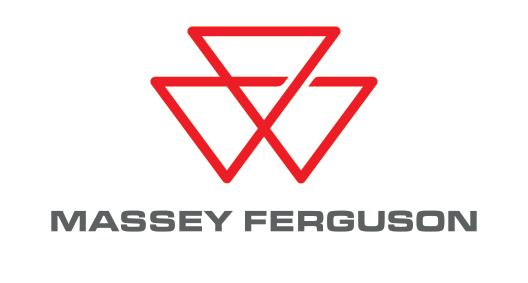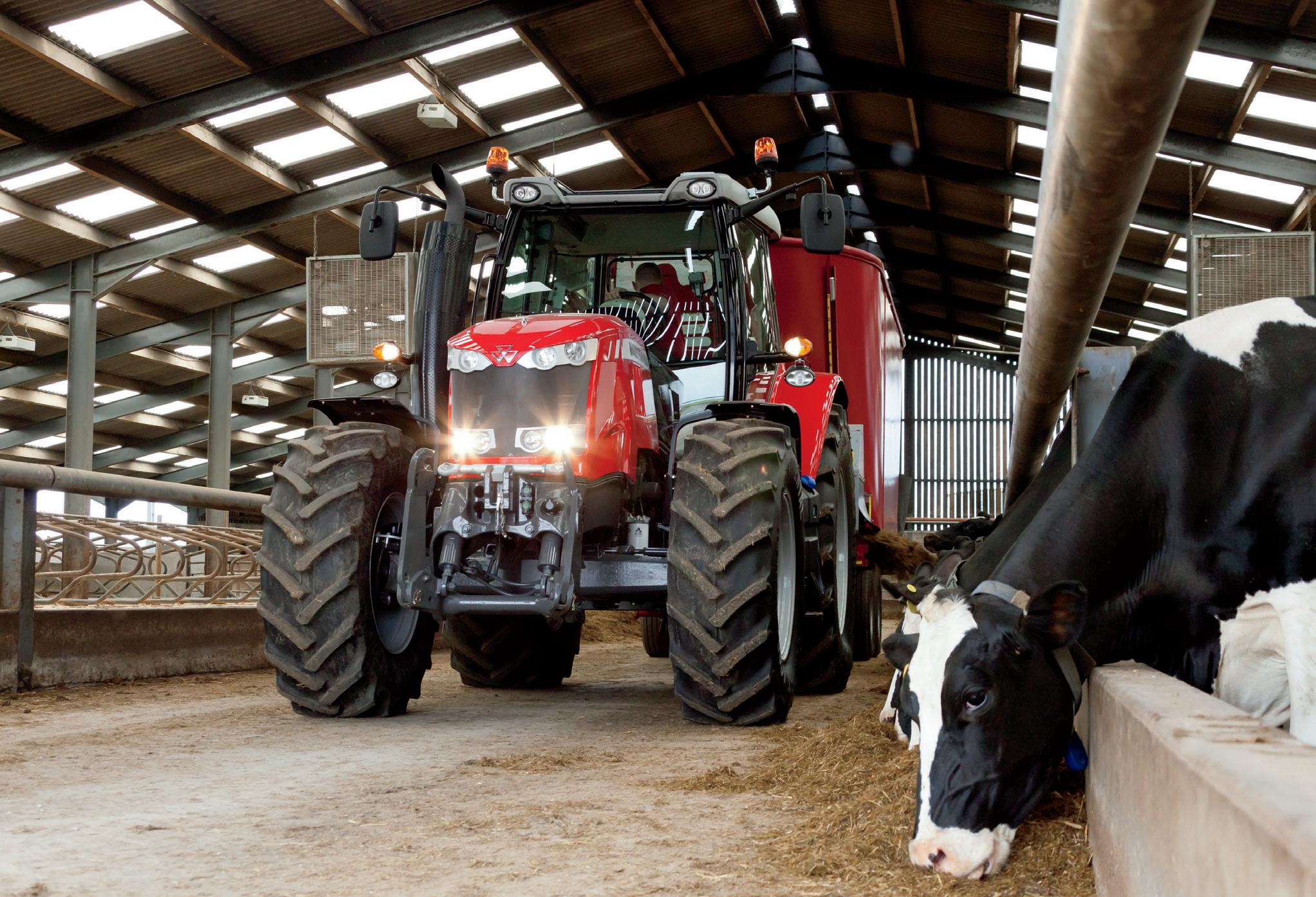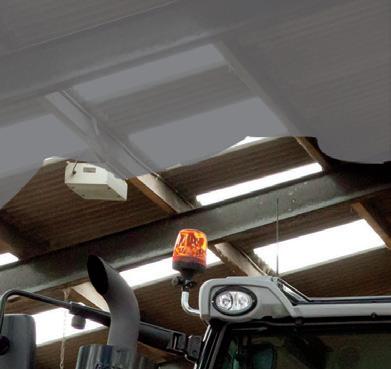Lifetime of pigs p3
Changes coming p12
Rural Women NZ p27






Win for exporters p44









Lifetime of pigs p3
Changes coming p12
Rural Women NZ p27






Win for exporters p44








The number of kingfishers (kotare), fantails (piwakawaka) and other native birds are increasing on Mark and Devon Slee’s Canterbury farm, thanks to extensive planting in recent years.
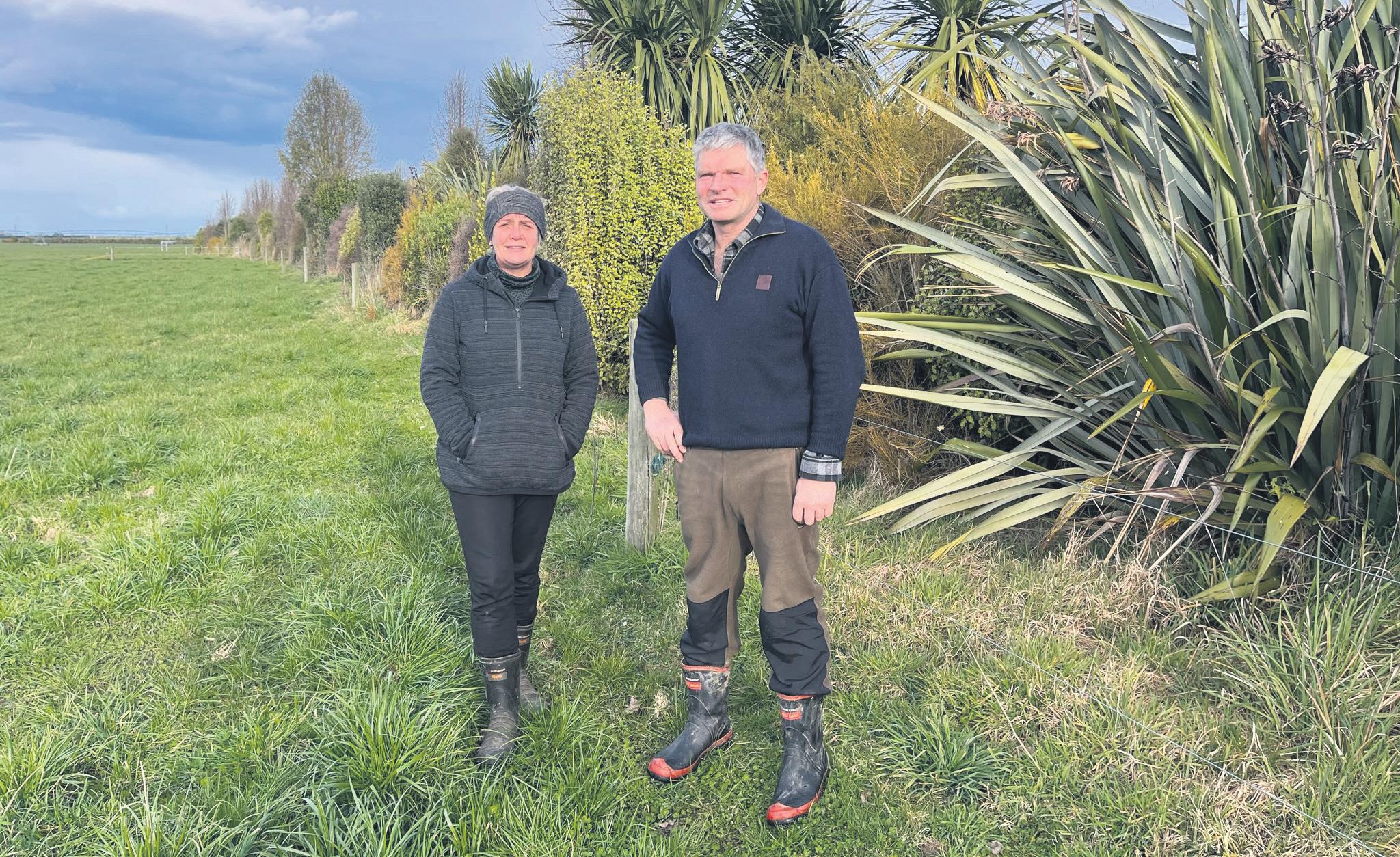 by Kent caddick
and DairyNZ
by Kent caddick
and DairyNZ
The Hinds farmers have planted more than 12,000 native trees and plants across the farm since 2009, including flax, pittosporum, cabbage trees and native grasses.
“Wildlife is important to all Kiwis and we want to be part of building biodiversity and continuing to reduce environmental footprint,” Mark said.
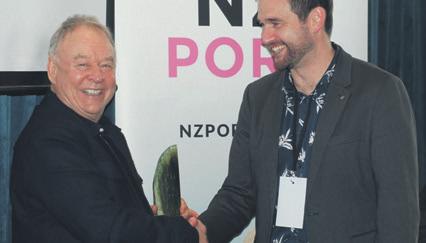
“Trees planted throughout the farm also provide shade and shelter for cows.”
Mark and Devon have been farming for 33 years and bought Mark’s parents’ farm in 1995. They now own three properties, with couples managing each farm.
“Farming has changed a lot over the years. Decades ago, there weren’t a lot of environmental regulations and farming focused more on production and dairy product quality. Now environmental sustainability is equal-
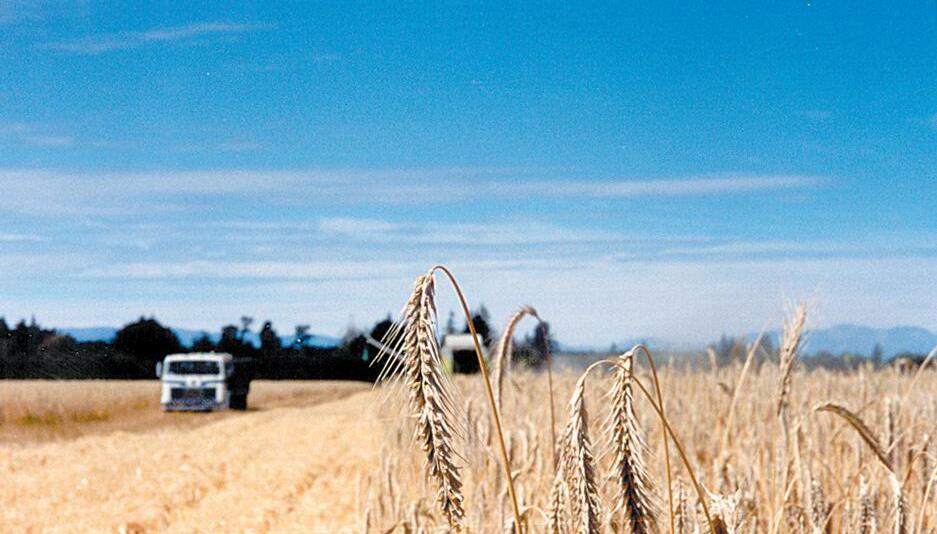
ly important,” Mark said.
Mark and Devon strive to achieve goals ahead of targets set by central and local government. In their local area (the Hinds catchment), Environment Canterbury rules require farmers to reduce nitrogen loss from their farms by 15 percent by 2025 (compared to 2009-2013). They must also reduce nitrogen loss by 25 percent by 2030 and 36 percent by 2035.
Our team can work to support your business growth or give you peace of mind around planning, property or personal matters. Talk to us today about how we can help.

FROM PAGE 1









Mark said the family farms are on track to achieve this. They’ve reduced nitrogen fertiliser use by more than 30 percent over the past six years, down to 178kg nitrogen per hectare per year. They did this ahead of the government’s 190kg cap that took effect last year.

Mark sees challenges such as reducing fertiliser as opportunities.
“As well as environmental benefits, farmers save money by using nitrogen more efficiently. By keeping our costs manageable, we can keep making improvements.”
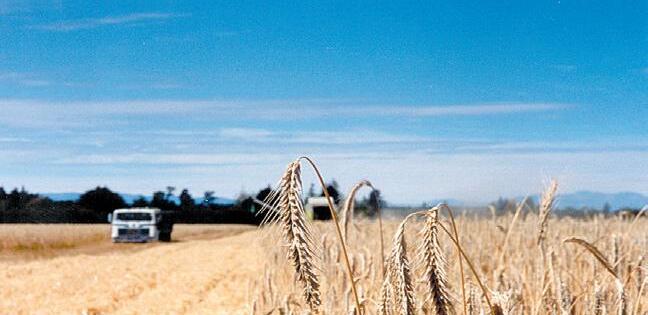
The Slees focus on efficient water management, with Mark saying irrigation is one of the biggest factors Canterbury farmers can control. The couple use only the amount of water needed for grass growth, which is determined by real time data coming from their soil moisture monitoring system.
The Slees also take steps to reduce greenhouse gas emissions, including reducing cow numbers. Less feed is trucked onto the farm which reduces transport emissions. Instead, they focus on growing more grass and clover on their farm.









“Reducing emissions and nitrogen fertiliser is a win-win – we’re reducing environmental footprint while reducing our costs which contributes to business viability.”

In a Canterbury initiative, Mark works closely with dairy farmers in the Hinds and Selwyn catchments in the DairyNZ-led Meeting a Sustainable Future project.
DairyNZ and partners support farmers in developing and taking actions to reduce nitrogen loss, including improving irrigation efficiency and reducing cow numbers.
A key focus of the project is helping farmers meet government regulations while ensuring farm viability.

Farmers are also planting alongside waterways, which helps improve water quality by reducing nitrogen entering waterways and groundwater – a key focus in Canterbury.
Planting alongside waterways also provides shade for fish and other aquatic life and helps improve biodiversity in and out of the water. This is important for improving ecosystem health and mahinga kai values of waterways.
The grazing herb Ecotain plantain is also used being used by some farmers in the project, which research shows can reduce nitrogen loss from dairy farms.
The project’s 40 partner farmers, including the Slees, trial options on their farms to reduce nitrogen loss. Knowledge is shared with other farmers through field days and events, with more than 500 farmers attending so far.
“It’s great to talk to other farmers about what’s working for them to meet nitrogen reduction targets and other steps to reduce environmental footprint,” Mark said.
The Meeting a Sustainable Future project is one of a range of catchment projects DairyNZ and partners are working on with farmers, communities and iwi to improve water quality.
Catchment work is widely recognised as the way forward for improving environmental outcomes in productive catchments such as Canterbury. It allows farmers, DairyNZ and partners to explore, develop and share tailored solutions and tools, which is better than a national ‘one-size-fits-all’ regulations approach.
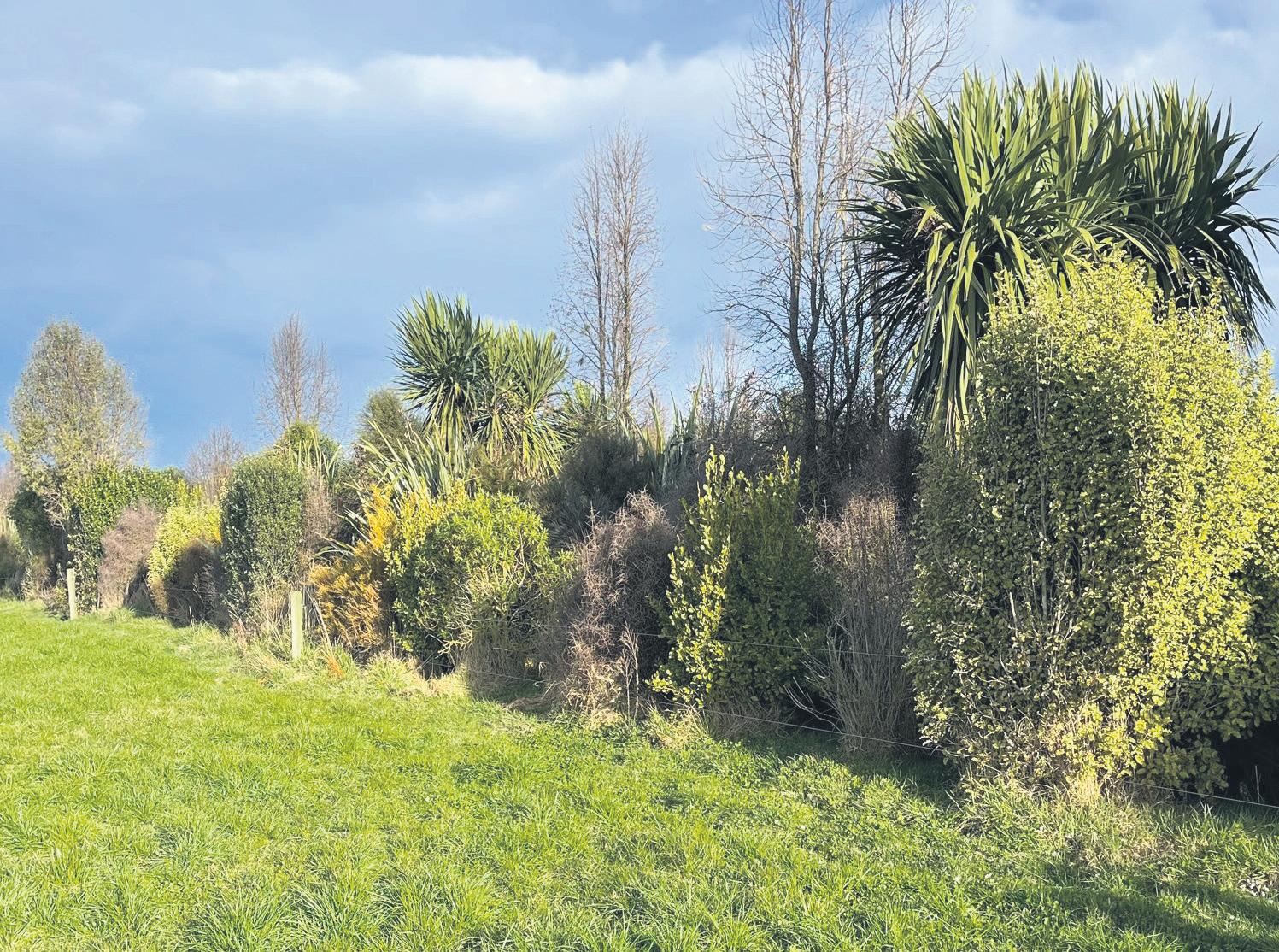
An innovative Canterbury pig farmer and committed industry leader has been recognised for his contribution to New Zealand’s pork sector with an Industry Lifetime Achievement award.
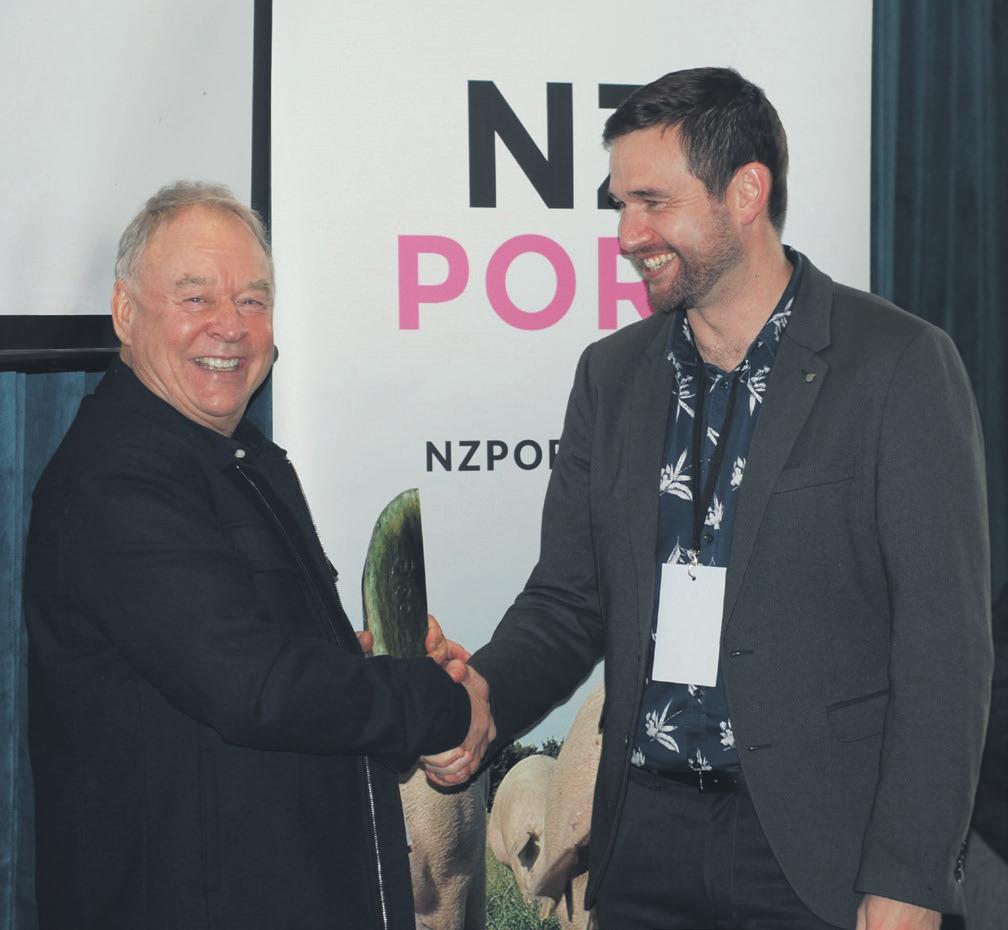 ] by Kent caddick
] by Kent caddick

Chris Trengrove, who farms west of Christchurch on the Canterbury Plains, began his career in banking before switching to farming in the late 1980s.
He served on the NZPork Board for 15 years, nine of those as Chairman, and was instrumental in the development and introduction of the sector’s PigCare welfare assurance programme and a major review of import health standards.
Known for his innovative approach to pig farming, Trengrove designed a novel purpose-built farrowing system to reduce piglet losses. He also pioneered artificial insemination for outdoor pig herds in New Zealand.
Brent Kleiss, chief executive of NZPork, said Mr Trengrove has made an immense contribution to the sector.
“Chris has invested time and energy serving our sector and New Zealand agriculture over many years and established international links with pork industries, researchers and organisations. He also has a deep commitment to research and pork industry training.”
Meanwhile, Tayla Steele, who works for Patoa Farms in North Canterbury, and Regan Driever of the Stanley Brothers pig farm near Opunake in Taranaki, were joint winners of the 2023 Stockperson of the Year award.
Tayla Steele spent a number of years working at thoroughbred racehorse studs before joining Patoa Farms 14 months ago. She
has gone on to gain an NZQA Level 3 in Pig Husbandry.
“I was looking for a change and wanted to move to North Canterbury because it’s a

lovely location to live,” Steele said. “I’d never had anything to do with pigs but knew a few people in the industry and they enjoyed it. I really like working with pigs. They

Recognition: canterbury pig farmer chris trengrove (left) receives his Industry Lifetime Achievement Award from NZPork chief executive brent Kleiss.
are inquisitive, smart and playful.

“I see myself in the sector long-term. It’s a good way to step into farming if you have no farming background. For anyone interested in farming, I’d say give pig farming a go. You don’t need any experience – you’ll get help to learn everything as you go along.”
Regan Driever joined Stanley Brothers two ago, straight from school, having enjoyed a stint of work experience at the farm. He has gained his NZQA Level Three in Pig Husbandry and plans to study for his Level Four next year.
“I’m always learning something new,” Driever said.
“There’s so much involved – nutrition, pig welfare, biosecurity and I really enjoy working with the pigs.
“I see it as a long-term career and I’d encourage any young people interested in the sector to apply for work experience and see what they think.”

The election campaign is reaching its final weeks. It’s easy to take for granted that we get to have a say in who governs the country, but over a third of the world’s population live under authoritarian rule and have no say.

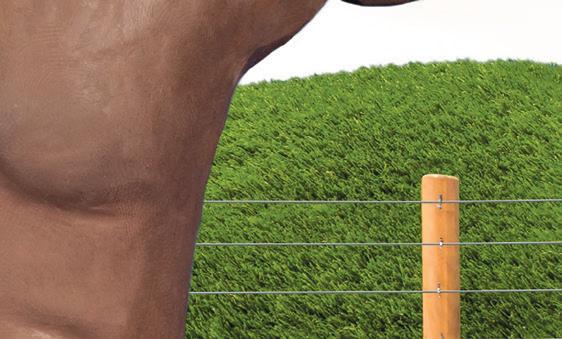

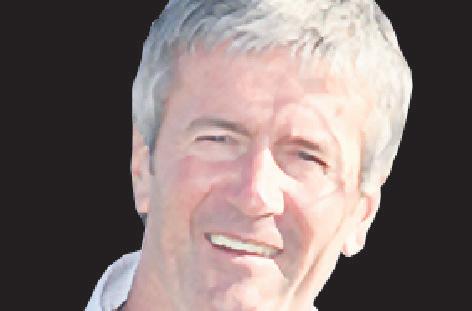



In its most recent Democracy Index, The Economist ranked New Zealand second in the world behind Norway for the integrity of our democracy. This is something all Kiwis should be proud of.
Along with election season come the debates.
I enjoyed the Rural Issues Debate at Mystery Creek in September. I’m well aware that the audience is never stacked with Labour supporters at these events, but I believe that Labour governments don’t get fully acknowledged for the things we have done to benefit farmers over the decades. If anything, there’s a bias against us.
That came to mind in the debate when I was asked about the Federated Farmers confidence survey results.
I pointed out if you line up the food and fibre export results since 2009 with the net positive/negative outlook from farmers, you see negative outlook levels since we became government in 2017, despite the fact that export revenue has surged 50 per cent to a record $54.7 billion during that time.
It’s a crude measure, but it’s worth reflecting on.
During the same period we’ve opened up more trading opportunities for our exporters than any other government – four free trade agreements (FTAs) signed and three upgraded. That will see nearly 75 per cent of our trade covered by a legally enforceable agreement – up from 50 per cent in 2017.
Indeed, it was the Helen Clark Labourled government that opened and negotiated our FTA with China. When Helen announced the China FTA it was estimated that the deal would increase our exports by $225 to $350 million a year. It did that, and more: exports reached $21.9 billion in 2023.
In the 1980s it was the Lange government that removed the subsidies. It was a very difficult time for farmers and I was among the protestors, but who would have thought we’d halve our sheep numbers and maintain our production?

It was a Labour Government that was prepared to tackle restructuring the dairy sector by introducing legislation to allow the setup of our biggest company Fonterra. I’m a big believer in the cooperative model.

We went into bat for our dairy farmers by taking Canada to task on denying access to their market that was agreed under the CPTPP FTA. It was announced in September that we won this international dispute.

I absolutely acknowledge that there are


tough times going on out there, but I ask people to stop and look at the evidence. Labour governments are prepared to make the tough decisions, not just do what wins votes.
We took on the banks when the ethics of interest rate swaps was revealed. Rate swaps saw some farmers being mis-sold products they didn’t understand, which then crippled them financially. We introduced the Conduct of Financial Institutions Act to protect farmers. The future of that law is at risk this election.
Attacks on this government around fiscal management just don’t stack up. Net debt currently sits at $71 billion. As a proportion

of New Zealand’s GDP, that’s lifted from 9 per cent in 2018 to 19 per cent this year. When the previous government handled the GFC, net debt as a percentage of GDP took a 6-fold increase from 3 per cent to 18.9 per cent.



That’s what happens when you’re dealing with unprecedented global events.
The independent data confirms the economy is growing, we are not in a recession, inflation appears to have peaked. I don’t mind criticism, but I encourage critical thinking that tests assumptions.
Thanks for being engaged in one of the world’s strongest democracies.
The Show season kicks off at the Ellesmere A & P Showgrounds near Leeston on October 14.
With the theme of this year’s show being ‘Mooving Our Community Together –Te neke tahi to tatou hapori’, the Ellesmere Association will be demonstrating the many different facets of the dairy industry and what an important part it plays in communities across the country.
This year the Show President is Jeff Wheeler, a well-known dairy farmer from Southbridge and one who knows the challenges involved with being a dairy farmer. Wheeler has been in dairying most of his life and has seen many changes to the industry.
“We are lucky to live in a country where our farmers are regarded as being the best in the world at what they do. The many dairy farmers across the country have had to be adaptive and innovative of recent times, making excellent and innovative changes on-farm and big efforts to improve the environment,” Wheeler said.
“The dairy industry employs many across the whole sector to keep farms operating
as well as the factories, transport, exporters, local retail and hospitality; both locally and from overseas. At the same time it also adds to the cultural life of the community and makes a massive contribution to our schools, sporting clubs, charity groups and nationwide economy.”
Much like dairying, on Show day work often starts before the sun rises, and is the culmination of months of planning that ends in local, regional, and even international competitions. Events like wood chopping, shearing, highland dancing, and equestrian can all contribute to an individual’s overall points for the competitive year. Sections are there for the love it and participants relish the opportunity to showcase their craft, produce, livestock and skills to the public, maybe even inspiring the next generation of farmers.
“It’s the atmosphere on the day and the buzz of being with like-minded people that keeps them coming back year after year,” Wheeler said.
“It’s not only our competitive sections that make show day what it is, we also have some great local entertainment, excellent hospitality, fantastic retail stalls, local and regional trade exhibitors, and a large side show alley.”
At the moment, many people are facing pressure to put food on the table and pay the bills, and there is growing concern about how our rapidly changing climate is impacting homes and communities across New Zealand.
by teanau tuionoFortunately, there is a solution that can address both of these challenges simultaneously.
The solution is to create warm, dry, energy-efficient homes that are heated using clean, affordable, energy generated from rooftop solar.
Recently the Green Party announced its Clean Power Payment, a policy designed to not only reduce costs for families but also to take meaningful action against climate change, and make homes and communities resilient to increasingly severe weather events.
Rather than allowing families to struggle with cold and draughty homes, as has been the case in the past, the Clean Power Payment aims to improve the quality of homes, making them warmer and healthier.
Rural areas like New Zealand’s face particular challenges. Residents not only want warm and well-insulated homes but also have to contend with high energy bills, the need to reduce their carbon footprint and adapt to a changing climate. Rural communities have already suffered from several ‘unprecedented’ weather events this year, including floods and cyclones which left communities cut-off and vulnerable.
The Clean Power Payment offers a comprehensive solution to address these concerns.
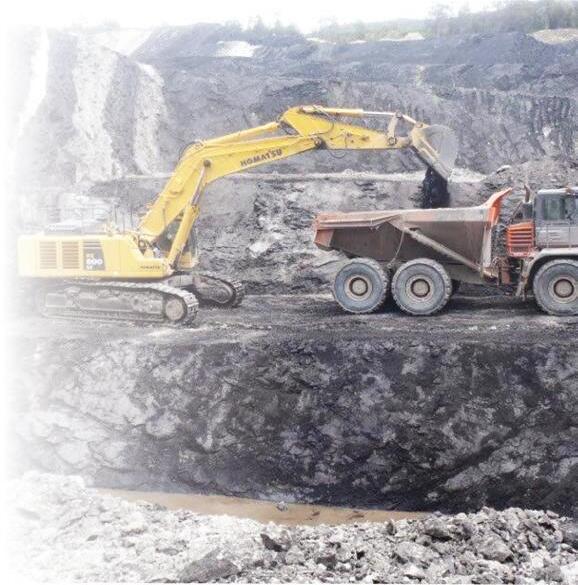
At the core of this plan is financial assistance that allows people to upgrade their homes and transition to clean, resilient energy sources.
Through a mix of grants and interest-free loans, the Clean Power Payment will help people cover the upfront cost of things like better insulation; replacing fossil-fuel appliances, like gas heaters, with clean alter-
natives, like heat pumps; and purchasing rooftop solar power.
Importantly, the Clean Power Payment is not limited to homeowners; it extends to rental properties as well. Landlords who invest in energy-efficient upgrades, such as solar panels or electric heat pumps, can benefit from tax deductibility, capped at $18,000 per property, up to a maximum of two properties. This encourages landlords to make their rental properties more comfortable and cost-effective for the 1 in 3 New Zealanders who rent.
The statistics underscore why this initiative is so crucial. Over 110,000 households in Aotearoa struggle to keep their homes warm, and more than one in five homes suffer from dampness.
Solar offers substantial savings by generating electricity at a lower cost than traditional grid electricity. While approximately 290,000 homes in Aotearoa rely on fossil gas for heating, cooking, or hot water, only 2% have embraced solar panels, a significant contrast to Australia’s 30%. In 2020, fossil gas emissions from homes in Aotearoa were equivalent to the emissions from over 200,000 cars.
Solar on roofs and batteries also means that when the power goes out, homes stay up and running. Connecting homes with rooftop solar to the local grid is a huge opportunity for locally distributing clean, cheap power, so our communities are resilient to weather events and power outages.
The Clean Power Payment isn’t just an energy initiative; it represents a path toward a more sustainable, resilient future for rural New Zealand.
It empowers residents to manage their energy costs, reduce their environmental impact, and create more comfortable homes. It highlights the potential of innovative solutions and collective efforts to address the challenges of energy affordability and climate change.
The weekend after the Ellesmere Show the Northern A&P Association will stage its 150th Show at the Rangiora Showgrounds on Labour Weekend.

The Rangiora Show showcases the best of rural North Canterbury and attracts competitors and visitors from across the Canterbury region and the wider South Island.

The event features some of Canterbury’s best equestrian and rural sporting talent, including show hunter events, shearing, wood chopping, dance competitions and dog trials.
Show goers can also visit the livestock competition featuring entries from the region’s top breeders, including sheep, cattle, poultry, alpacas and more.
The first Show month culminates with the Ashburton Agricultural & Pastoral Association Show on Friday 27 and Saturday 28 October.
The Show is the largest two day annual agricultural event held in the Mid Canterbury District and will once again be held at the Ashburton Showgrounds on 17.4 hectares of land owned by the Association since its founding in 1877.

the theme for 2023 Show is ‘Let’s create a buzz: bees, Bugs and Butterflies’.
Showtime: there will be plenty to do and see at the annual Agricultural & Pastoral Association Shows around canterbury which start this month.


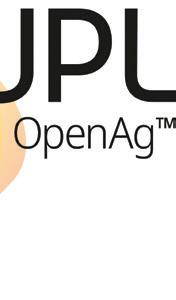








Agriculture is the powerhouse of the economy when rural New Zealand does well all of New Zealand does well. That’s why National is single-mindedly focused on getting Wellington out of farming and backing the primary sector.
Christopher Luxon and I recently released our Primary Industries Growth Plan on a farm in Canterbury, the first stage in National’s manifesto to rebuild the economy.
We’re focused on cutting red tape and costly regulation and putting trust back into farming. Last year the primary sector was responsible for $55 billion of exports and employed more than 360,000 people.
This year I have announced a wealth of policy that will get farmers out of the office and back onto their farms.
We have announced plans to repeal Three Waters and the Ute tax and to dump the Natural and Built environment Act, the costly bureaucratic replacement of the RMA, within our first 100 days.




• Establishing a permanent Rural Regulation Review Panel to evaluate every local and central government rule and regulation affecting farmers and propose better solutions.
• Establishing a “no duplication” rule so that the government can only ask farmers for information once.


• Establishing a 2-for-1 rule, meaning for every rule or regulation government and Councils impose on rural New Zealand two must be removed.

• Considering the cost of every rule on farmers and publishing the analysis.
• Making appointments to reference and advisory groups based on skills and experience, not politics.

• Committing to real consultation – officials must consult on a genuine, open, and transparent basis and respect differing views.









We’ll also make it easier to build water infrastructure by making water storage on land a permitted activity allowing greater productivity and better outcomes for freshwater.
To combat the struggle of acquiring staff, National will double the number of workers under the Regional Seasonal Employers (RSE) cap, change the Accredited Employer work visas for agriculture to create a path to residency, eliminate the median wage requirement to allow wages in line with local workers, and allow working holiday makers to stay longer and visit more often.
Changing the National Policy Statement for Highly productive Land will allow for a broader range of productive rural activities such as on-farm storage ponds, RSE worker accommodation and other rental accommodation options.
Within one year of taking office, we’ll make growing vegetables for human consumption a permitted activity under the Resource Management Act, introducing a National Environmental Standard (NES) for commercial fruit
and vegetable growers so they don’t need a resource consent to produce more food.
The well-being of rural communities is paramount. More than 600,000 New Zealanders live in rural New Zealand. It’s vital they can access healthcare and other public services.
We’ll establish a third medical school at the University of Waikato, producing more doctors for provincial New Zealand. Assistance for nurses and midwives with student loan repayments will keep them in New Zealand, bolstering our health workforce.
Farmers across New Zealand have an important decision to make on October 14. National understands the challenges you face and has offered our commitment to reducing regulatory burden, ensuring water security, boosting agricultural productivity, and promoting sustainable practices.


Rural New Zealand has been doing it tough with rising costs and sky-high interest rates.
‘Farmers across New Zealand have an important decision to make on October 14.
The chance of a Cantabrian winning the coveted New Zealand Young Horticulturist of the year title has doubled thanks to landscaper Caleb Washington.


The Christchurch-based Washington, who is an operations manager at Goom Landscapes, has won the Young Landscaper of the Year title, which gives him right of entry to the national Young Horticulturist Competition.
Also attending the competition finals in Auckland on November 7 and 8, will be Christchurch’s Lydia O’Dowd who was recently judged NZ’s Young Plant Producer of the Year.
Washington and O’Dowd, who is head propagator at Southern Woods Nursery in Rolleston, will be competing against each other, and five others from within horticulture sectors including floristry, arboriculture and wine growing, for example.
Washington’s career journey initially involved agriculture and commerce study at Lincoln University. During and after university he spent time in the rural sector before circling back to the family business – his parents and an aunt and uncle are directors of Goom Landscapes.
His time in landscaping began in Wanaka where he spent 3.5 years as a foreman/pro-
ject manager for Goom Southern Lakes. He then moved back to Christchurch as a Goom Landscapes foreman, eventually working his way up to operations manager.
An average day at work for Washington involves meeting with clients, subcontractors and staff members with tasks involving, for example, work scheduling, budget forecasting, as well as team and resource management.
“I really enjoy my position and where I am at in the business,” he said.
“Going forward, I would like to keep building on this, and my team, so that we can continue leading the way in landscaping while being as efficient as possible.” he said.
In order to win the Young Landscaper of the Year title he competed in a series of mini challenges involving paving, plant identification and speech making.
Competing against Washington (Young Landscaper of the Year) and O’Dowd ( Young Plant Producer of the Year) are: Tahryn Mason (Young Viticulturist of the Year); Meryn Whitehead (Young Grower of the Year); Jason Gwynn (New Arborist); Renee Johnson (Young Amenity Horticulturist); and Sarah Ewe (Young Florist/Flower Grower).
Finals bound: christchurch landscaper caleb Washington will be the second Cantabrian heading to the final of the New Zealand Young Horticulturist competition after winning the Young Landscaper of the Year title.
Germinal has a unique understanding of pasture systems. For over 30 years, our plant breeding has been focused on providing farmers with solutions that improve productivity and profitability, while addressing environmental impacts.
Our specialty is driving the most efficient protein conversion into meat and milk. With meticulous research, we have developed cutting-edge grass and clover cultivars that naturally advance the competitive advantage of New Zealand’s grazing system.
Germinal pasture advantage supersedes previous feed measures, utilising digestibility, along with palatability – animals can simply gain more from less.
When production, profit, and footprint matter, ask for Germinal.
For more information:
0800 171 825
www.germinal.co.nz
 ] Forsyth Barr
] Forsyth Barr



While in 2022 most global economies faced similar issues — high inflation requiring rapid interest rate increases — the path of economies and markets around the world has diverged this year.
In the US, inflation has quickly fallen back to 3.3%, and, all things considered, the economy looks to be holding up quite well. Strong performance from large technology stocks continued to support the US stock market, while company earnings during the most recent reporting season generally matched or beat expectations.

Returns in European markets were robust over the quarter and strong year to date, while the Australian market has been solid but not spectacular. The New Zealand market has been a laggard, reflecting its greater sensitivity to higher interest rates than most, due to the high weighting of defensive dividend paying stocks.
These divergent performances year to date once again highlight the importance of having exposure to a range of different regions and sectors in your portfolio..
The tougher month for markets through August was, in part, due to concerns over the health of the Chinese economy. The Chinese economy is struggling to shift away from a heavy reliance on construction, to

drive growth to one with more weight from domestic spending. The flow-on effects from slowing Chinese demand are being felt in Australia and New Zealand where demand for export commodities is declining.








The Reserve Bank of New Zealand (RBNZ) updated its forecasts in August and now expects the official cash rate (OCR) will stay at the current level of 5.5% through until early 2025.

Inflation pressures in the NZ economy are slowly abating as the economy cools — headline inflation has pulled back to 6% but it still has a way to go to reach the RBNZ’s 2% target level.
The New Zealand economy experienced a technical recession (two consecutive quarters of negative growth) at the start of 2023. While growth may bounce up and down, slightly positive or slightly negative, for the next few quarters, the overarching outlook is for a sluggish economy for the rest of 2023 and into 2024.
High interest rates are hindering consum-









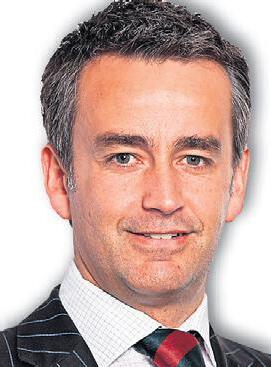

er spending, while business investment and weaker commodity prices are depressing our export sector. Government spending is also likely to be lower regardless of the election result.
While we don’t expect New Zealand to experience a recession like we did following the Global Financial Crisis (GFC) back in 2009, the economy is likely to feel less exuberant than we have seen in recent years, and the unemployment rate is forecast to pick up from historically low levels. Elections tend to
With the 2023 election coming up quickly it is natural to wonder what influence politics can have on your portfolio. Historical evidence, however, suggests that the impact is less than what most people surmise.

Other factors, such as the strength of global markets, and the level of interest rates, tend to be more important than who is leading our government. Regardless of who is in power, or whether there is a change in government, we don’t anticipate the out-
come to change the outlook for the NZ market or economy in any material direction, in the short-term at least.

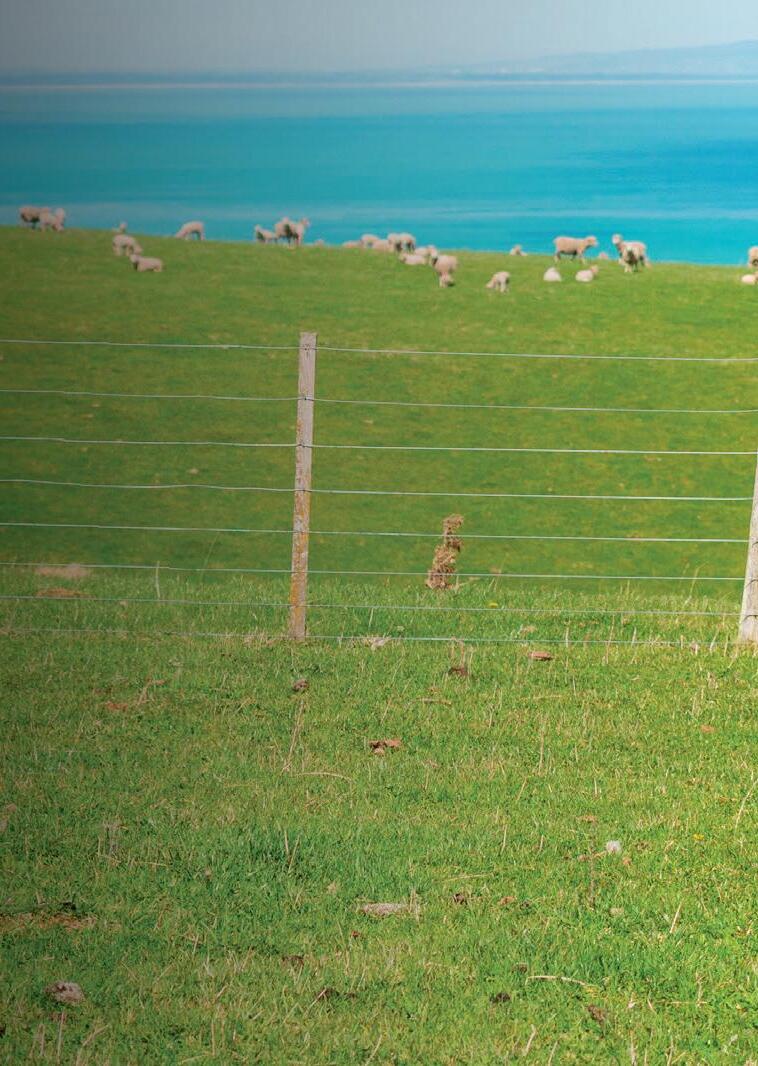
this article was prepared as at 31 August 2023 and provides market commentary for the three-month period ending on that date. We appreciate that market volatility and economic uncertainty doesn’t make an easy backdrop for investors. to discuss your investment options please contact Andrew Wyllie, who is an Investment Adviser and is Forsyth barr’s christchurch Branch Co-Manager. He can be contacted regarding portfolio management, fixed interest, or share investments on 0800 367 227 or andrew.wyllie@forsythbarr. co.nz. this column is general in nature, has been prepared in good faith based on information obtained from sources believed to be reliable and accurate, and should not be regarded as financial advice.
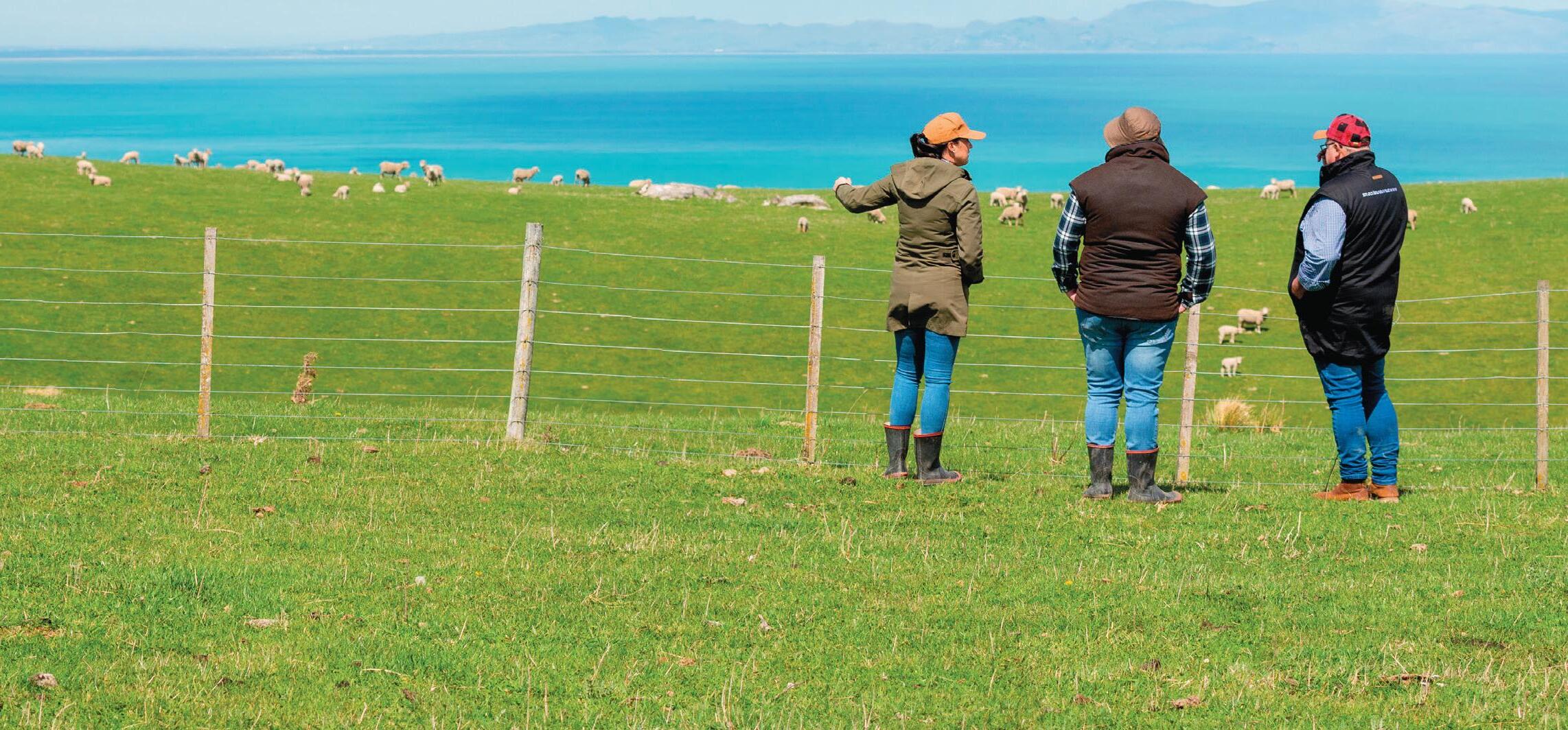
]
‘
Factors, such as the strength of global markets, and the level of interest rates, tend to be more important than who is leading our government.



Taking a step back from the daily management of the family farm can be a difficult stage of life for some parents, particularly for those considering the transfer of farming assets to the next generation.







With the rise in property values, interest rates and farm working expenses, the ease of the next generation raising sufficient equity to enable a fair and equal succession is becoming increasingly onerous. As a result, succession is often delayed until later in life or avoided altogether.
Succession is a process which involves the whole family and should result in a member of the next generation taking over the farming operation on terms agreed by parents and their children.
Involving trusted professionals such as a bank manager, accountant, farm advisor and lawyer from the outset will assist with the bringing together of viable and appropriate individual and family viewpoints.

Trusted professionals can provide an objective view to the existing profitability of the farming operation and the viability of economic growth.
A farming operation in the midst of succession will likely need to financially support


the exiting parents (such as the purchase of a property off-farm and sufficient ongoing maintenance payments), enable a distribution to non-farming children and have the ability to raise sufficient profit to encourage the success of the farming operation in the hands of the next generation.
The existing financial books will need to be sufficiently healthy or the farming operation will need to have scope for economic growth to support the period of transition.
Engaging these trusted professional early can iron out the viability of succession for a family. Early discovered flaws may be able to be remedied with time and it may be that a restructure of assets is required.
For example, if a lack of non-farming assets is preventing a more equitable succession, time may enable the purchase of these assets or alternatively, it may be that a company or trust structure can enable a progressive transition of equity from one generation to the next.
In some situations, the financial position of the farming operation may mean that succession is simply not viable and the farming
operation may need to be sold instead of being transferred to the next generation.
Although this may be a heavy conclusion, families are better to be aware of the longterm outcome. For children, it is particularly important that this discovery occurs at an age where they might look to alternative opportunities.
The rural team at Helmore Stewart believe that the early commencement of succession planning (often with delayed implementation)
coupled with the right approach, can result in succession that adequately meets the goals of each unique family.
An assessment of the operational, financial, legal and accounting aspects of the family farm can provide for an all-round robust succession plan. A robust succession plan is one that encompasses a changing landscape and fits with each family’s goals and aspirations, as opposed to being a model that the family must fit into.
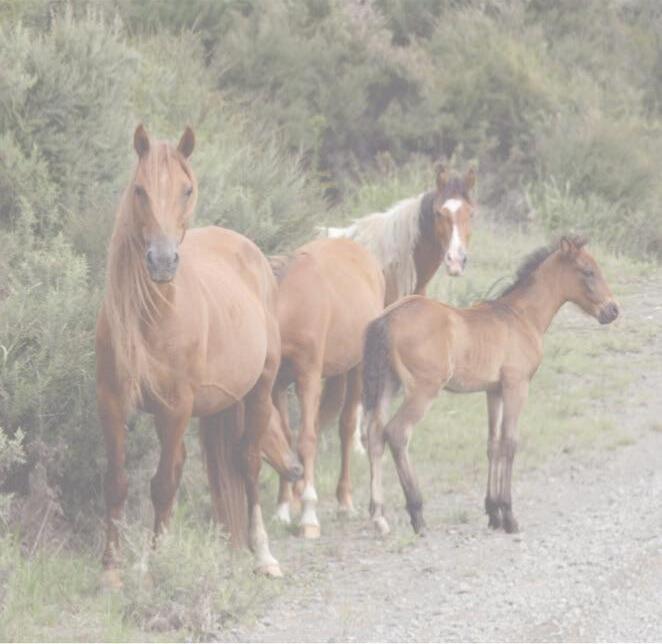


Hello everyone, I hope the early days of spring are finding you well. Thanks for the opportunity to bring some mental health and wellbeing tips to Canterbury Farming.
out and connect when times become tough. If there is one thing I could say to a few I’ve known that have taken their lives over the years it would be… “bloody hell mate, why didn’t you talk to me?”
For us older generations, the idea of sharing our problems with our wife/husband/ partner/mate etc does not always come naturally. We’ve been taught not to show our weaknesses and if we’re not coping, we think we’ll be judged.
I was raised in North Canterbury and spent the first 15 years after leaving school in farming and forestry roles so I have some appreciation for the challenges of working and living in this sector.
I’m from generation X (born 1965 to 1980) so I grew up in an era where work meant “head down, ass up and don’t complain or talk about your feelings.”
Those days are well and truly behind us now. However as Kiwis, particularly those of us who are males, we still struggle to reach
Today’s younger workers expect good communication and understanding from their bosses so if we’re not listening when they talk about their problems, it can cause real challenges with the working relationship. It might be out of your comfort zone but I would encourage you to support them in this situation.
A key tip for improving your mental health and resilience is to recognise the triggers that lead to you not being able to cope. Try to catch those thoughts and reach out for support before things become too much.
There are many types of triggers – financial pressure, relationship stress, staffing issues, working in isolation, to name just

A quick review of NZ made joint supplements found none with the recommended levels of Chondroitin Sulphate. I did find two quality US made supplements for sale in NZ that do meet this standard, as does my joint supplement.
The International research and recommendation of CS for osteoarthritis (OA) is not in dispute. It has been available on prescription in Europe at doses of 800mg+ (daily) for over a decade.

There are numerous overseas companies that manufacture supplements that have therapeutic levels of CS.
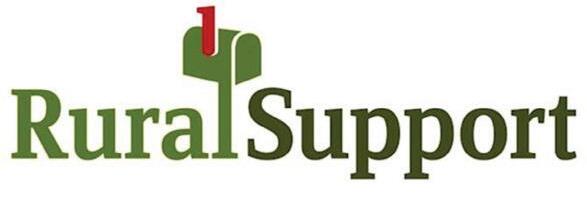
This begs the question as to why not in NZ? What could be the reason NZ companies exclude therapeutic amounts of CS?
A quick check on the most extensive online supplement store found that most NZ made joint supplements, including the biggest selling products, had on average of only 200mg of CS when research recommends 800mg.
Typically these are marketed as a ‘onea-day’ products that are mostly glucosamine with little or no chondroitin. The only reason I can conclude is the cost of chondroitin. I have just purchased a new batch of high grade avian-sourced CS and the cost is about 9 times that of glucosamine.
I have no doubt that most of the benefits people get from my joint supplement are from the chondroitin. Scientists have identified about 30 therapeutic benefits of chondroitin has on the chemistry and function of joints and the joint capsule.
Whilst some of these are complex, the benefits are mostly to improve the function of cartilage-secreting chondrocyte cells and by regulating destructive enzymes and joint capsule inflammation.
The bottom line is usually less pain and more mobility. By way of example, I have been helping someone with osteoarthritis in his feet which restricted his ability to exercise. He noticed improvements after two months and now has significant improvements.
John Arts (b.Soc.Sci, Dip tch, Adv.Dip.Nut.Med) is a nutritional medicine practitioner and founder of Abundant Health Ltd. For questions or advice contact John on 0800 423559 or email john@abundant. co.nz. Join his newsletter at www.abundant.co.nz.


a few. No one will judge you for putting up your hand to say “I’m struggling”. If you don’t have someone close that you feel you can reach out too, call your local Rural Support Trust in the first instance.
Sometimes just getting off farm can really help you to clear your head and connect with others. If you’re under 31 years of age, try joining your local Young Farmers club. These clubs are a great way to connect with like-minded people who probably have simi-
lar struggles. Taking up a sport to keep active is a great way to look after your physical health and make new connections at the same time.
Just getting away from what is troubling you for a short time can really shift your thinking and make you feel better about the world.
Regardless of how you are feeling mentally, it’s really important to try and eat well, get some exercise and plenty of sleep. A simple focus on your total wellbeing will ensure that you’re better able to cope with life’s ups and downs when they inevitably occur. Take care out there.
Kereama is the Founder of Kereama consulting, a sole trading enterprise specialising in health and wellbeing in the workplace via workshops or with the individual. Kereama is a clinical Social Worker with over 20 years working in the mental health and addiction field. He is passionate about wellbeing in the workplace and helping people to develop the strategies and tools they need to stay well and healthy. For more information please go to his website: kereamaconsulting.co.nz or feel free to email kereamacarmody@gmail.com.

What is Bettaflex?
• Bettaflex is a joint support formula to promote healthy joint cartilage function.
• Bettaflex has 400mg (per capsule) of high-grade avian chondroitin, 400mg of glucosamine and 100mg of BioSolve® bioavailable Curcumin (from turmeric).
• Try Bettaflex for 3 months and see for yourself.

How can Bettaflex help?



$99.95 for 3 bottles free freight or 1 bottle for $36.95 plus $5.99 postage 60 Capsules per Bottle
• Chondroitin and glucosamine are building blocks of cartilage.
• Supplementation with correct levels can support healthy cartilage function and cartilage repair processes.
• New BioSolve® bioavailable curcumin helps joint function while gentle on the stomach.
• Research indicates that chondroitin is highly effective at 800mg daily.

John Arts comments:
“My latest Bettaflex formula includes BioSolve® bioavailable curcumin for faster results. The normal dose is 2 capsules daily but I recommend an initial higher dose for 1-3 bottles to saturate joint tissue.”
John Arts, Founder, Abundant Health

Cautions: Do not take with anti-coagulant/platelet medication. If in doubt please consult your healthcare professional. Not suitable during pregnancy or lactation.
Abundant Health


‘Just getting away from what is troubling you for a short time can really shift your thinking and make you feel better about the world.
I wanted to update you on some of the legislation and projects we’ve been working on at Environment Canterbury that will likely mean change for you, and the way you manage your property and business.
 by Peter Scott
by Peter Scott
Last month, after years of community collaboration, amendments were made to the Canterbury Land and Water Regional Plan (LWRP) to make Plan Change 2 operative and Plan Change 7 partially operative.
The changes are zone-specific and include new minimum flows and limits on the volume of surface water and groundwater available for use. The changes also identify key habitats for indigenous freshwater species, additional freshwater bathing sites and salmon spawning areas.
For some of you, this means that new restrictions will be brought in to protect freshwater quality and quantity, and some existing activities that didn’t previously require resource consent, now do.

In addition, Plan Change 7 includes new requirements for farmers in the Orari Temuka Opihi Pareora (OTOP) and Waimakariri zones, to make greater nitrogen loss reductions and exclude stock from waterways.
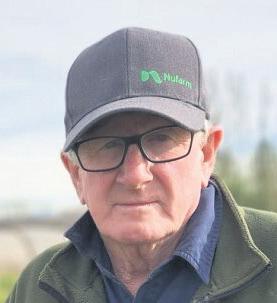
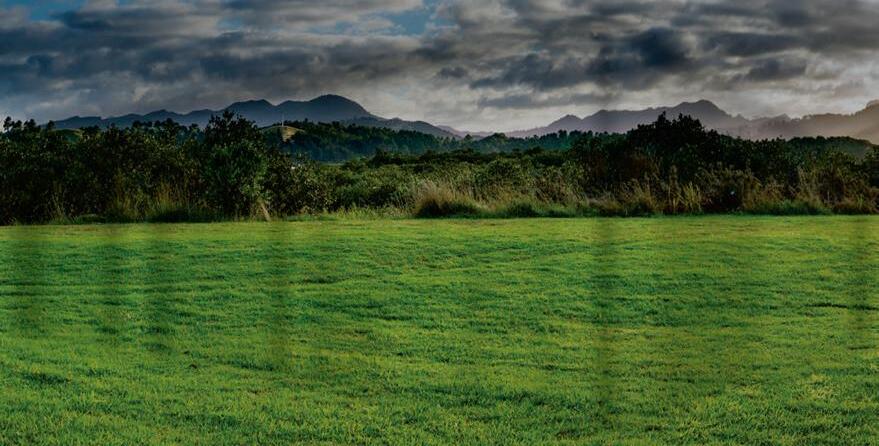




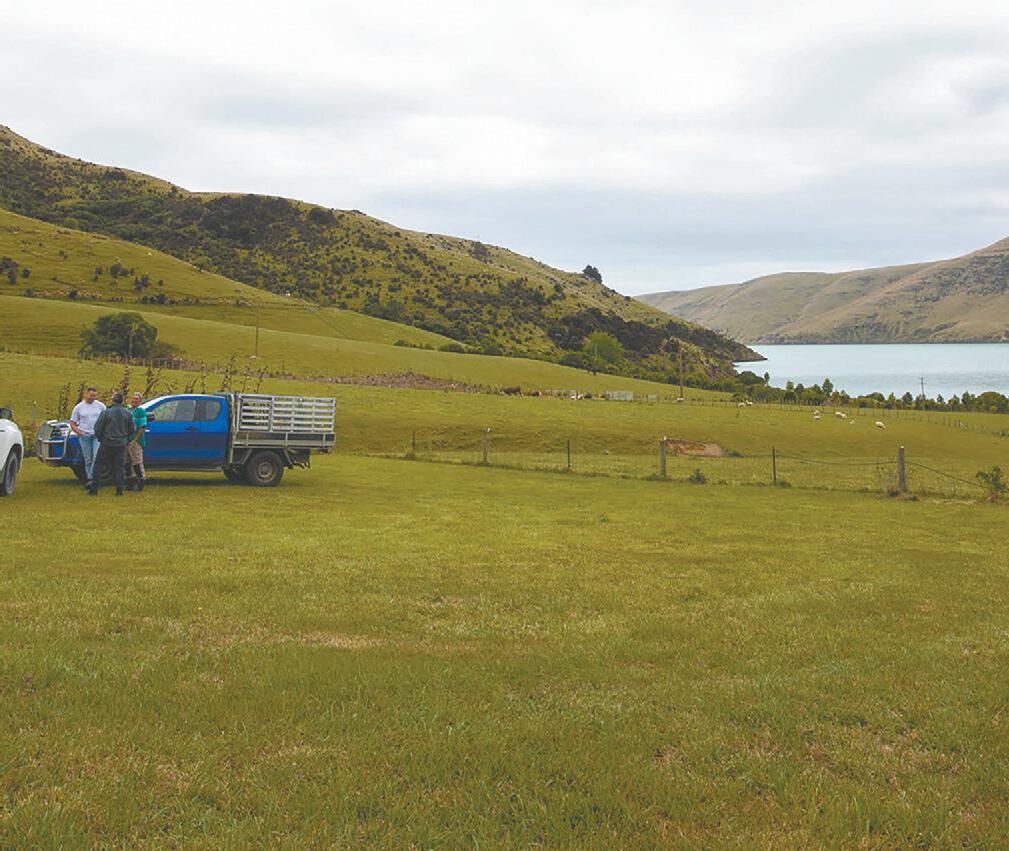
These changes were made because we needed to meet central government objectives under the Essential Freshwater package and improve environmental outcomes for parts of the region.
Together with the Canterbury Mayoral Forum, we have responded to the Draft 2024 Government Policy Statement on Land Transport (GPS) to express our concern about the lack of funding that has been proposed for Canterbury.
Thankfully, the draft GPS includes provisions for two significant road projects that are well overdue, the Christchurch Northern Link and a second Ashburton Bridge. Both projects will improve access and provide economic benefits to the region and national economy.
However, we are disappointed other projects and aspirations that we have earmarked for the region have been overlooked. We’re hoping that a new government will consider our submission and make some changes to what has been proposed.
Earlier this year we asked you to help us answer, ‘What’s our future, Canterbury?’ We ran an online survey, and hosted webinars and in-person events which were well attended.
We asked this question because we are in the process of updating some of our key planning documents and wanted to know what kind of place you want Canterbury/Waitaha to be in the years to come.
In the coming weeks we’ll come back to you about what we’ve heard, and provide information about some proposed Freshwater Management Unit boundaries. We’re also interested to hear your thoughts on different flood management tools, and want to get your opinion on some environmental and climate change aspirations that we have for the region. Keep an eye on our website ecan. govt.nz/ourfuture for updates.
By the time you hear from me again, we may have a new Government.
This could mean there will be new challenges for us to navigate as a regional council, but it will also give us some opportunities that we plan to make the most of.
In the lead-up to the election, I met with
more than a dozen politicians and candidates who responded to the open letter that I sent to political parties and government-hopefuls.
The letter urged candidates to consider the important contribution Canterbury makes to the national economy as they made election promises. It also highlighted some of the pressures and issues we’re grappling with as a region, and spelled out our expectations for how we want to work with the next government.
I will have more to say on the election outcome in the coming months, but in the meantime, I hope the conversations I have had with future decision-makers will result in positive changes for Canterbury.
If you wish to contact me, email me at councillor.scott@ecan.govt.nz

‘New restrictions will be brought in to protect freshwater quality and quantity, and some existing activities that didn’t previously require resource consent, now do.

Class actions are court cases where a group of people with the same or similar interests jointly sue another party with whom they all have a dispute.

In the past class actions have not been part of our legal system. Since the 19th century a claimant could issue proceedings in the High Court as a representative action. The rule permitting that procedure is now well out of date although over recent years there has been an increase in the number of litigants pursuing representative claims.


Litigation funding occurs when an independent person who has no interest in the claims agrees to pay some or all of the costs incurred by a plaintiff in pursuing the claim. If the claim is successful the party providing the funding will recover the funding provided for the case to proceed, no doubt including a substantial payment for their services in providing the funding to pursue the claim. If the claim is not successful the funder will not usually get re-imbursed for taking the risk in funding the claim.
It is common knowledge that the cost for anyone who wishes to take civil proceedings in the Courts is quite prohibitive and many claims are not pursued when the costs have been considered.

If NZ adopted a regime of class actions and/or litigation funding it would make it eas-

ier for many more of us to seek a legal remedy.
The Law Commission has undertaken a comprehensive review of the law relating to class actions and litigation funding in consultation with a number of agencies. It considers that NZ should establish a regime for statutory class actions and litigation funding including recommended rules for both classes of actions. The commission also wanted a new public class action fund for the support of public interest cases and those seeking non-financial claims.
The report has now been referred to the Government for its consideration which may be accepted or rejected. If the Government accepts the Review the proposal will be placed on the list of legislation to be considered.
The current Prime Minister has indicated that if he is re-elected at the general election, he will create a formal class actions regime and work with the judiciary, legal profession and consumer advocates in setting up the scheme. It will all take a lot of consideration and time to put the proposals into our legal system.



I was working for TVNZ at the time and remember to well desperation many farmers faced, the interviews still make be very sad after all those years as the defeated families faced destitution and no way out of it.
I simply hope and pray that the teeth of the looming drought have less impact than our previous ones have.

Comments about the summer of high temperatures in the UK and Europe are very likely to be a prediction of what we will get.
My mind has dropped back to the 1980s when we suffered the most serious droughts I can remember.
Our industry was on its knees with high interest rates and very little irrigation.
Families were walking off their farms leaving all but their personal belongings as banks tried to sort their clients and mortgages out.
The media showed starving stock wandering around dusty paddocks as stories abounded about sheep being slaughtered on farm as they had no value and farmers didn’t want to see them drop dead on their farms.
On our side this year we have irrigation if the reserves hold up. Farmers have time to finish stock early or sell them as dry stock while the prices hold, and in general, farm for the conditions.

Driving arounds our region recently suggests that we have a decent spring which will certainly help set the summer up, but I fear that the recent blasts of Nor-Westers just may be a warning shot.


I am sure that the bankers and accountants who service the farming community will be watching closely, and they would want their clients to be pr oactive with respect to budgets and cash flows.
We all know that budgets should be monitored regularly, and if this drought does hit extremely hard, it will be vital.
In the meantime take a look at those who advertise in this newspaper, they are there to help you get through whatever nature may throw at you.







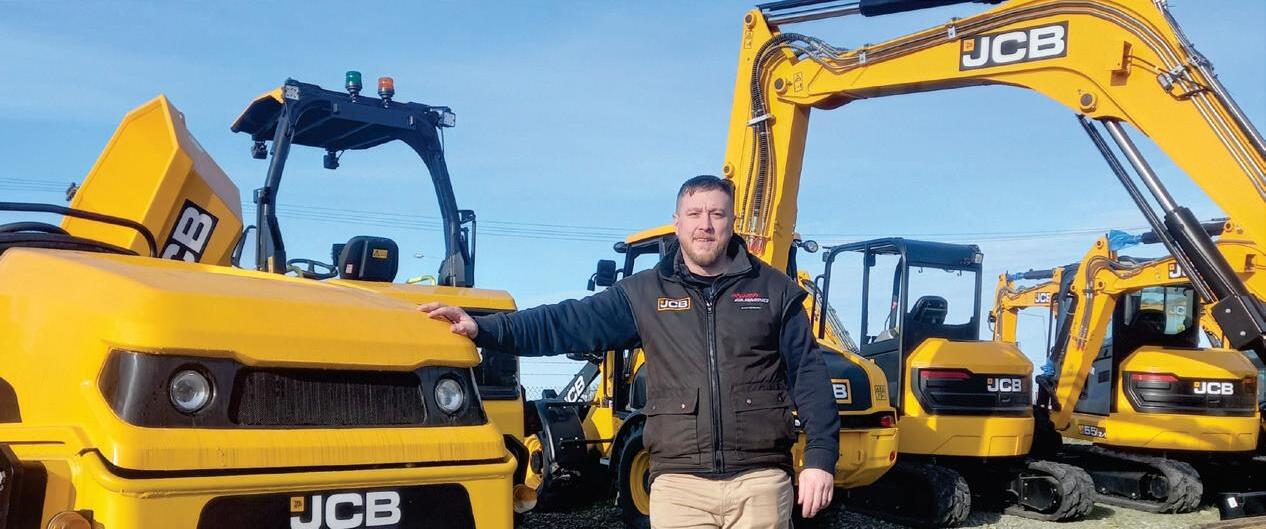
The new Wolverine X2 Utility is specifically designed for the tough environment of New Zealand farms.
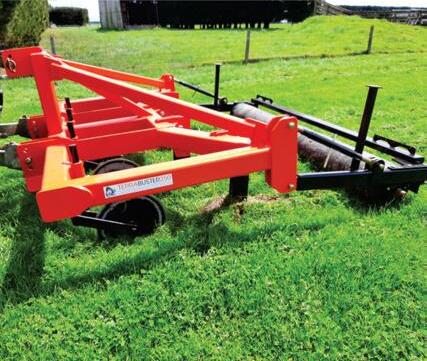

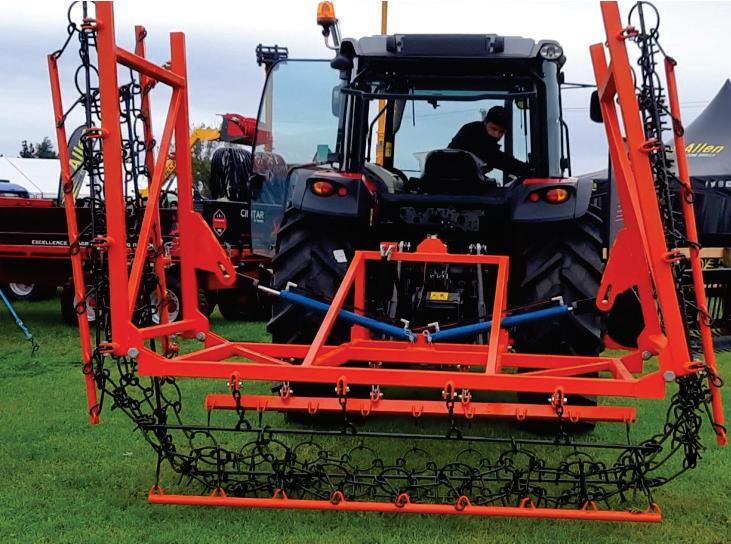





Featuring Yamaha’s durability and reliability, the new X2 prioritises work over recreation by featuring a larger cargo bed than standard – the same hydraulic-assist tilting device fitted to the hard working Viking three seater utility SSV.
The Wolverine X2 is one of the smoothest and quietest side-by-sides ever made. Noise, vibration and harshness is minimalised thanks to the refinement of the twincylinder powerplant as well as an array of specially formed body panels and insulating dampeners throughout the chassis.
Smooth, ultra-quiet power comes from an 847cc twin-cylinder engine, along with the Ultramatic CVT transmission, Yamaha’s On-Command System with 2WD, 4WD and 4WD with full differential lock, and Yamaha’s exclusive EPS.



Forged pistons and connecting rods ensure durable high-rpm performance. To improve efficiency the engine features a dry-




sump design for a more compact layout and offset cylinder block to reduce friction loss, while rubber engine mounts and a geared counter balancer ensures smooth running from idle to redline.
Yamaha’s renowned On-Command 4WD system lets you switch between, 2WD, limited-slip $WD and a fully locked differential 4WD. Unlike competitors’ automatic 4WD, On-Command puts the driver in full control to make the most of available traction in any sort of terrain.





















The Wolverine X2 also comes standard with a Speed Management System which allows the owner to limit the vehicle to a top speed of 40kmh, ideal foro work sites or other special operating conditions.
Kitted out to tackle tough tasks, the X2 comes with high-back seats, refined cabin features and aluminium wheels. It also shares the comfort, capability and confidence of the XT-R model – but is developed for the man on the land who values practi-
cal features to help get the job done.



The Wolverine X2 features well-dampened suspension at all four corners for improved chassis control and handling feel. Built for Yamaha by KYB these shocks give the X2 a flexible, balanced ride character, whether the day calls for cargo carrying or trail blazing.
the new X2 prioritises work over recreation by featuring a larger cargo bed than standard.
The X2 features a Viking-spec large tilting cargo bed (only fitted to the New Zealand Wolverine X2 Utility) is wider, longer and deeper than standard and designed to take a pallet. Add in a full 907kg towing capacity thanks to the standard 2-in receiver and the Wolverine X2 is ready to work when you are.






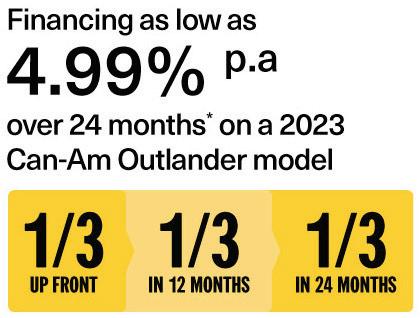
Can-Am ATVs have always helped riders get out and do more, from working on the farm to tackling the trails.


























As new consumer needs arise, Can-Am is once again pushing boundaries with the allnew mid-cc (medium engine displacement) Can-Am Outlander ATV recreational and utility models.

Designed and built with the emphasis of improving the rider experience at every touchpoint for both work and play, the new Outlander lineup offers more performance, comfort, storage and reliability.
For the New Zealand farmer, the new Can-Am Outlander PRO is a revolutionary development.

It comes with a range of updates and improvements that are vastly different from any other ATV on the New Zealand market.



This development journey began on our shores over five years ago, when the CanAm Global ATV product team visited New Zealand to gather insight and local input from farmers, service centres and dealerships to ensure that the update was built from the rider down.
An all-new rear facing 650cc single cylinder, liquid cooled, fuel injected Rotax Advanced Combustion Efficiency (ACE) four-stroke engine design and configuration are complemented by a new integrated transmission design and pDrive clutch, all of which give the new Outlander platform class leading power and towing capabilities.
Thanks to ECU calibration and different camshaft designs, the PRO HD7 models have 50hp/37KW and 41ft-lb/56Nm of torque, while the PRO HD5 models have 40hp/29kW and 37ft-lb/50Nm of torque.
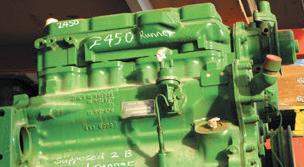


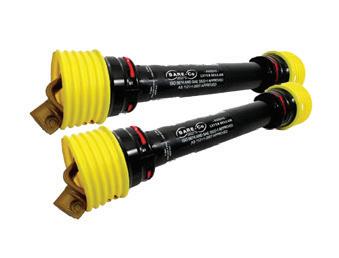
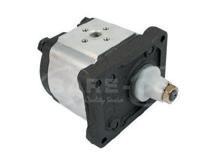
The Outlander PRO HD5 and HD7 machines are equipped with a new pDrive primary CVT transmission that also features work calibration along with Extra L/H/N/ R/P gearing.
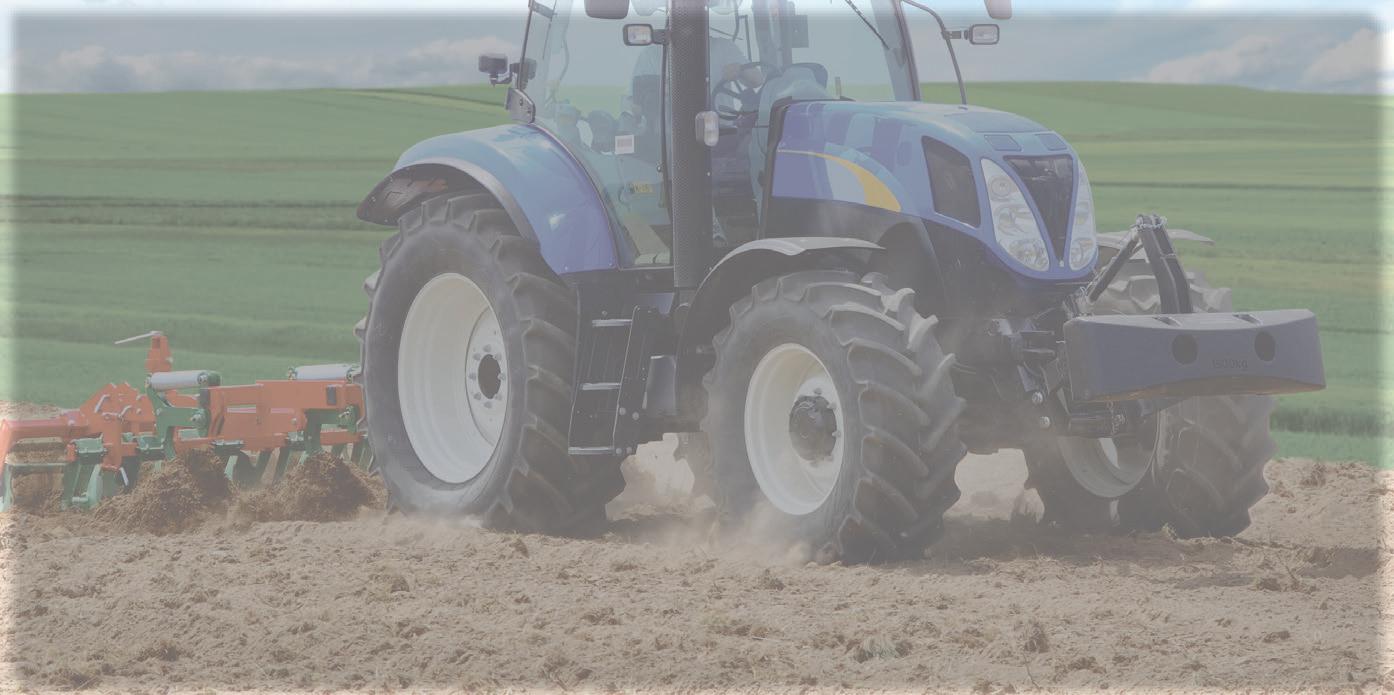
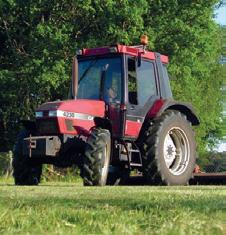
Both the Outlander and Outlander PRO platforms share a selectable 2WD / 4WD with Visco-Lok, Visco-Lok QE or Visco-4Lok with auto-lockingfront differential drivetrain offered according to the packages.

A new tubular steel chassis design derived from the Can-Am Maverick X3
platform, front and rear arched A-Arm suspension configuration are what have given the new Outlander and Outlander PRO platforms the class-leading suspension travel and ground clearance.
The PRO models feature stiffer suspension tuning to allow for working conditions and heavier payloads. The combination of the chassis and suspension design create the unrivaled ground clearance, handling, and stability of the new Outlander platform, with up to 330mm of ground clearance on certain models.

The Outlander and Outlander PRO both come standard with incredible storage ca-
pabilities, starting upfront with the new 3.8L integrated glove box compartment and select models also feature a magnetic phone mount and USB port to keep riders’ devices charged while they are on the go. There are ergonomic accessories like heated grips and windshield options, and storage accessories for the front and rear of the vehicle for things like gun racks, chainsaws, and just about any other necessary tool. Utility accessory options include items like a winch, plow, and auxiliary gas can.
contact your local can-Am dealership for a test drive.


With demand for portable grain handling equipment in New Zealand and Australia growing, Ag Growth International is expanding its manufacturing capacity at its India-based AGI Bengaluru facilities to accommodate production of its flagship AGI Westfield and AGI brands.
“This initiative will increase our manufacturing capabilities in the Asia-Pacific (APAC) region and helps to lay the foundation for ongoing growth,” AGI President and CEO Paul Householder said.

“The successful completion of both the product transfer from our Canadian facilities and the production ramp-up at our AGI Bengaluru facilities ensures that no matter where in the world your AGI equipment is made, you receive the same excellence in quality, reliability and durability.”
AGI is a world-leader in portable grain handling with swinghopper augers and belt conveyors among its top-sellers.
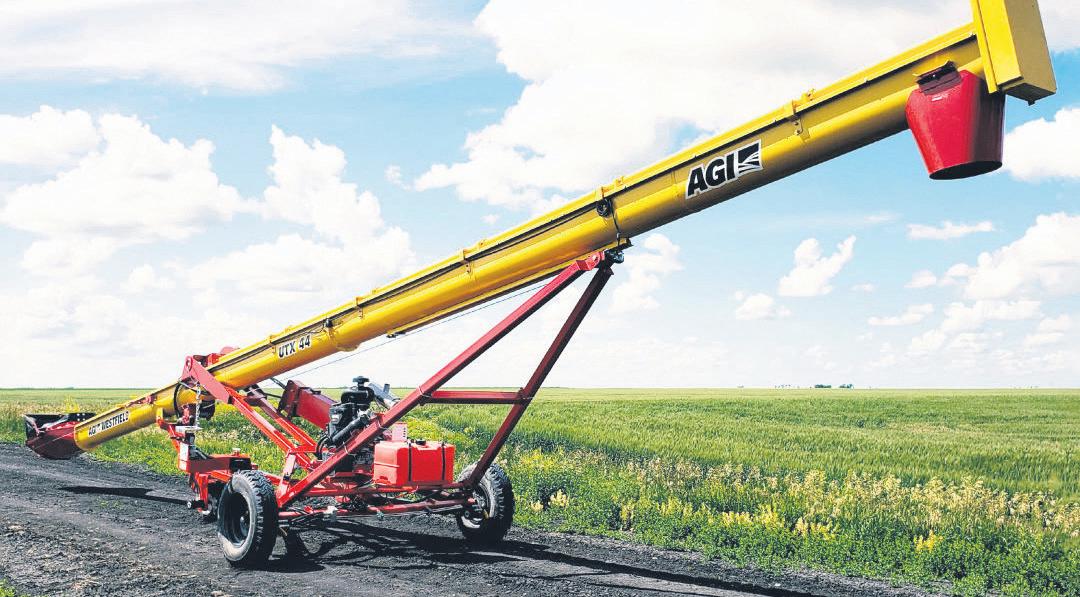
The AGI Westfield STX2 and the AGI XTA truck augers will be the first to roll off the lines at AGI Bengaluru. Engineered to withstand tough field conditions, the STX2 and XTA are designed for longevity, fast grain delivery, large capacity, and maneuverability.
“Our augers have a long-standing tradition with grain farmers in Australia and New Zealand dating back many decades to when the Westfield brand was first introduced to the market,” said Rustom Mistry, AGI’s Senior Vice President of the Asia Pacific region.

“For our dealers and growers, enabling more localized supply within the APAC region means better service and shorter lead times. We anticipate these changes to prompt further demand for AGI portable grain handling products throughout the region in 2024 and beyond.”
AGI bengaluru is dedicating a 4,180m2 production space for portable grain handling equipment and features the latest manufacturing technologies including laser cutters, robotic welding, benders, formers, and advanced painting systems. It also maintains ISO certifications 9001:2008 for quality management systems, and ISO 14001:2004 for environmental management systems.
• 60mm CRMO4v-steel shafts with rubber suspended bearings
• Hydraulic cracker board with parallelogram eliminates lumping in fields.


• Hydraulic weight distribution system provides 100% even compaction of soil.

• Comes in working widths from 5.3m-12.3m
The high capacity Rollomaximum is a precise seed bed cultivator with built-in front and rear rollers. The combination of rollers and cultivator tines regularly achieves a seed bed in a single pass with the change to and from transport is done hydraulically from a stationary position roller.
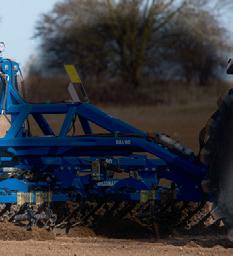

Comes in working widths from 6.2m – 12.4m.

With Spring fertiliser season underway, more dairy farmers are anticipated to turn to self-spreading to help keep costs down, according to Precision Farming’s head of sales Aaron Wilson.
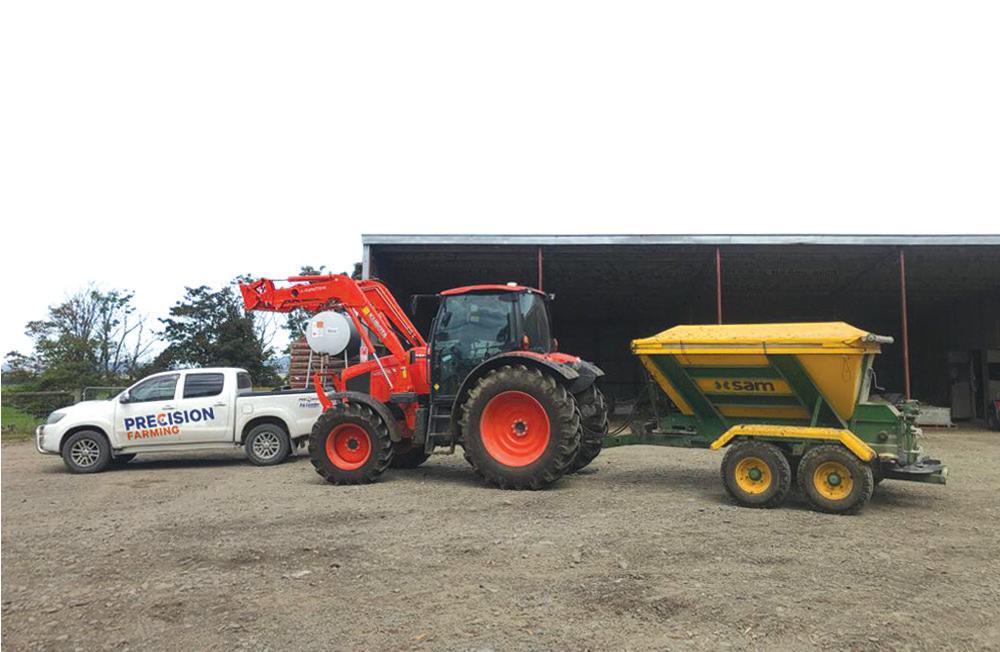





Aaron (51) has farmed all his life and now owns a 900-hectare self-contained dairy operation in Northern Southland. He knows first-hand the challenges facing dairy farmers.
“We’re all trying to do more with less right now to protect our bottom line, not just for the immediate future, but for the long term. We all know the decisions we make this season will have implications for the next,” he says.
“We expect more dairy farmers to be self-spreading this Spring, and I anticipate that application volumes will be down. If that’s the case, what they do put on needs to be done well to maximise returns and minimise wastage.”

Aaron says there are a few key things dairy farmers can do to ensure they get the best value for their efforts if they are selfspreading.
“Timing is the key to farming, and that applies to self-spreading too. Monitor the tim-

ing of your applications and do what suits your unique farm system.
“Being just four or five days ahead of livestock can make a significant difference in ensuring optimal results. As always, weather conditions will play a crucial role.”
Precision will be more important than ever when applying fertiliser this spring. Aaron advises farmers to use GPS guidance to ensure consistent and precise spreading, reducing wastage and optimising coverage.
“Even if you can make a 5% to 10% saving just by applying your fertiliser more accurately, why wouldn’t you? Overlaps and underlaps can make a big difference. There is also the opportunity cost from spending time in the paddock but not optimising fertiliser placement to grow grass properly and wasting it.”
Aaron says using any GPS guidance to help with self-spreading will improve accuracy of application and help get more consistent placement. There are some great free apps available, which can save time and money.”


Aaron encourages farmers to spend time calibrating their spreading equipment.

“Even with older spreaders, you can use a simple method of calibration by measuring output over a specific distance. This will help fine-tune the spreading process for better results,” he says.

“Check your spreader and make sure that it’s fit for purpose before you head out into the paddock. You can easily and cheaply calibrate the application speed by getting an ice cream container and driving the spreader along and see what flows out the belt. Weigh it and then you can extrapolate out the volume to calculate your application rate.”
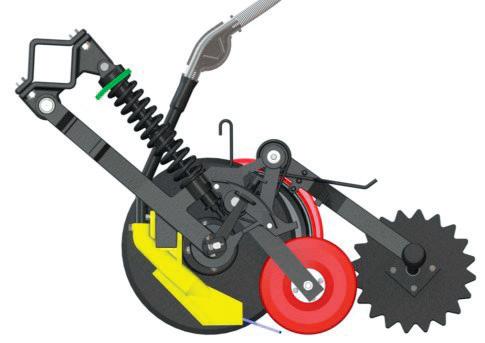
Handling Fertiliser
Aaron says minimising the handling of fertiliser will help maintain its quality and ballistic performance. Crushed or deteriorated fertiliser may not spread evenly, leading to inconsistent results.
“And if you’re going to do maintenance mixes or phosphate mixes, then you definitely want to make sure you select a brew that isn’t going to deteriorate if it’s sitting
around for a few days waiting for you to spread it.”

Keeping accurate records of fertiliser applications is crucial, not just for compliance purposes but also for informed decisionmaking to maximise your investment.
Aaron suggests leveraging GPS systems for record-keeping and integrating these records into digital platforms, like fertiliser coop apps, for easier N-cap reporting and access to data for freshwater farm plans.”
The economic, efficiency and environmental benefits of enabling one operator to do more with one machine have driven the development of a new tractor at the top of the Case IH range, the 778hp/572kW (peak power) Quadtrac 715 AFS Connect.


Now Case IH’s most powerful production tractor, it blends many of the established Quadtrac principles proven over almost three decades with significant advances and key differences to other models in the recently-released line of revised 525 –645 Quadtrac AFS Connect and 475 – 525 Steiger AFS Connect tractors.
“The principle behind the development of the Quadtrac 715 is not simply more power,” said Franz Josef Silber, Case IH product marketing manager for high-horsepower and 4wd tractors.
“Our aim was to create a machine that matches the requirements of our region’s largest farms, to operate implements at their ideal speed, producing higher work rates and allowing operations to be performed at the ideal time, even in tough working conditions, to make the most of short weather windows.

“We also wanted to ensure soil protection via a bigger footprint and fewer passes, which also means greater efficiency and minimal trafficked land,” Silber said.

Available only in tracked Quadtrac format, the new 715 model is powered by an industry-first in tractors – the new FPT Cursor 16L TST. Its displacement is 23%
greater than the Quadtrac 645’s Cursor 13L TST, delivering 778 peak horsepower at 1,900rpm and 3,255Nm peak torque at a low 1,400rpm. High torque availability is ensured with a twin-stage intercooled turbocharging system guaranteeing a fast load response in tough conditions.
Refuelling stops are reduced via the integration of wider saddle tanks on the rear frame, holding a total of 1,968 litres of diesel, 11% up on the Quadtrac 645.
The engine powers the latest Case IH 16-speed PowerDrive powershift transmission with Automatic Productivity Management (APM). Introduced on the recently-launched Quadtrac AFS Connect line, it features uprated core components.
The new heavy-duty track units are significantly different to those on other Quadtrac models. Tracks are 305mm longer for more ground contact, enhanced power transfer, greater traction and reduced compaction. Drive wheel diameter is 1,008mm, up from 910mm, with five track lugs engaged with the drive wheel rather than four, to handle the higher torque and maximise track life.

Externally, the new Quadtrac 715 is set apart from its stablemates through a distinctive new bonnet design. The bonnet,


which can be raised 31% higher (34o versus 26o) for enhanced service access, is opened and closed via an electric actuator, operated via a switch in a lockable box near the cab steps.


It also features a new lighting design, with new LED road lights as well as worklights that produce an output of 25,420 lumens, for 11% more illumination power.
These are complemented by new cab-mounted worklights available in three packages, with the top-level package deliv-
the Quadtrac 715 AFS connect is now Case IH’s most powerful production tractor. output
ering an additional 45,600 lumens output with 360 degrees coverage.
















For sale is a long-established and profitable stockfeed business with a solid reputation for producing high-quality products for the equine and agricultural industries. The business has been operating for many years and has built strong relationships with a loyal customer base, providing a steady stream of repeat business. Supply of material is secure, and the machinery used is a benchmark in the industry. With an experienced and dedicated team of employees in place, the business runs efficiently with minimal input required from the current owners. View: harcourts.co.nz/BF3795
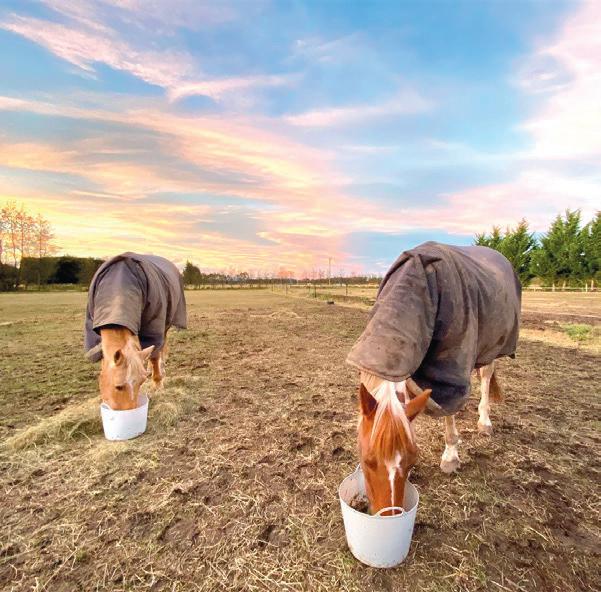
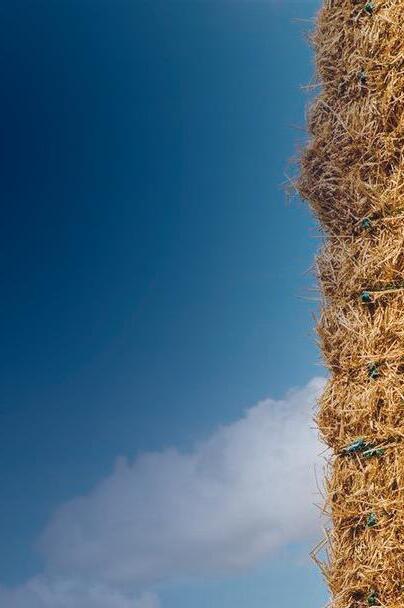


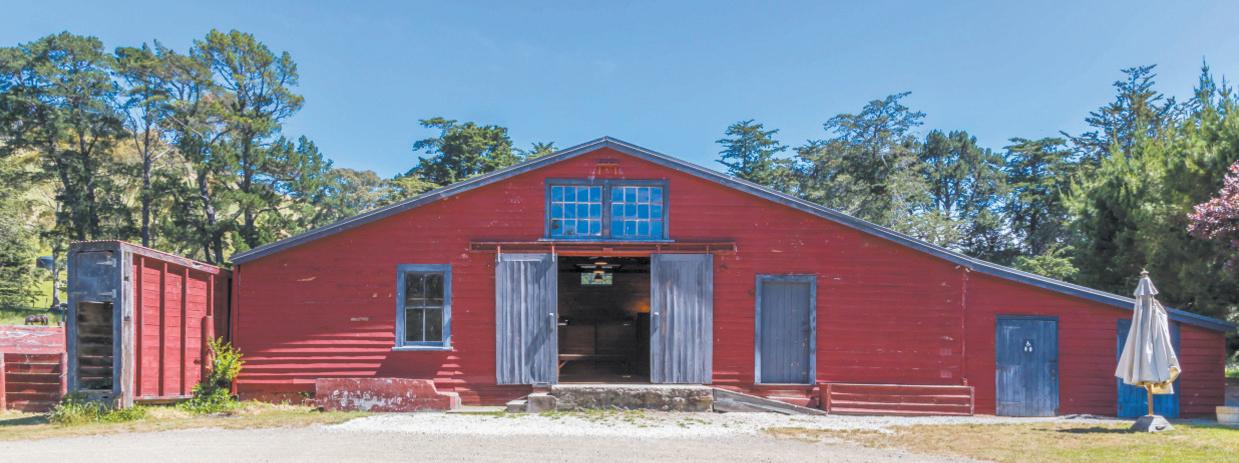

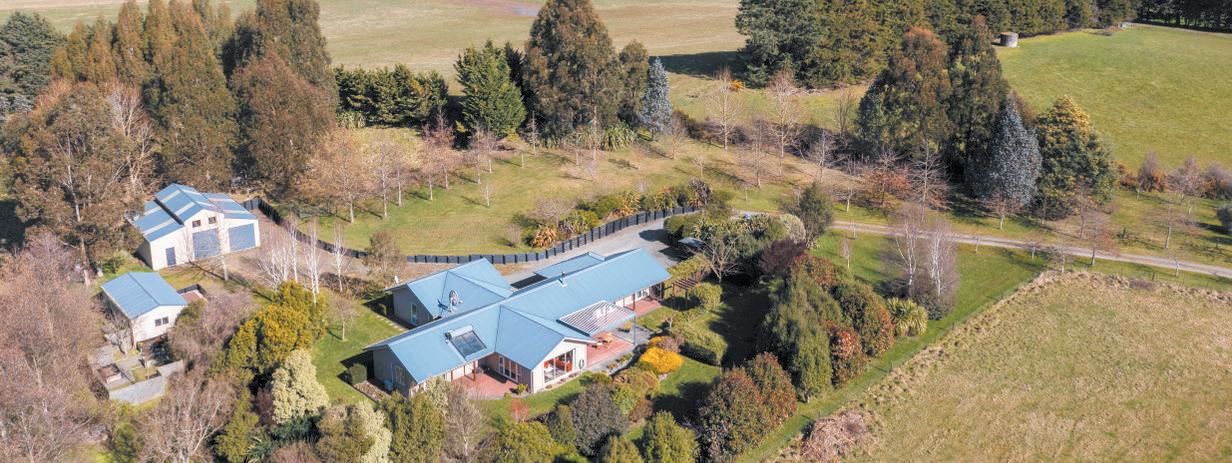








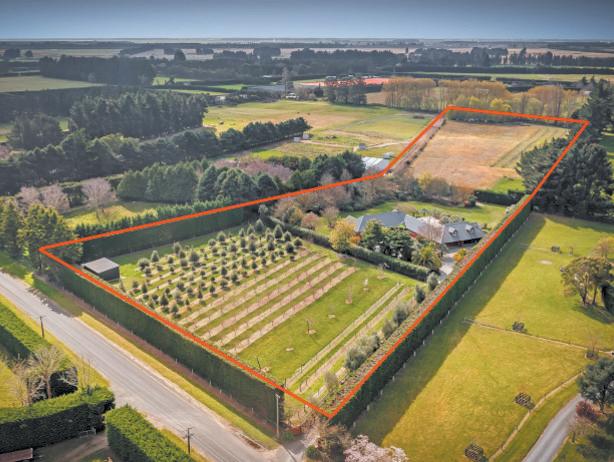

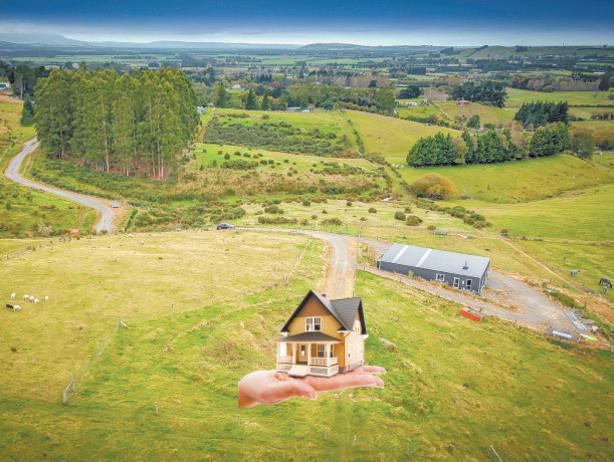
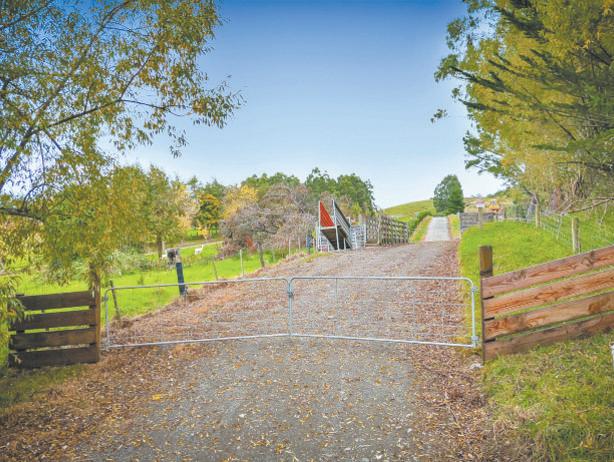







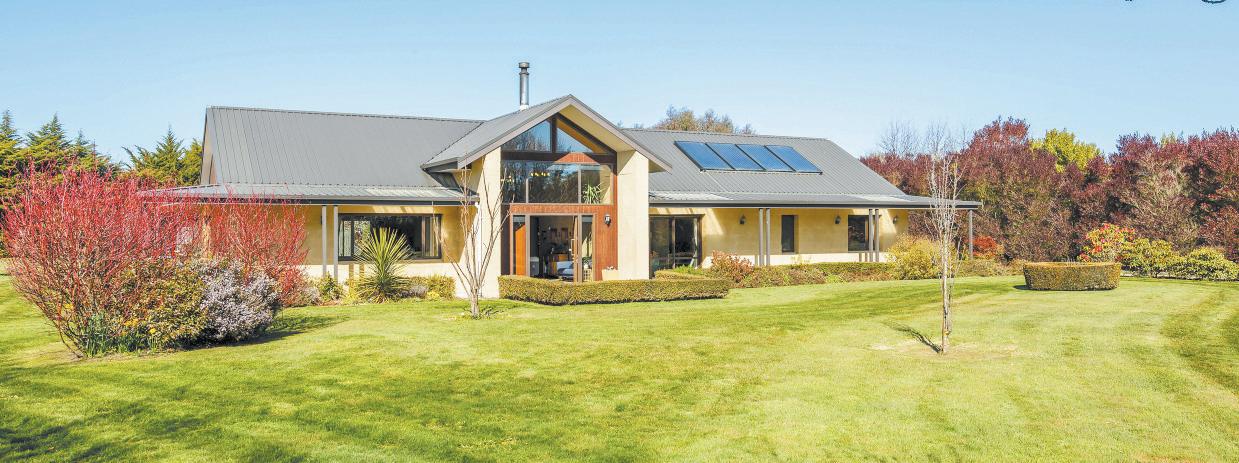

Properties in rural areas are often easy targets for thieves particularly over the holiday period, and criminals like easy pickings, so don’t make it easy for them.

Investing in a security system, which can send alerts to cell phones, is proving popular but in rural areas where cell coverage is not always optimum, and response times due to distance can often be long, it is not always an option in terms of deterring thieves.
Avoid leaving ‘starter kits’ for young criminals. These are items like chainsaws and mowers that can be easily taken and quickly sold.
Thieves often survey properties from afar before approaching, so be aware of strange vehicles parked within sight of your place. They also like to drive in to see what security systems you have and the state of doors and windows.

Criminals don’t like walking as they may be more easily seen. So a locked gate (with a good quality lock) is the first defence, despite it being inconvenient for you. Ensure the gate cannot be lifted off its hinges by reversing the top gudgeon.
Record the vehicle numbers of anyone coming to your property with weak excuses such as looking for a named person, or a lost dog. Keep your digital camera handy and photograph them leaving, without them seeing if possible.
An electronic gate with codes for approved users is a more expensive but very effective alternative, and is another option
to let you know when you have company.
So many people are burgled when they are home eg when mowing lawns, so lock your door when in the garden or out on the property.

Have an alarm on the house and sheds. Even if you are a long way from town, the criminals will not know how long they have to operate before help arrives but remember they may do a test run first and come back later.
Arrange an effective neighbourhood watch system with those around you. Letting neigh-
bours know when you are away is so important so they can notice anything odd. Have a ‘telephone tree’ system of calling neighbours to alert others if there are problems.
Make a record (list, photos and video) of as much of your house contents and farm gear as possible – certainly the big and valuable items. Keep receipts for everything of value purchased as most insurance companies require this for claims.
Mark or engrave all items with your name or phone number and make it obvious wherever possible.
Gated: A strong gate with a lock will help to deter thieves.
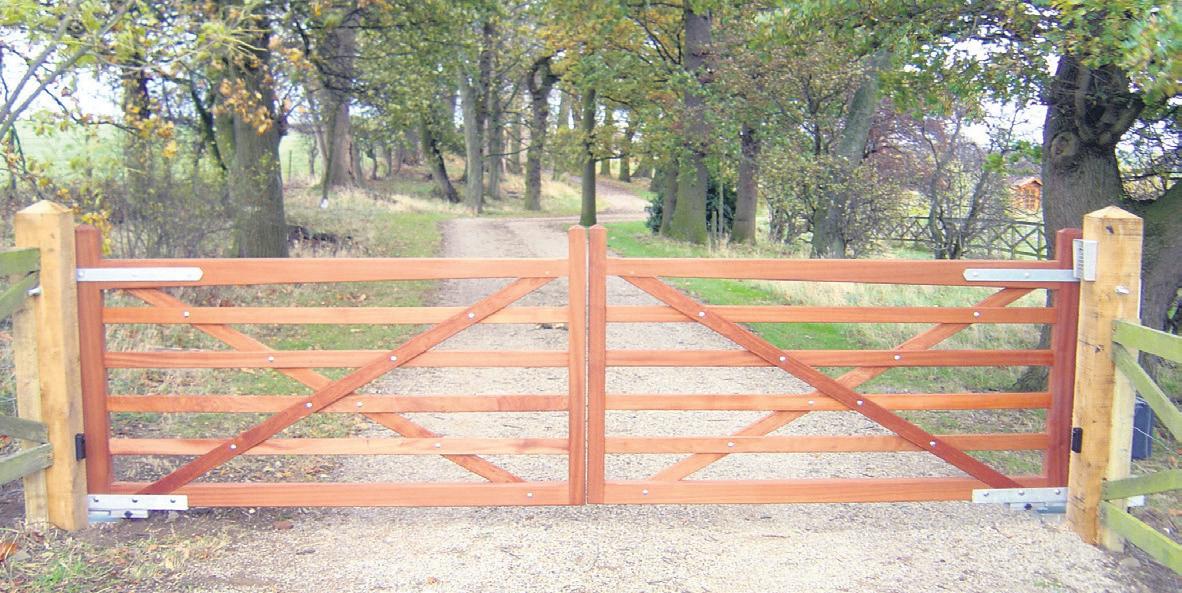

Don’t leave keys in vehicles and bikes at nights or when you go out and lock all doors and windows when you go out. Often this is only a minor deterrent as they are easily broken. Deadlocks are a good idea so thieves cannot get doors open to remove large items.
Don’t leave garden tools like spades and axes, and especially ladders around the outside of the house when you are not there.
Always tell the police if you have been burgled even if not much is taken as even if they cannot do much, it all adds to their information database.
Fire and Emergency is urging people to start preparing for the risk of wildfire early as hotter drier weather is forecast this summer.
Article supplied by
Fire and Emergency New Zealand
Service Delivery Wildfire Manager Tim Mitchell said the forecast higher temperatures, reduced rainfall and windier El Niño weather pattern predicted for this summer is likely to cause higher levels of fire danger on the east coasts of both islands.
“Given this year’s flood events and wet conditions, people will likely find it difficult to understand the wildfire risk New Zealand could be facing soon,” Mitchell said.
“But a spell of hot dry windy weather will quickly dry out the grass and vegetation that has grown and will likely grow over the coming months, due to the moist soils and return to warmer weather. This will become a fire risk if not managed.
“Ninety-eight per cent of New Zealand wildfires are caused by people and people can do a great deal to prevent wildfires occurring and to help protect themselves and their property,” Mitchell said.

Prevention
Fire and Emergency is encouraging people living in rural and semi-rural areas to prepare their properties by:

• keeping the grass short, particularly around their house and other structures



• moving firewood and other flammable materials well away from their house


• clearing the gutters so hot embers can’t lodge in them
Be prepared: With hotter drier weather being forecast for this summer Fire and emergency New Zealand is urging rural canterbury residents to make their properties safe from any fire danger.

• clearing accessways and making sure rapid address numbers are visible, and


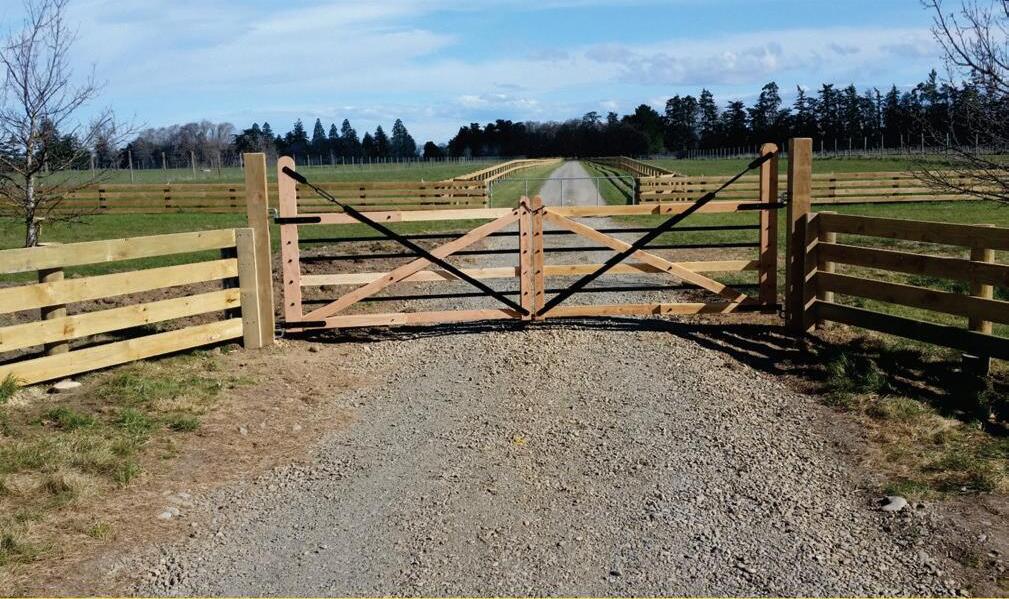

• having a plan of action if they are involved in a vegetation fire.
Fire and Emergency will provide locationspecific, live fire danger advertisements if the level is High, Very High or Extreme through social channels, YouTube and Google search.
From late September, social media, online video, digital display, and radio will prompt semi-rural and rural dwellers to prepare their homes and properties for a wildfire.
People can also access real-time and localised fire danger levels and fire season information on MetService’s desktop and app platforms.
Before lighting a fire or doing anything that emits heat or sparks, people need to always check their local fire danger level at checkitsalright.nz.
Scaling mountains, sailing cutters and swimming before sunrise isn’t a typical day on the farm, but it’s exactly what Southland dairy farmer Victoria Rundle experienced when she went on an Outward Bound course recently.
Victoria attended Outward Bound with the help of Emma Blom, a Lincoln University agricultural student who raised money for a scholarship so someone else could have her “life-changing” experiences.
“I fundraised through a gumboot marathon to raise awareness of mental health issues in our rural communities,” Emma said.
“My goal was to enable another farmer to get to Outward Bound to build resilience while unlocking their potential. Victoria’s drive to grow and passion for the industry made her the perfect recipient,” she said.


Now working on Riversdale Dairies, in her former job Victoria Rundle used to farm with Emma’s brother Nick, and found out about the scholarship during a conversation with Emma when she came to the farm to help.





Victoria wasn’t confident she’d be successful but applied anyway. She knew nothing about Outward Bound, so it was an entirely new experience for the 30-year-old, who completed an eight-day Outward Bound Discovery course in the Queen Charlotte Sounds.
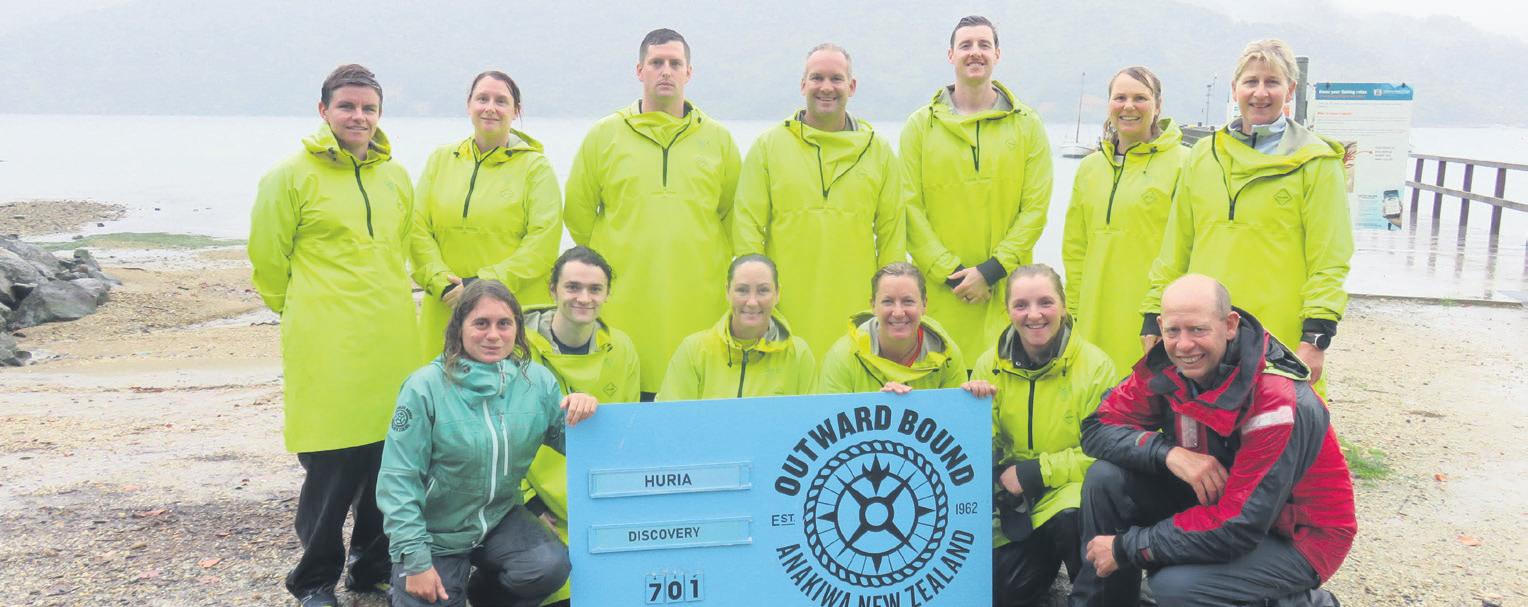
“I really enjoyed the course,” Victoria said.

“You can try and prepare as much as you can, and you can either think you’re not ready or feel like you’re absolutely ready, and you’ll get there and be fully surprised of what you’re capable of. It’s something you don’t discover until you are there living it, doing it.”
Victoria said dairy farming can be isolating at times, and learning to take a moment and reflect on your situation or state of mind and how you can improve it was tested at Outward Bound.
“No phones, no watch meant many times you only had yourself and your thoughts to keep you company.

“Checking in with yourself and how you’re going, what’s happening in your life, how you’re feeling and what you’re grateful for
is a great skill we developed on the course. It really made you acknowledge what emotions and thoughts were running through your head, be aware of the people around you, and make sure they are happy too.”
Victoria said many of the skills they learned at Outward Bound can be applied to everyday life.
“Teamwork is an essential part of farming, working well together so we get tasks done. My watchmates on the course were a
really diverse bunch, but I think that’s what made us bond so well together. We all had each other’s backs. We were in it together, and it was really affirming working together.”
Victoria is back on the farm now and wants to pass the baton to another New Zealander to experience Outward Bound. Meanwhile, she shares tales of her adventure with as many of her workmates and dairy cows as possible.
After a two year hiatus due to the Covid pandemic Rural Women New Zealand will be hosting a National Conference this year.
 ] by Kent caddick
] by Kent caddick
This year’s conference will be held in Christchurch from Thursday, 23 until Saturday, 25 November. The National Conference programme wraps around the organisation’s Annual General Meeting and the much-anticipated NZI Rural Women NZ Business Awards 2023.

“After two postponements due to Covid-19 restrictions in recent years, members are looking forward to meeting together in person,” RWNZ National President Gill Naylor said.
“The conference theme this year is ‘Strengthen, Support, Connect’, which underpins and describes the role that RWNZ plays in our rural communities.
“The conference also provides an excellent opportunity for people to come and experience a taster of what the organisation has to offer.”
Highlights of the programme include guest speakers Alice Ritchie and Rosemary Banks, and a performance by The Bitches’ Box of its internationally acclaimed Life’s a Bitch show.
“We are delighted to have guest speakers of the calibre of Alice and Rosemary,” Naylor said.
“Alice is the Lead Nature and Forests Manager at Tesco, the United Kingdom’s largest food retailer. Her role involves setting the strategy for Tesco across nature, biodiversity, sustainable agriculture, water, and
On again: rural Women New Zealand National President Gill Naylor is looking forward to the association holding its national conference after two postponements due to covid-19 restrictions.
soil across both international and domestic supply chains and working closely with WWF to help halve the environmental impact of the average UK shopping basket.

“Rosemary Banks is a highly respected diplomat and has held a number of important government roles including representing New Zealand at the United Nations and as a Crown negotiator for Treaty of Waitangi settlements.
“Rosemary served as New Zealand’s Ambassador to the United States between 2018 and 2022 – the first woman to hold this position.”
tickets for the conference sessions, the bitches’ box performance on thursday, 23 November and the NZI rural Women NZ business Awards on Friday, 24 November are available for sale to the general public. To find out more about the RWNZ National Conference and purchase tickets, visit www.ruralwomennz.nz/ national-conference, or phone 0800 256 467.
• Driveways
• Earthquake Repairs

• New Home Specialists
• Patios & Paths
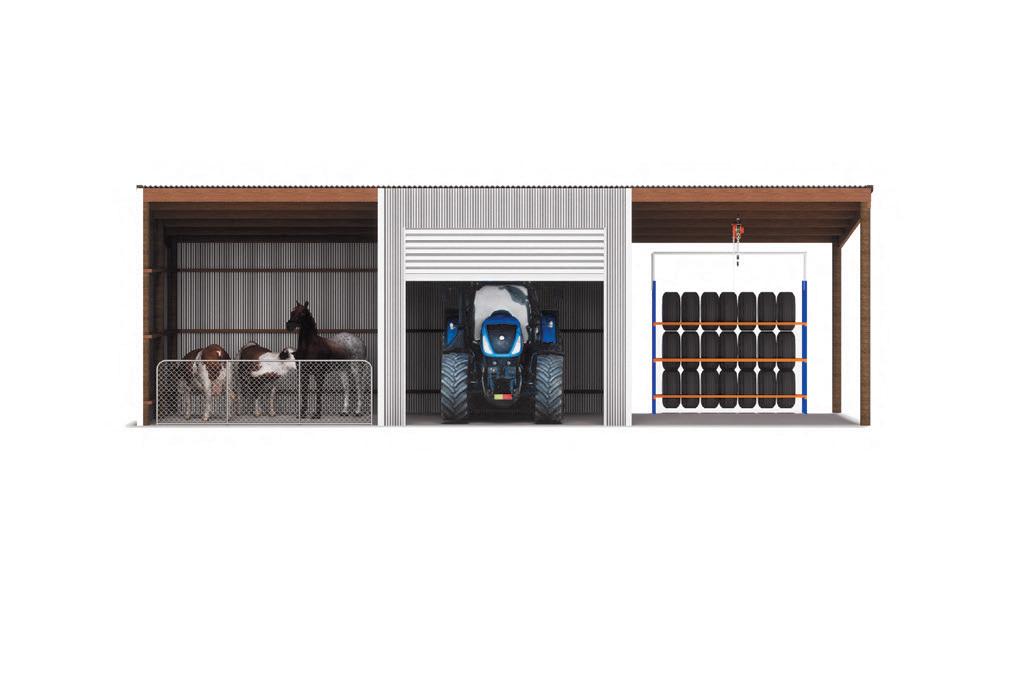
We’ve dug deep to deliver you 140 of spring’s freshest farms, horticulture, viticulture, forestry and lifestyle properties for sale from the far north to the deep south.





Country also delves into how improved internet connectivity is bringing the rural sector up to speed and delivering productivity gains, and how lifestyle block owners can leverage their land to grow food as the cost-of-living bites.
Bayleys is consistently New Zealand’s number one rural real estate brand – with deep roots in farming communities, our local relationships, connections, and legendary professionalism mean we’re ready to guide you along country roads. bayleys.co.nz/country

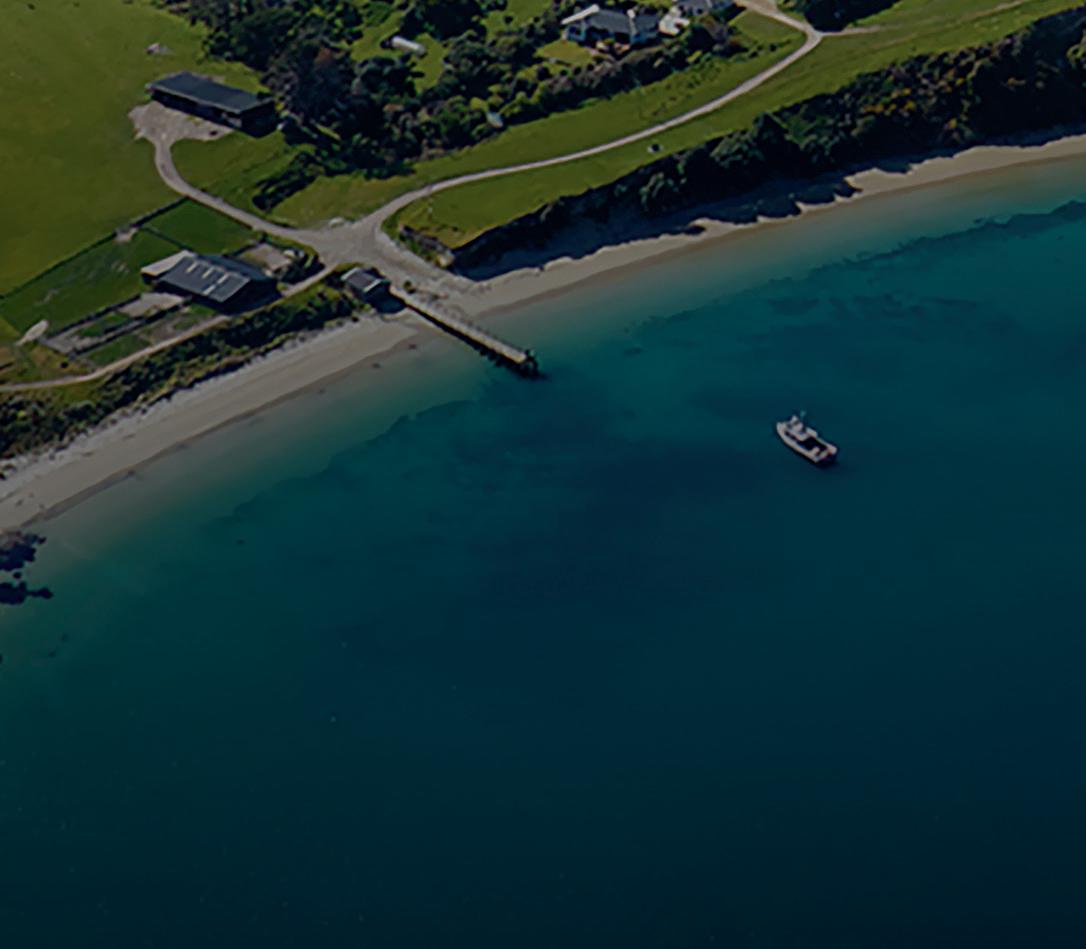
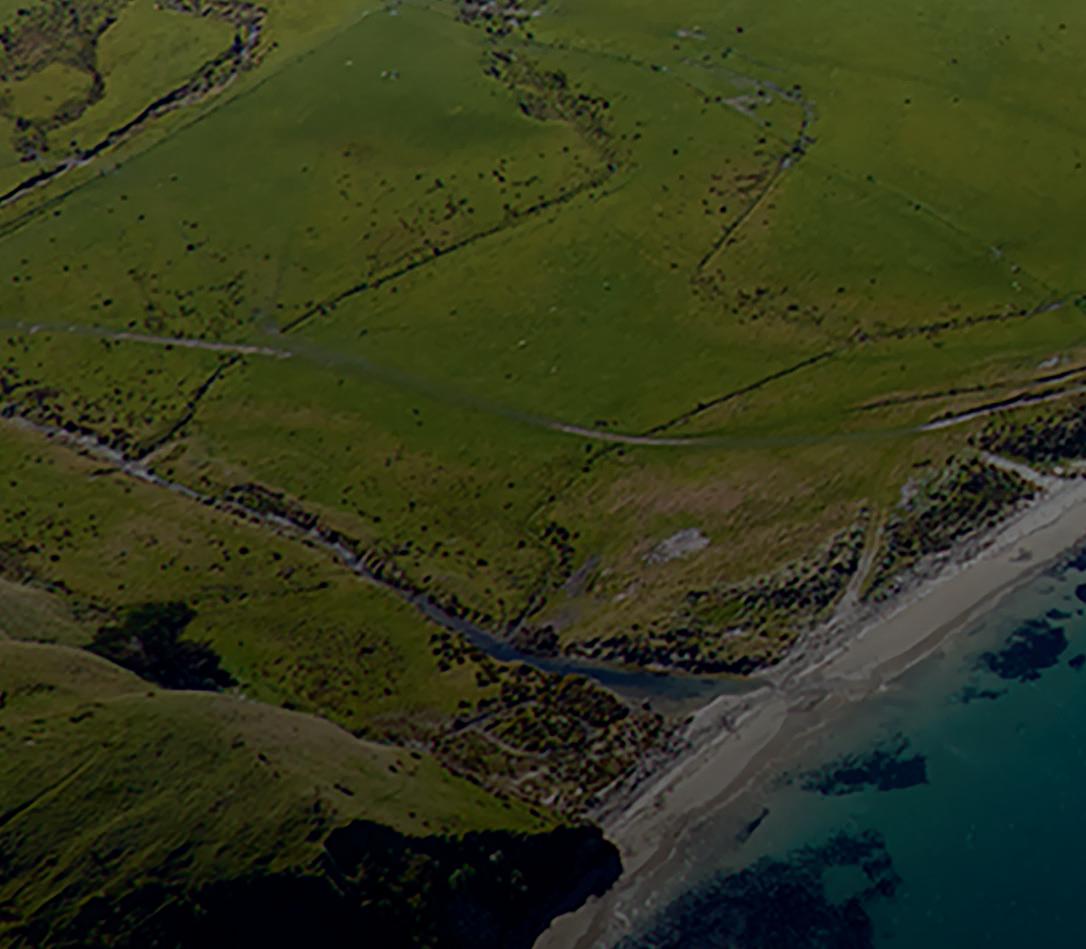

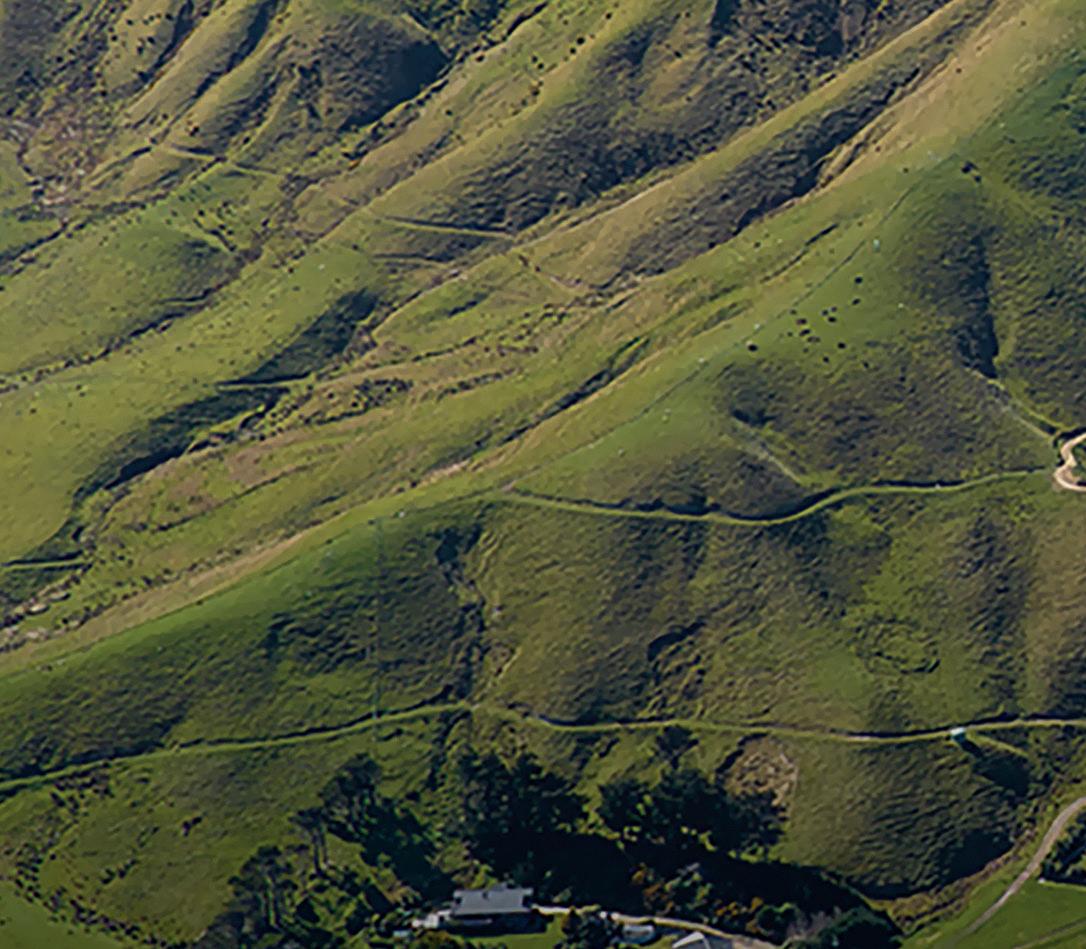
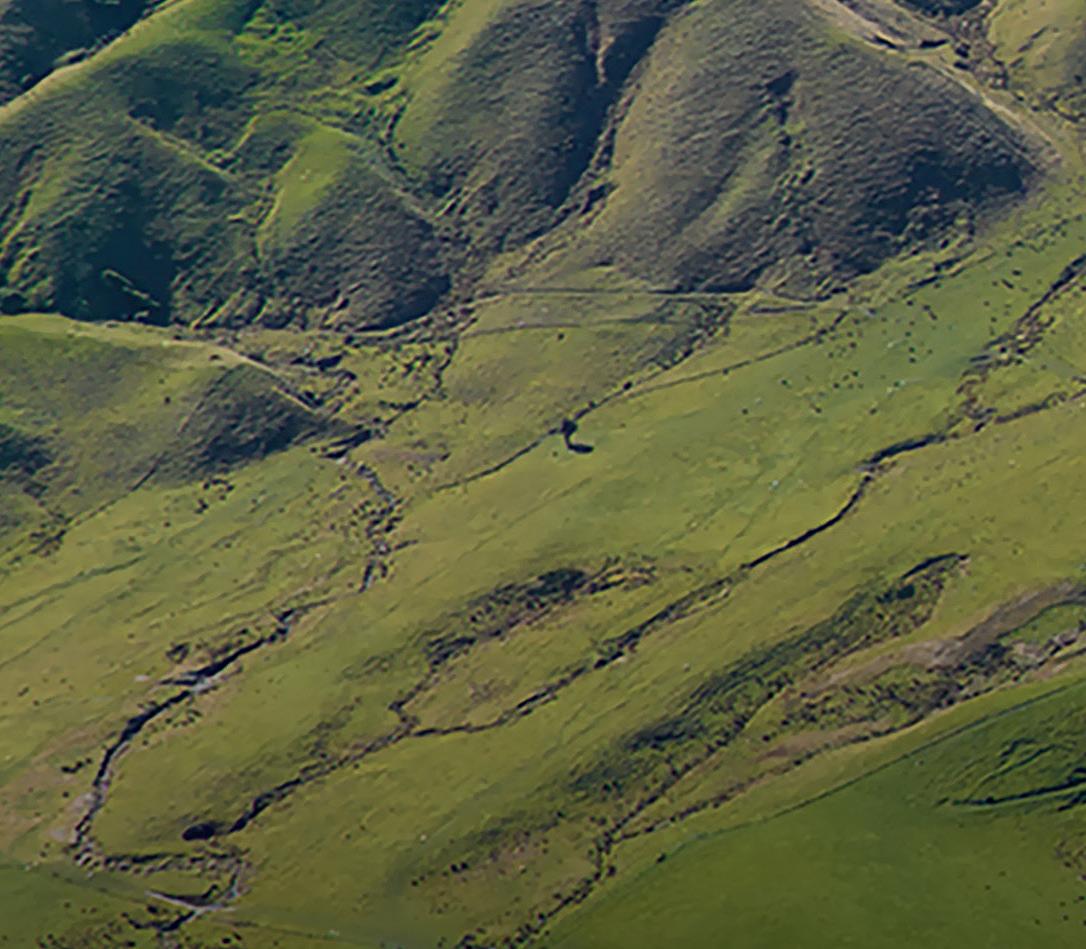




When it comes to rural property, Bayleys Country is altogether better at unlocking new opportunities, delivering quality rural and lifestyle properties for sale and the latest insights directly to you.
Being a good and responsible farmer or grower has quite a few moving parts. Aside from the need to be sustainable and get a decent return, there’s also the need to minimise impact on the environment, take care of workers’ health and safety, avoid waste, and be a considerate neighbour.
David Lingan UPL NZ Ltd’s Adjuvant Product Manager says, when it comes to spray programmes all those have to be factored into good agricultural practice.
“It’s not just a matter of putting product in the tank and turning nozzles on. Though most people don’t, nowadays. Or, at least, I hope not.”



A passionate advocate for adjuvants, David says these best practice solutions aren’t expensive. While they don’t have ‘actives’ he explains, adjuvants contribute a lot to spray programmes’ efficacy. “They help your profitability as well as safety”.
At the beginning of every spray season, and between products, David recommends All-Clear® 2X tank cleaner and decontaminant. “It’ll remove even notoriously ‘sticky’ products.” David says this helps give certainty of outcome and avoids cross-contamination that could lead to crop damage from residue of previously applied products such as a herbicide.
“It’s a very cheap way of minimising mistakes, and it’s absolutely invaluable for helicopter spray set-ups.”

All-Clear® 2X thoroughly cleans not only spray tanks, but also spray lines and booms.
FoamMaster®, another product from the sustainable agricultural and horticultural


solutions provider, is a new generation anti-foam/defoamer that reduces spray waste and prevents unwanted ground contamination.
David says FoamMaster gives excellent foam prevention and is effective at wide pH ranges.
The adjuvant also supports precise spray calibration. “The low use rate, in a convenient 250 mL pack, is highly effective at reducing foaming waste and miscalculations. It helps achieve the right concentration in the spray tank.”
He recommends putting FoamMaster in the tank first for best results. However, he says it can also be used to stop foam once foaming has occurred.
‘Hard’ water is another potential factor in compromising spray efficacy that an adjuvant can help tackle.

“What people often forget is that water is an active chemical (H20). Some chemicals, including glyphosates, are very susceptible to the effect of ‘hard’ water, which Central and North Canterbury, among other areas, can be prone to.” The positively charged cations in calcium, magnesium, iron etc. bind to the negatively charged glyphosate molecule. This slows up-take, reduces solubility, thereby reducing the efficacy of glyphosate (in particular).
Test your spray water by using a quick, cost-effective swimming pool test strip, which is available from most hardware
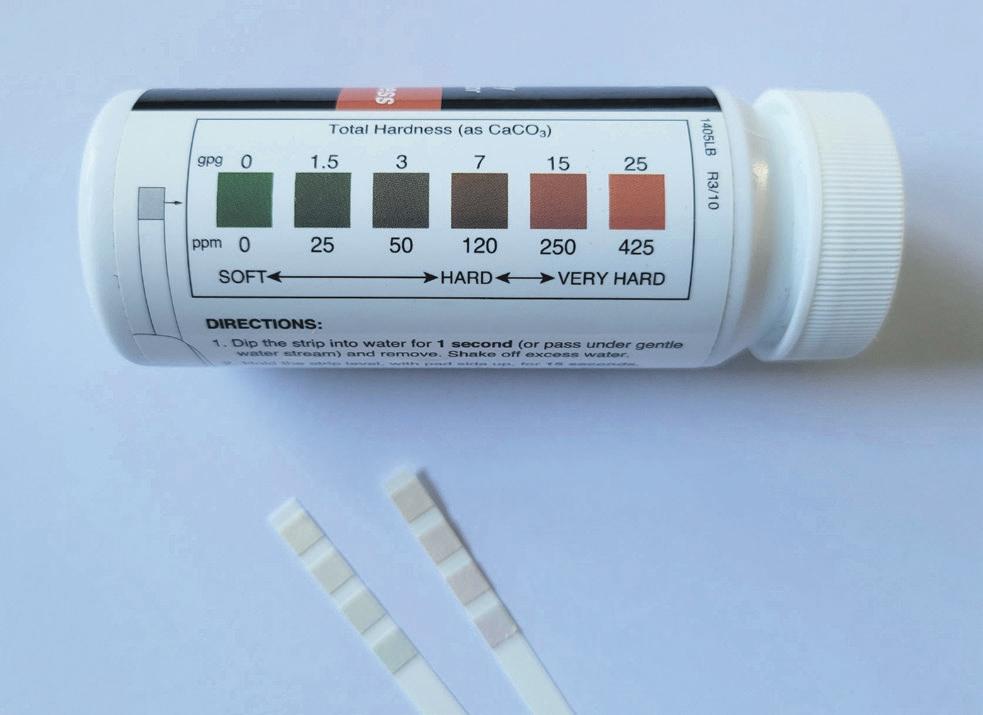
Adjuvants contribute a lot to spray programmes’ efficacy, thereby helping profitability and safety.
stores. The test strip will tell you whether you have hard water that requires attention.


David recommends water conditioner and ion scavenger X-Change® to optimise spray performance. X-Change acts as a sacrificial product changing hard water into ‘soft’, locking up free ions which would otherwise deactivate products.
“It’s ideal for use with all glyphosate, phenoxy, FOP and DIM products, and picloram, and clopyralid. It’s all about putting a bit extra in to get a lot more out.”
For more information on how adjuvants can make a difference in your spray programme, contact your technical specialist or UPL NZ.







Du-Wett® delivers superior spreading using less water. That saves time, labour, and fuel. And because Du-Wett optimises efficacy, you get the most out of every cent you spend on your spray programme.

Delivering
Our portfolio of powerful, proven products has helped farmers from one end of the country to the other create and maintain thriving businesses, and has earned us a reputation as New Zealand’s arable protection specialists.
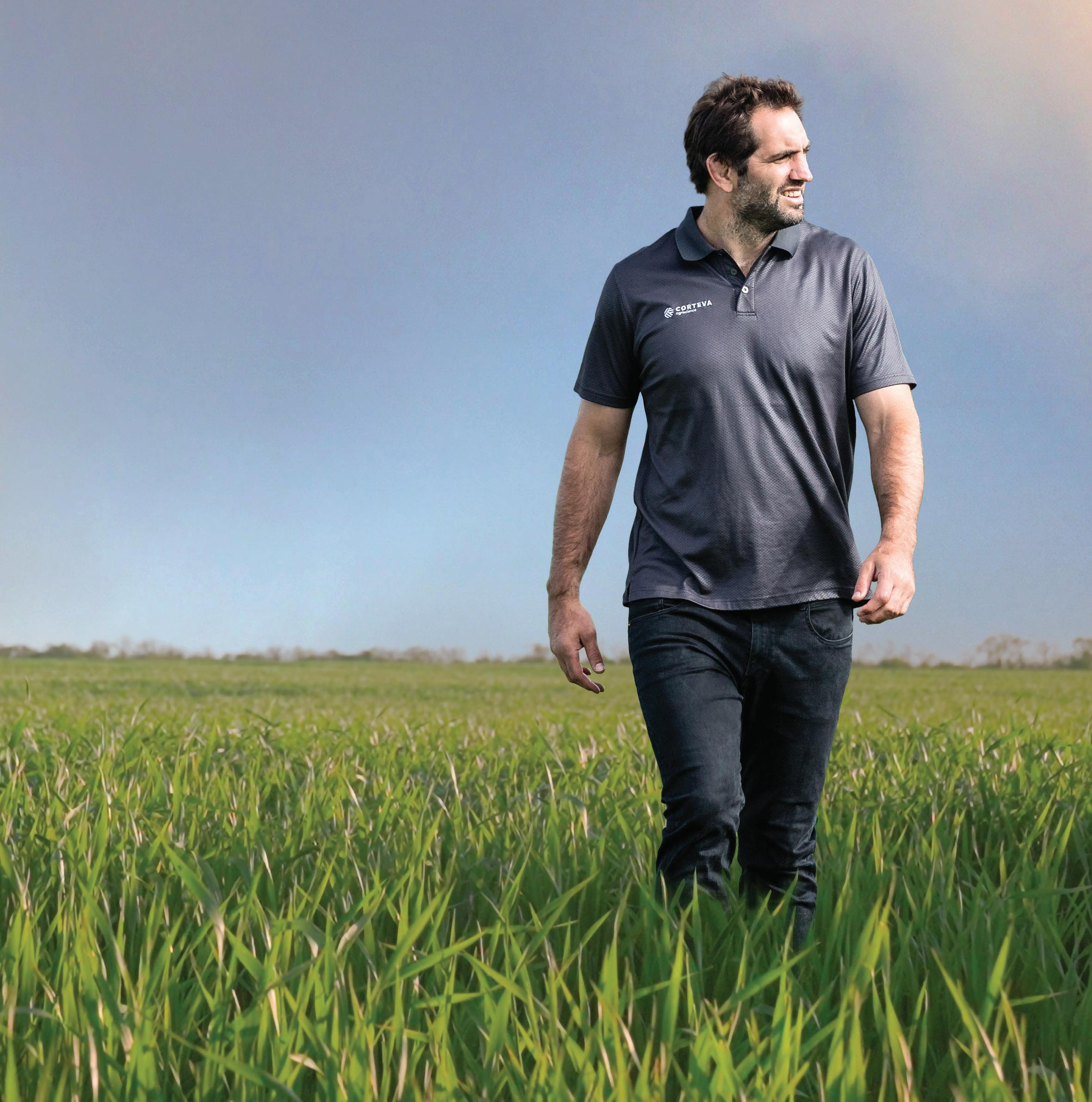
Our suite of innovative crop protection solutions provide local farmers with everything they need to win the war on weeds, pests and diseases.


Visit corteva.co.nz to view our range of online arable resources.



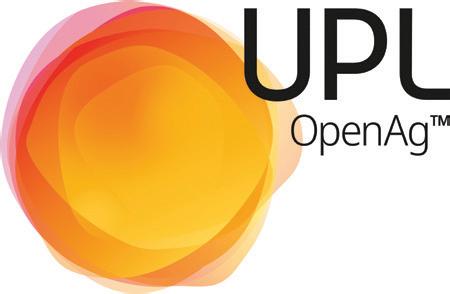
Mike Goodwin Central South Island Regional Manager for sustainable agricultural and horticultural solutions provider UPL NZ Ltd, says a combination of monitoring and Ironmax Pro® molluscicide will stop the pests in their tracks.
“If you give slugs an inch, they’ll take a mile (almost). Slugs can travel up to 13 metres a night to feed. And they can do a lot of damage in that time – consuming more than 50% of their own body weight in one night.”
Mike says Grey field slugs (Deroceras reticulatum) and their close relation brown field slugs (Deroceras invadens) have the potential to wipe out entire crops.
Population explosions are common as the pests are capable of producing 300 eggs in their 13-month lifespan. “Things can get out of hand quite fast,” Mike says.
“Slugs are around all year but some of the biggest impacts they have on crops is at the seedling stage”. He says in very frosty or very dry conditions slugs typically lie low – hiding in indentations in the earth, or sheltering under crop trash, around the edge of paddocks, or near troughs or water races.

Mike says nothing beats monitoring to keep on top of the pest. “A damp mat or hessian sack put down overnight gives you an idea of the population. Even a couple of slugs can mean you’ve got an issue. Then it’s time to take action.”
Ironmax Pro from UPL has BioGro NZ organic certification and is a highly efficacious slug solution, which is gentler on the plan-
et, people, and non-target animal species.
Manufactured by French company DeSangosse, the global leader in molluscicide technology, Ironmax Pro is as effective as sister product, and industry leader, Metarex® Inov, with the added value of green credentials.
“People are looking for products that are safer for the environment, and more pleasant to work with, without compromising efficacy.”


Ironmax Pro’s breakthrough Colzactive® technology gives it exceptional palatability. Colzactive is made up of specially selected oil seed rape extracts. Mike says the DeSangosse R&D team evaluated 20 different plant species and identified 50 potential molecules for their attractiveness to slugs.
“They ultimately selected down to just two molecules. These are the basis of the technology, which enhances the Ironmax Pro bait taste and the speed at which the baits work compared to others.
“The pellets are manufactured with the finest durum wheat, which ensures slugs ingest sufficient quantities of the active substance to cause death.”
Ironmax Pro contains the optimized active ingredient 24.2 g/kg ferric phosphate anhydrous, referred to as IPMax. Iron (ferric) phosphate is a natural component of soil. In Ironmax Pro, it works as a stomach poison on slugs and is fatal once ingested. Feeding stops almost immediately.
Manufactured using a unique wet process Ironmax Pro is also rain fast.
Ironmax Pro is IPM friendly and, Mike says, is safer around stock, companion animals, and farm dogs.

Ironmax Pro is next gen science that’s building on the toughness of Metarex® Inov And it’s a great fit for all farming and growing practices – conventional, sustainable, regenerative, and organic.
an environmentally friendly way to control slugs that’s more effective than hedgehogs, thrushes, and beer traps combined. And it’s simple.Outwit slimy pests while being kind to nature by using Ironmax Pro.


In the diverse landscape of rural New Zealand, where rolling foothills meet fertile plains interspersed between magnificent rivers, farming has long been a way of life – borne of an affinity with the land and climate.
] by Stephen McNally IrrigationNZ
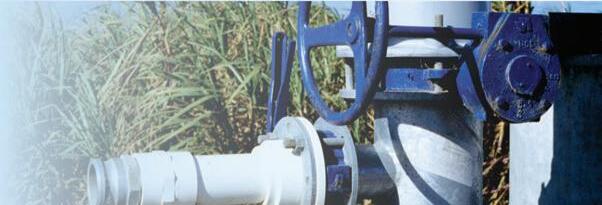
Principal Technical Advisor

Yet our relationship with farming faces complex evolving challenges – the spectre of climate change, biological factors affecting animals and crops, global consumer fickleness and beyond-the-gate scrutiny of our industry.
Amongst this clutter, recent months have seen our rural communities dealing with the immediacy of windstorm damage and floods as the ramping up of climate change impacts on our complex farming systems. We’ve even been rattled by earthquakes.
It’s in these moments that the age-old debate of “action versus reaction” takes centre stage, as we ponder whether preparedness and planning should triumph over improvisation and uncertainty.

Good business in farming involves balancing the possibility of failure with the potential for success. The heartbreak of unexpected challenges can be mitigated by having a solid plan in place.
The windstorm that swept across our farms recently has again left some facing a
clean-up, and contemplating the power of the wind and the randomness of which district felt the damaging effects hardest. While we can’t control the weather, we can control how we react to it, and importantly, we can plan ahead.
When howling gales threaten our infrastructure, some farmers find themselves caught off guard. Extreme wind conditions have the potential to cause significant costly damage to irrigation equipment that disrupts the efficiency of irrigation scheduling for the rest of the season. It’s during such moments that we realize the true value of being proactive rather than reactive.
Have you and your staff rehearsed your Wind Plan where every staff member knows their role and your Point, Park, and Anchor actions? This month is likely not the last of the extreme winds for this year so if you’ve come through unscathed, great, but it’s not too late to get organized.
If you’ve already had damage, please be careful as you go about repairs as fallen machines can have some unexpected tensions in components revealed only when undoing bolts.
Similarly, flood frequency and severi-
ty seem to be on the rise due to changing climate patterns. Farmers situated near flood-prone areas have had to grapple with submerged fields, damaged crops, and ruined irrigation infrastructure. This risk is promoting close scrutiny on whether a government policy response is needed in the form of relocation powers.
A community and industry-led adoption of best practice risk management would be a better pathway than a purely regulatory intervention.
Those who set aside time in their busy farming calendar to evaluate, plan for and where possible, implement risk mitigation actions generally fare much better than those who wait to react.
While enjoying the lifestyle of farming and growing, your farm business deserves looking closely at things that might prevent the achievement of your goals – a formalized risk approach.


Risk, in farming, is defined by an intersection of consequence and likelihood of future events. It’s not about eliminating uncertainty, that’s probably unachievable in farming, but it is about managing risk intelligently.
One of the unique skills of New Zealand
farmers and growers is their ability to adapt and problem-solve in the face of adversity. But, planning makes the difference between being overwhelmed by changes and taking challenges head-on.
While intuition definitely has its place in farming and mustn’t be underestimated, it must also be complemented by knowledge. It’s worth reading the latest NIWA information on what El Niño might mean for your district, predicated to be the strongest exhibition of these weather patterns for 80 years, with long periods of summer heat, dryness, and persistent westerly winds.
It’s not about forsaking the joy of farming but enhancing it through prudent choices. New Zealand farmers and growers have always been known for their resilience. Let’s carry this positivity forward with long term thinking, where risk assessment and planning become a guiding principle.
The reward and satisfaction of a job well done in successful adaptation will be reflected in the continued sustenance of communities that rely on the output of our farms and orchards.
‘risk management is a better pathway than regulatory intervention.


Irrigation in Canterbury began with large areas of border dyke, supplied by open-race schemes. In the early 2000s, this changed rapidly to spray irrigation, predominantly centre pivots.


There is now very little border dyke remaining. A number of irrigation schemes have converted from open race to pressurised pipe distribution, eliminating race leakage and by-wash losses. Overall, much less water is now being used to irrigate each hectare, with increased efficiency of water use.
On the face of it, increasing water use efficiency seems like it must be good thing: less stress on our precious water resources, and more “crop per drop”.
A win-win surely? Unfortunately, the answer isn’t that simple and requires a biggerpicture view of the catchments that irrigation is occurring in. International research on this issue concluded that increasing the efficiency of on-farm water use rarely results in less water being used at a catchment scale. There is also potential for unintended adverse consequences.
The Land and Water Regional Plan and the Canterbury Water Management Strategy both aim to increase efficient water use in Canterbury. In part, this has driven the changes from border dyke to spray systems. Other
drivers are the opportunity to use water over a greater area (if the amount of water originally allocated is retained by the consentholder or irrigation scheme shareholder), and reduction in labour costs. These factors generate benefits for individual water users, but not necessarily for the hydrological system.
There are many ways of defining ‘efficiency’ in relation to irrigation, depending on the viewpoint (agricultural production, water allocation, hydrology) and the scale (paddock, farm, catchment). By any definition, inefficient use of water does not remove it from the hydrological system – it shifts it from one place to another: ‘losses’ at the paddock, farm or irrigation scheme scale may be re-captured elsewhere, and may have other benefits.
Inefficient use of water from a river or a deep aquifer source may result in more water recharging the shallow groundwater system and increasing flows in spring-fed streams. If inefficient water use has been occurring for many decades, the “losses” may have become an integral part of the local water resource system: for example, water supply bores may depend on groundwater being at a certain level, or the ecosystems in lowland
streams may have adapted to the current flow-regime.
Water use and water quality are closely and inextricably linked. If water use efficiency increases, but land-use practices remain the same, there is less water flowing through the system to dilute the load of contaminants such as nitrates. This can result in higher contaminant concentrations in shallow groundwater and the surface waterways that are fed from it.
Let’s be clear, I’m not endorsing wasteful use of water. However, we need to ensure irrigation efficiency is not considered in isolation, and that the benefits for individuals are balanced with the broader system benefits.
The same researchers that I’ve referred to earlier suggested five steps:
• Robust water accounts, increasing transparency of how much water is being used, and where, and where the losses go.
• Limits on water use (we already have this through seasonal volumes and other consent conditions).

• Evaluating the effects, including risks, of increasing water use efficiency.
• Understanding whether the benefits of increased water use efficiency outweigh the costs.
• Water allocation policies that drive the desired outcomes at all scales.
A common thread through all of these steps is the need for robust and comprehensive data, enabling better understanding of water use and the catchments that it occurs in.

Amin Nasser, CEO of Saudi Aramco and recent addition to the Board of Directors of BlackRock has been saying over the last year or so. And that is this.
] by Solis Norton
The COP 28 United Nations Climate Summit hosted in Saudi Arabia will be presided over by Sultan Al Jaber. He is the chief executive of the Abu Dhabi National Oil Company. He is also United Arab Emirates minister for industry and advanced technology.

An oil boss heading a climate change conference. The greenies are outraged. But there is a method in this apparent madness that may well appeal to you, as it appeals to me. It will aim to change the conversation between the fossil fuel tribe and the renewable tribe.


This will not be easy. And not just surviving the protestors who will be plentiful outside the conference venue. But Sultan Al Jaber is no light weight and he will put uncomfortable truths in front of Greta Thunberg and her followers. The outcomes of this will truly be fascinating.
We kind of know what he is going to say. It will run along a very similar theme to what
Sultan Al Jaber is going to say that the current transition plan is flawed and that alternatives to fossil fuels are not ready to shoulder the load of the global energy system. If we look around we see this to be true.
Sultan Al Jaber will say that the idea of all nations agreeing to a transition as a collective is a western and point of view and also flawed. Instead, he will say, nations will adapt at their own speed as they are able. Seems reasonable.
Sultan Al Jaber will say that the global energy transition must work more closely with the large energy companies. These companies have the expertise, experience, capacity, infrastructure, and the will to decarbonise.
They know how to do mega size projects, that’s their business. They are a big part of the solution. Imagine Greta’s face when she hears that. But it makes sense.
Sultan Al Jaber will point to the recently launched Saudi Aramco Sustainability Fund of 1.5 billion dollars, possibly the largest of its type in the world, and say ‘nobody can say we aren’t trying too’.

Sultan Al Jaber will point to investment in the oil industry having halved over the last six years or so. Because of this divestment, trumpeted by the renewable tribe as success, oil supply will not keep pace with demand if the global economy truly recovers from covid and presses on with the growth it has known in preceding decades. In which case the ‘Degrowth’ paradigm is here.
He will cleverly be seeking to shift responsibility for the ensuing economic volatility from the fossil fuel tribe toward the renewable tribe. Rightly so. Will it work?
Well it doesn’t really matter whether or not it works. Because either way the fossil fuel tribe and the renewable tribe will, together, face the fact that our global transition is not going to go as leaders had hoped. Together perhaps they can find a better alternative.
There are also a couple of things Sultan Al Jaber will not say. He will not say that Saudi Arabia, along with Iraq, the United Arab Emirates and some others are likely to join the BRICS nations next year. Nor is he likely to comment on how this will boost the global reserve of oil held by this group, or what that might mean to those outside the group. Like us.
If we read between the lines, Sultan Al Jaber is suggesting kiwi farmers keep doing what they do well and to adapt as quickly as they are reasonably able to lower emissions farming systems. He’s also saying they shouldn’t feel like everything is their fault, because the renewable tribe have a fair amount to answer for too.
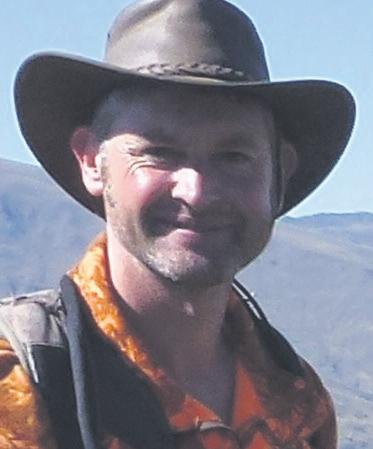

Should be a fascinating few days, November 30 to December 12.
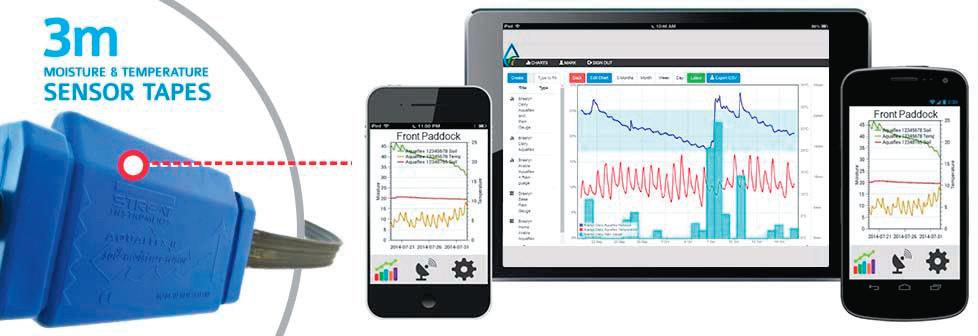
T h e l a r g e s t s o i l s a m p l e r e f e r e n c e a r e a o n t h e m a r k e t t o d a y
( 6 l t r s o r 3 7 0 c u b i c i n c h e s ) .

H i g h l y s e n s i t i v e T D T t e c h n o l o g y t h a t i s h i g h l y a c c u r a t e i n a l l s o i l c o n d i t i o n s
M u l t i p l e i n s t a l l a t i o n m e t h o d s t o c a p t u r e t h e r i g h t d a t a
U n i q u e l y a d a p t a b l e t o d i f f e r e n t c r o p p i n g , o r c h a r d , v i n e , a n d

i r r i g a t i o n s y s t e m s t y p e s
T h e l o n g e s t s e r v i n g i n s i t u s e

It’s been an early start to the irrigation season, but as I sit here writing this article in late September over 20 mm has now fallen meaning irrigation should not need to start again until early October.
]by Andrew curtis]Primary Insight
This season’s predictions are for a strong El Nino weather pattern, which means careful management of water allocations will be required. Taking account of the weather forecast, specifically rainfall and ET in the spring and autumn, is important for a productive irrigation season.
Over the last couple of days, I’ve seen irrigators going when perhaps they should not. Over 20 mm of rainfall and ET dropping to under 2mm/day has been forecast for the last 3-days. The weather has been unseasonably warm to date meaning irrigation has been justified (ET has averaged 3.5mm/ day and there’s been no rain).
However, once the 3-day weather forecast is predicting significant rain and low temperatures, at this time of year we should be switching off, seeing what happens, and then catching up as required. This approach will save water allocations for the much drier times ahead.
Given 2023-24 is predicted to be a dry one, our suggestion is all irrigators need to have a close focus on their water meter da-
ta this season. In part this is to ensure allocations are not exceeded and compliance issues avoided, but as important is an accurate record of how much water is required in a dry season.
We’ve recently dealt with a couple of water take consent renewals where there has been difficulty retaining their full allocation. One involved an inaccurate water meter, and the other a poorly maintained telemetry system with gaps in the data record.
Environment Canterbury now takes account of historic water use when renewing consent allocation volumes. If the actual use is less than that allocated, then allocation volumes are being reduced accordingly. This is understandable because many zones are currently over allocated. When water use data is inaccurate this can jeopardise the viability of the farming business, or lead to a very expensive consent renewal process.
Checking the water meter and telemetry system is working is key. At the very least a back of the envelope calculation comparing expected flow rate with that being recorded should be undertaken. Better still is having the water meter and telemetry system independently verified. Quality water use data will
HIGH DRY MATTER POTENTIAL
ensure you are well set up for your future consent renewal.

Primary Insight are specialists in irrigation and water measurement. If you want to put in place reliable and accurate soil moisture monitoring on you farm, need support with trouble shooting an existing installation or would like to verify your water meter is reading correctly, we are here to help.


Check: checking the water meter and telemetry system are working properly is key to efficient irrigation.

Alternatively, join us at one of our free irrigation workshops in October and November.

check out the event listings on our website for more information on dates and locations www.primaryinsight.co.nz. You’ll also get a certificate of attendance that satisfies your Farm Environment Plan irrigation training requirements.

■ The Generator Value Blend is a perennial based pasture seed mix that offers excellent year round dry matter production.

■ The Generator Value Blend is a low cost mix suitable over a wide range of soil types and fertility situations.



■ The Generator Value Blend is suitable for all types of situations including; Dairy, Sheep, Beef and Deer farming.

Farmers are able to access high quality and site specific weather forecasts and data from their smartphones thanks to a partnership between global farm-management company CropX, and MetService.
] by Kent caddickMetService provides weather data for CropX to share via its cloud based platform direct to an app on the farmer’s phone. The data will be backed by science, based on modelling as well as from local observations from specific weather stations in farming hubs.
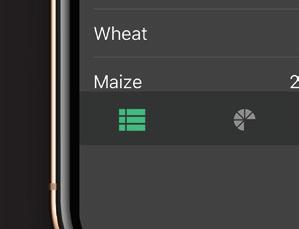


“This partnership means that as well as farmers having access to the data our soil monitors provide, they will have further and fuller information on the weather in order to make good water and nutrient management decisions to ensure the best outcomes for the pasture in the growing cycle, with minimal water and fertilizer inputs,” CropX New Zealand managing director Eitan Dan said.
The agreement will see CropX using MetService weather data on their farm-management platform, with MetService now a licensed reseller of CropX’s technology.
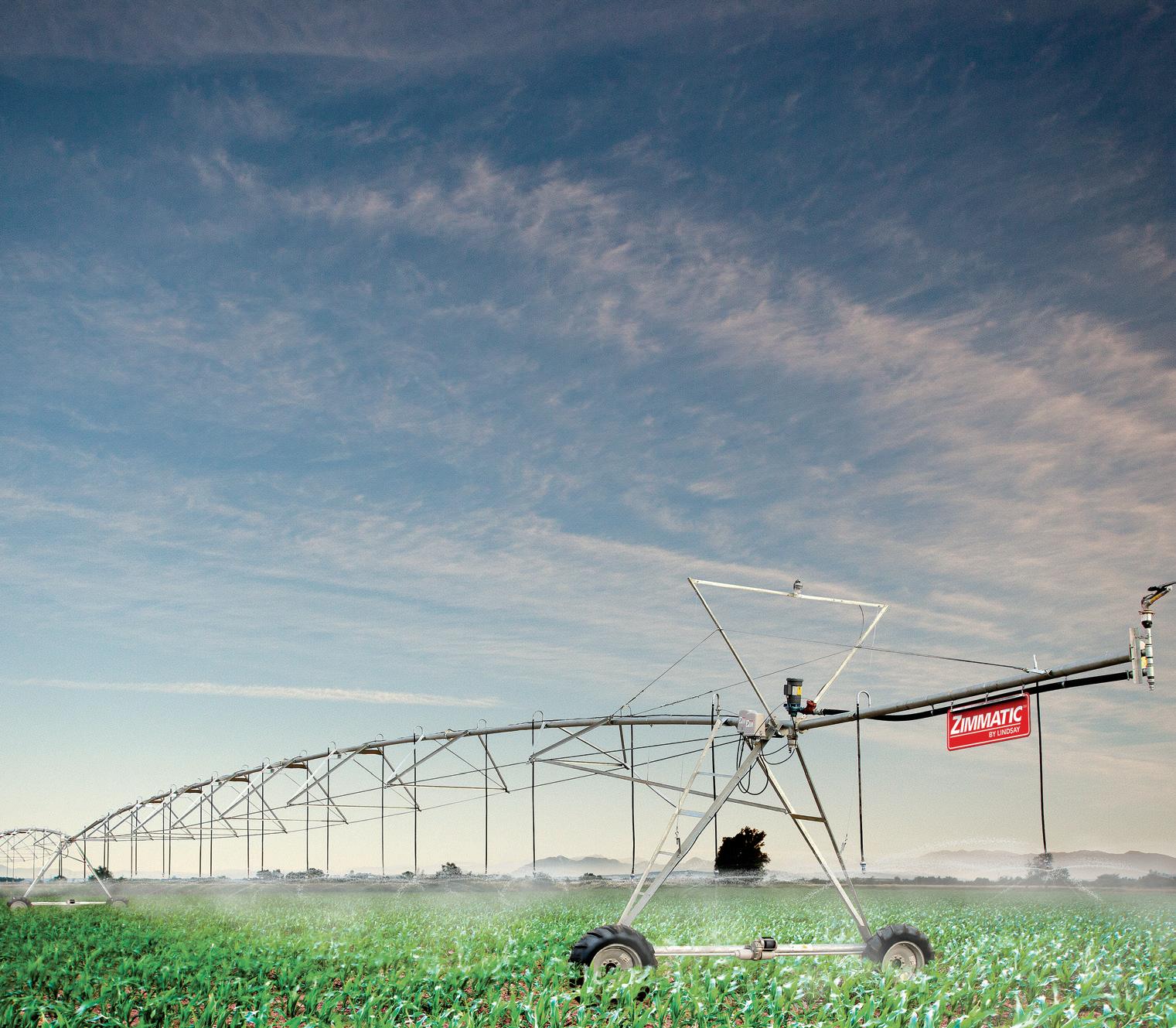
“No business could be more at the mercy of weather than farming,” Dan said.
“New Zealand farmers make important and costly decisions based on the weather multiple times a day – so accuracy and ease of accessing weather information is essential. We want to provide this to our CropX customers to supplement the data they receive from our soil sensors.”

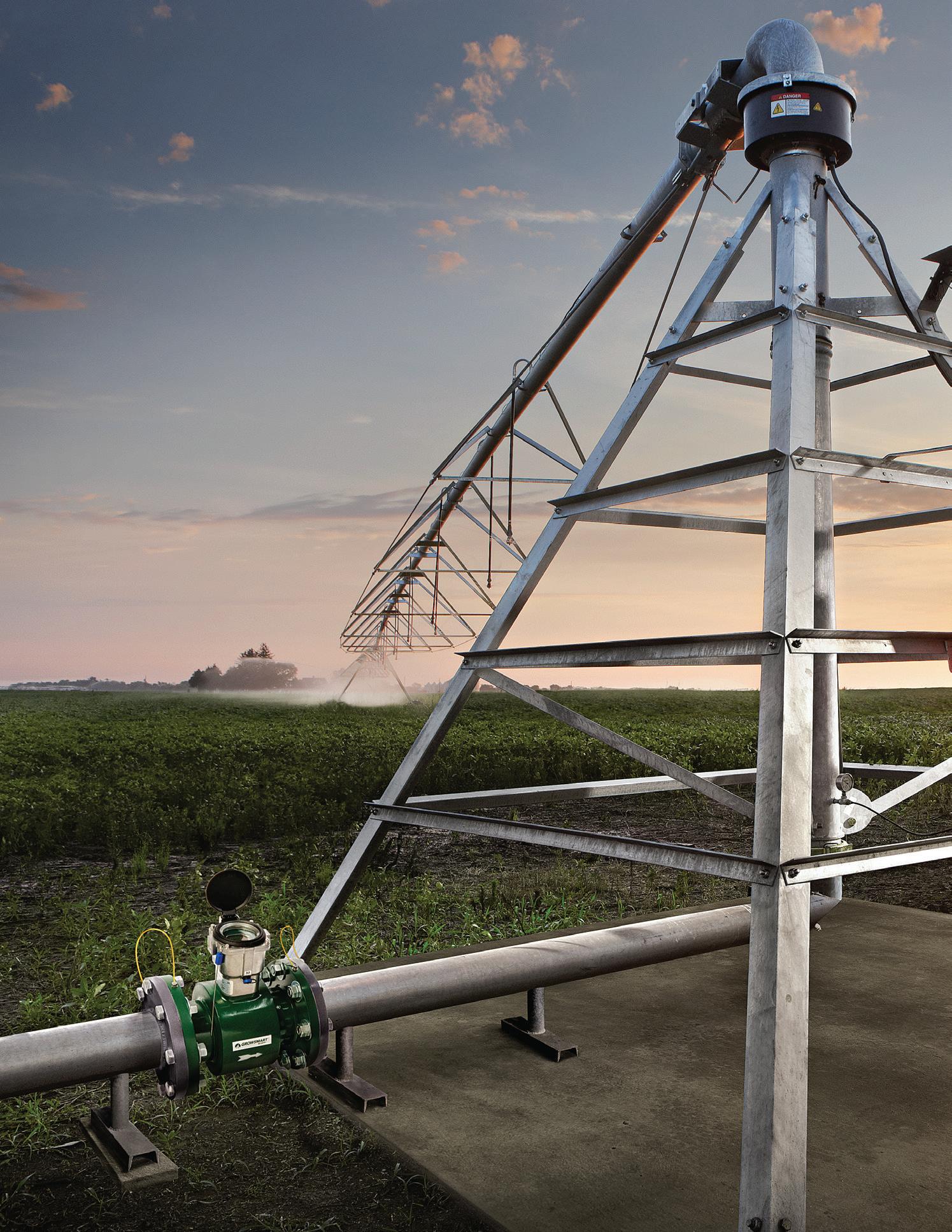
MetService business development manager Peter Fisher said they rigorously evaluated CropX technology, and were impressed
by the consistency and accuracy of the data and the seamless setup and operation.



“We employ over 100 meteorologists in New Zealand, and operate the most in-depth weather observation network in the country, including New Zealand’s weather radar,” Fisher said.

“We were very impressed with both the hardware and software CropX has developed






to monitor various aspects of soil, including moisture levels, and we see multiple exciting synergies with CropX.”


CropX was founded after angel investors provided capital for initial work carried out by Manaaki Whenua – Landcare Research, a New Zealand Crown Research Institute.
Dan said he was excited for CropX New Zealand to continue growing its national pres-
ence and to work with more New Zealand businesses to help Kiwi farmers and growers.
“We’re very much a New Zealand business and we want to provide products and services which respond specifically to the needs of growers and farmers here in New Zealand who take land and water management, in the best interests of the environment, very seriously. We are supporting them with this.”
BY LINDSAY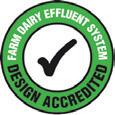


This summer is likely to be warmer, with rainfall normal or below normal – which means you’ll be looking for ways to be more efficient with your irrigation this season.
Efficient irrigation significantly reduces the risk of nutrient leaching, and saves money and water.
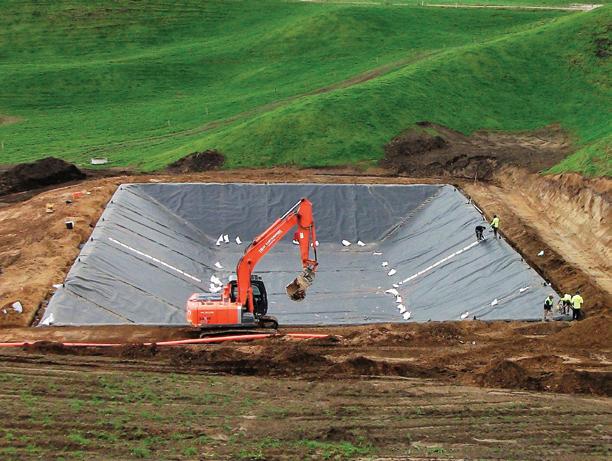

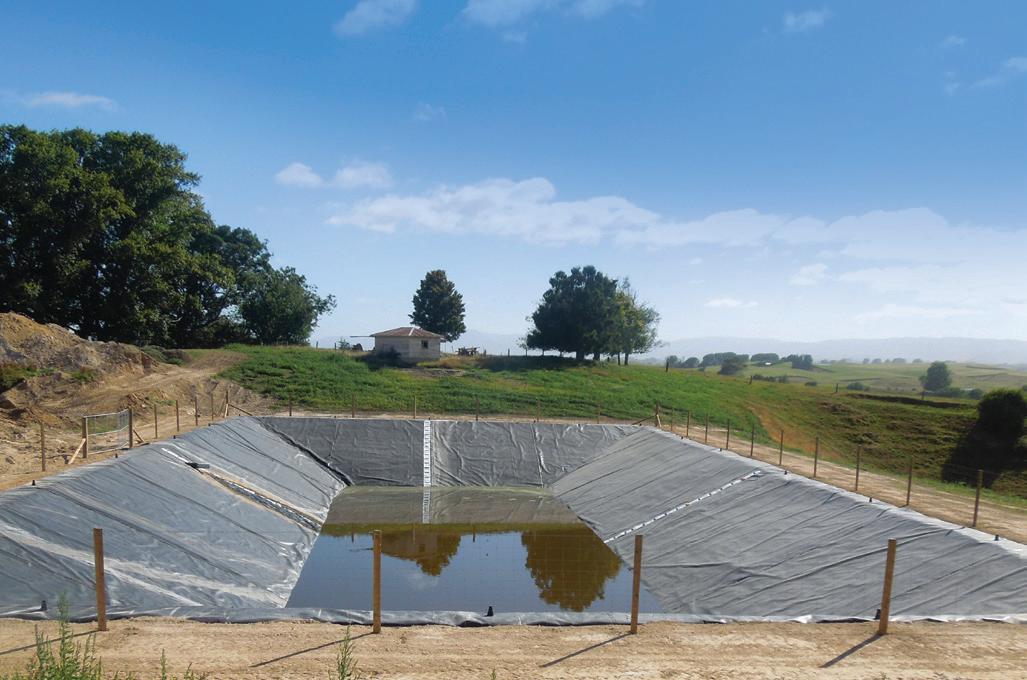

Watch your triggers
Use soil moisture and temperature triggers to start the irrigation for the season. For soil temperature, 11oc is recommended. Note that the soil moisture trigger of around 5060% of Profile Available Water (PAW) needs to be triggered as well. Irrigating when soil temperatures are too low will depress plant growth, as irrigation water will further cool the soil.
Maintain your system
Plan your irrigation to start with a spring check of performance and equipment. Well performing systems save money and time and are more water efficient.
Efficient irrigation delivers water at a rate and spread that reduces drainage and evaporation losses. Check your irrigator and fix problems before doing a ‘bucket test’. The Check-It app is easy to use and can be downloaded from app stores. It will test how much water you are applying and how evenly it is being applied and distributed.
If you do not have a commissioning test for your irrigator, get a professional to carry
out a capability assessment. Regular daily, monthly and seasonal checks are essential.
Knowing your soils and how much water the soil type can hold is critical to irrigation scheduling. Good soil moisture monitoring systems (tapes, probes) installed, calibrated and used correctly are the most efficient way to measure soil moisture.
If you do not have soil moisture monitoring, soil water budgets are a low-cost method used to schedule irrigation. They use inputs
of rainfall, evaporation, weather forecasts and plant demand to produce a daily water budget.

Aim to keep the soil moisture between the plants’ stress point (around 50% PAW) and the field capacity. Allow a gap of around 10 –20% below field capacity to reduce drainage risk from rainfall after irrigation.

Good records, kept over time, help you de-
On schedule: Knowing your soils and how much water the soil type can hold is critical to irrigation scheduling.
cide on daily, monthly and seasonal maintenance requirements.
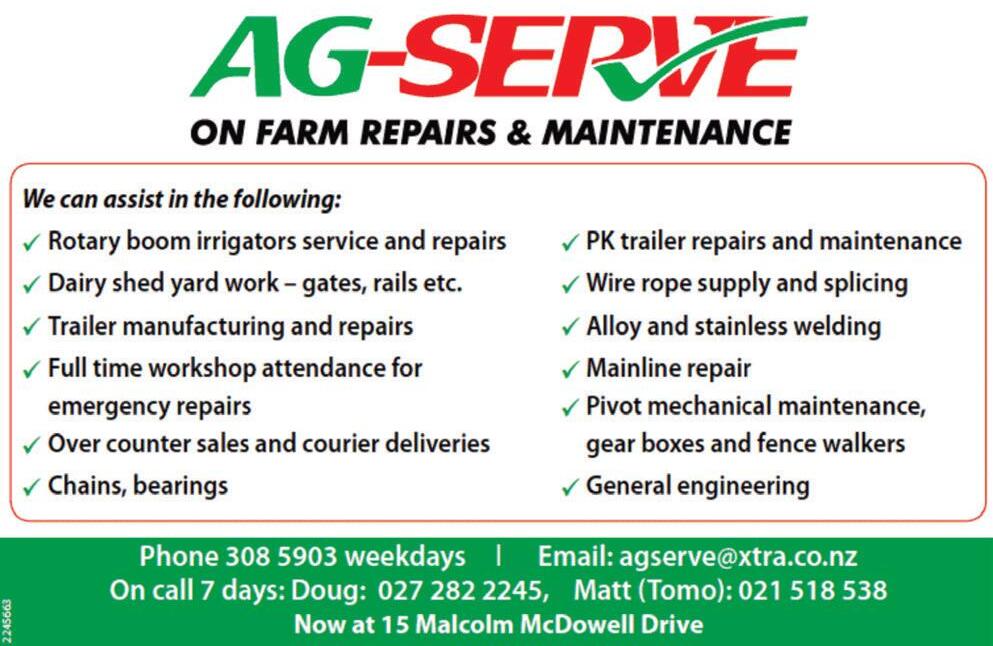

Record keeping also helps ensure all staff are aware of trends in the past and help inform decision-making going forward.
Need more help? You can get in touch Environment canterbury’s Land Management Advisors for free advice on 0800 324 636. Irrigation NZ also has some great resources at www.irrigationnz.co.nz

Environment Canterbury has published its annual Contact Recreation Report. The report grades over 100 of Canterbury’s most popular swimming spots to show their suitability for swimming and recreation.




Grades are determined by five years’ worth of water monitoring and sanitary survey data collected at each site.



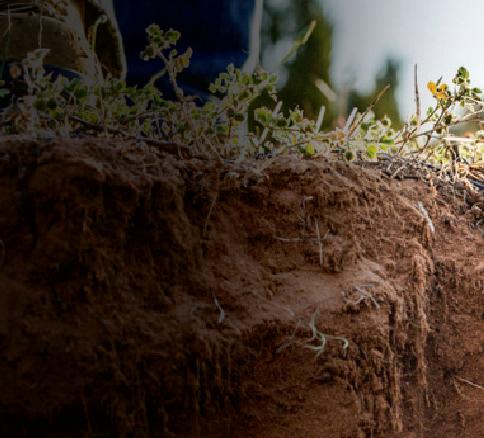
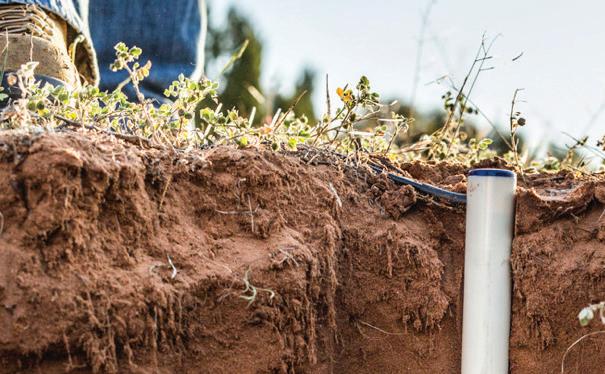


The information is provided to local health authorities and district councils so they can take the appropriate public health measures at each location. This includes signage and alerting community groups who commonly use the site.

Notable differences this year for coastal swimming spots include Tikao Bay in Akaroa and West Caroline Bay in Timaru, which have both changed from fair to poor grades.
“It’s important to note that this is only a small part of Caroline Bay, which has been previously identified as unsuitable, the rest of the bay remains swimmable,” said Shirley Hayward, surface water science team leader.
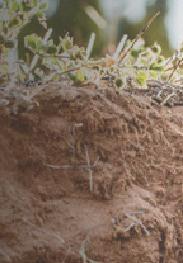
Charteris Bay, Avon-Heathcote South New Brighton and Duvauchelle Bay have all changed from good to fair quality. These sites remain generally suitable for swimmable.
“It’s worth noting that no changes in longterm grades have occurred at Lyttelton Harbour/Whakaraupo this year. This means the only spots deemed suitable for swimming are Paradise Beach – which holds a good grade – and Church and Cass Bays, which both remain fair,” Hayward said.

“With human sources of faecal contamination detected at a number of locations in the harbour, including Corsair Bay, these spots are not recommended for contact recreation due to the high health risk,” she said.
In good news, five freshwater sites have improved in grade. Lake Tekapo/Takapo Beach changed from good to very good. Waiau Uwha at Waiau (SH70), Ashley River/ Rakahuri above Rangiora-Loburn Bridge, and Opihi River/Opihi at SH1 have all improved


from fair to good. Rakaia River at Gorge has improved from fair to good.

Lake Aviemore at Waitangi and Orari River at the Gorge sites saw a decline from good to fair, but remain generally suitable for swimming.
Otukaikino River at the Swimming Hole and Pareora River/Pureora at Evans Crossing have both changed from fair to poor.
“Improving water quality is a team effort, not only by us and our partners – Te Whatu Ora, territorial authorities and Runanga – but



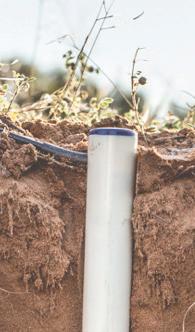



Report: environment canterbury has published its annual report grading over 100 of canterbury’s most popular swimming spots.
also with the community,” Hayward said.
“Residents play an important part, especially around the Lyttelton/Whakaraupo Harbour and Akaroa, where the Christchurch City Council continues its investigation into how these contaminants are entering waterways in the area.
“The investigation is complex as every public and private connection poses a potential contamination source, so it may take some time.”

New scientific data highlights the success of dairy farmer and wider sector efforts to improve surface water quality across five New Zealand catchments.



As part of an Our Land and Water study to analyse historical data, DairyNZ’s water quality science team, in collaboration with AgResearch and Lincoln University, has revisited dairy farms in the Waiokura (South Taranaki), Toenepi (Waikato), Waikakahi (Canterbury), Bog Burn (Southland) and Inchbonnie (West Coast) catchments to assess whether on-farm actions have helped improve water quality over time.
The five catchments are dairy farming areas that were part of the 2001-2010 Best Practice Dairy Catchments project, which monitored water quality and environmental work on-farm.
Monitoring of water quality and changes to farm practices continued from 2011-2020, as part of national long-term data collection.
Researchers found that, over the 20-year monitoring period, including post-extension, 70 percent of in-stream water quality trend directions were improving or showed no change.

The median levels of most contaminants in water have also decreased, due to farmers implementing good management practices (GMPs) such as improved effluent
management and stock exclusion.

The study found in-stream concentrations of phosphorus and suspended sediment decreased the most in response to on-farm work.
DairyNZ general manager (sustainable dairy) Dr David Burger said overall, the research shows the implementation of GMPs on-farm does improve water quality.
Burger said the analysis shows the good outcomes achieved by improving management practices on dairy farms.
“The mitigation options dairy farmers can take to reduce footprint are widely known, but analysis of the positive impacts of these over time is less available.
“So it’s good to see this dataset showing extension efforts to help farmers improve their management practices have led to water quality improvement.”
Research lead and Our Land and Water National Science Challenge chief scientist Professor Rich McDowell said the findings are positive but also show continued action is needed in key catchments to maintain the momentum.
“The data shows that, over the 20-year period, many trends were improving or showed

no change. However, we know nitrogen levels increased in many catchments due to development on other dairy farms over the same period,” McDowell said.
“This means there is still more to do in some areas to lower nitrogen and E.coli concentrations. In some catchments, more than good management practice may be required, such as land-use change, to meet water quality expectations.”
Meanwhile Dr Burger said DairyNZ continues to work with farmers to develop onfarm practices, provide a scientific evidence
Improvement: DairyNZ general manager (sustainable dairy) Dr David burger says recent research shows the implementation of GMPs onfarm improves water quality.


base to help inform practical and fair regulations and demonstrate the positive results of the actions farmers are taking to improve the health of waterways.
“Farm environment plans identify actions to improve water quality, reduce greenhouse gas emissions and increase biodiversity, and are tailored to individual farms.”
Currently, more than 70 percent of New Zealand dairy farms have farm environment plans and 45 percent have greenhouse gas farm plans. By 2025 all farms will have both plans.







Gareth Cox Canterbury Rural Manager
M 021 250 9714 E gareth@pb.co.nz
Matt Collier Rural/Lifestyle Sales Consultant

M 027 205 6626 E mattc@pb.co.nz
Simon Anderson Rural/Lifestyle Sales Consultant

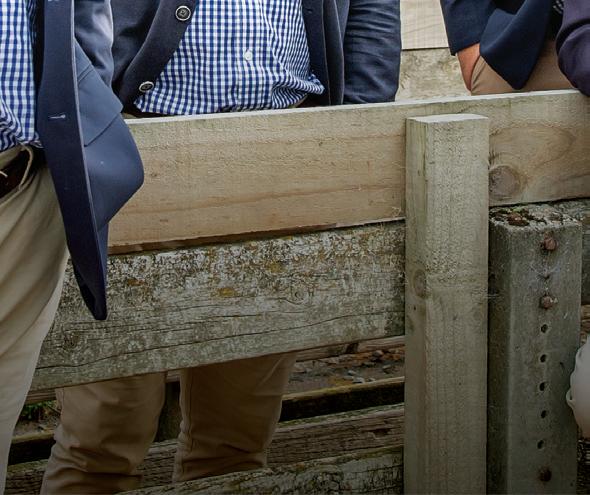

M 021 0828 5532 E simon.anderson@pb.co.nz
Grant McIlroy Rural/Lifestyle Sales Consultant
M 027 345 9262 E grantm@pb.co.nz
With a full rebalance of the Chinese dairy market not expected in the near term, dairy farmers in New Zealand and around the globe will need to manage through more financial pain in the months ahead, according to Rabobank’s latest Global Dairy Quarterly report.
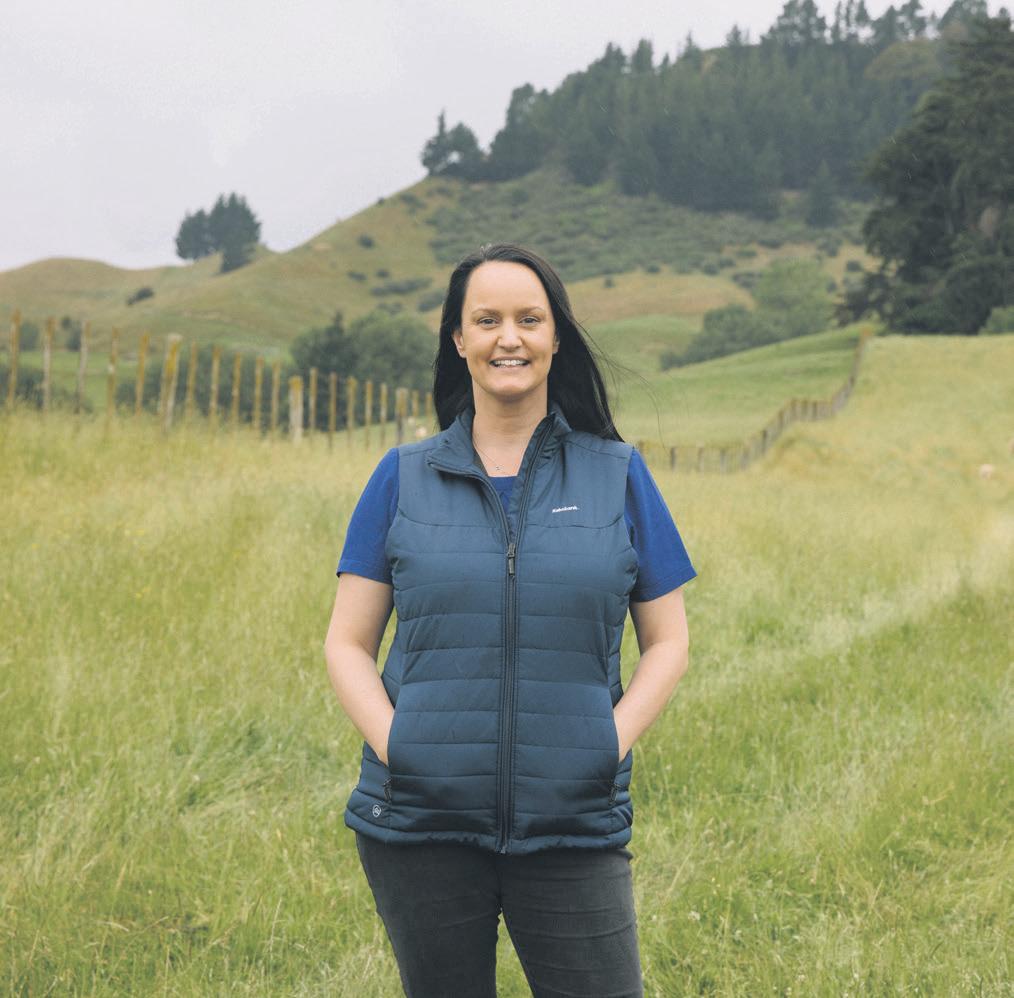
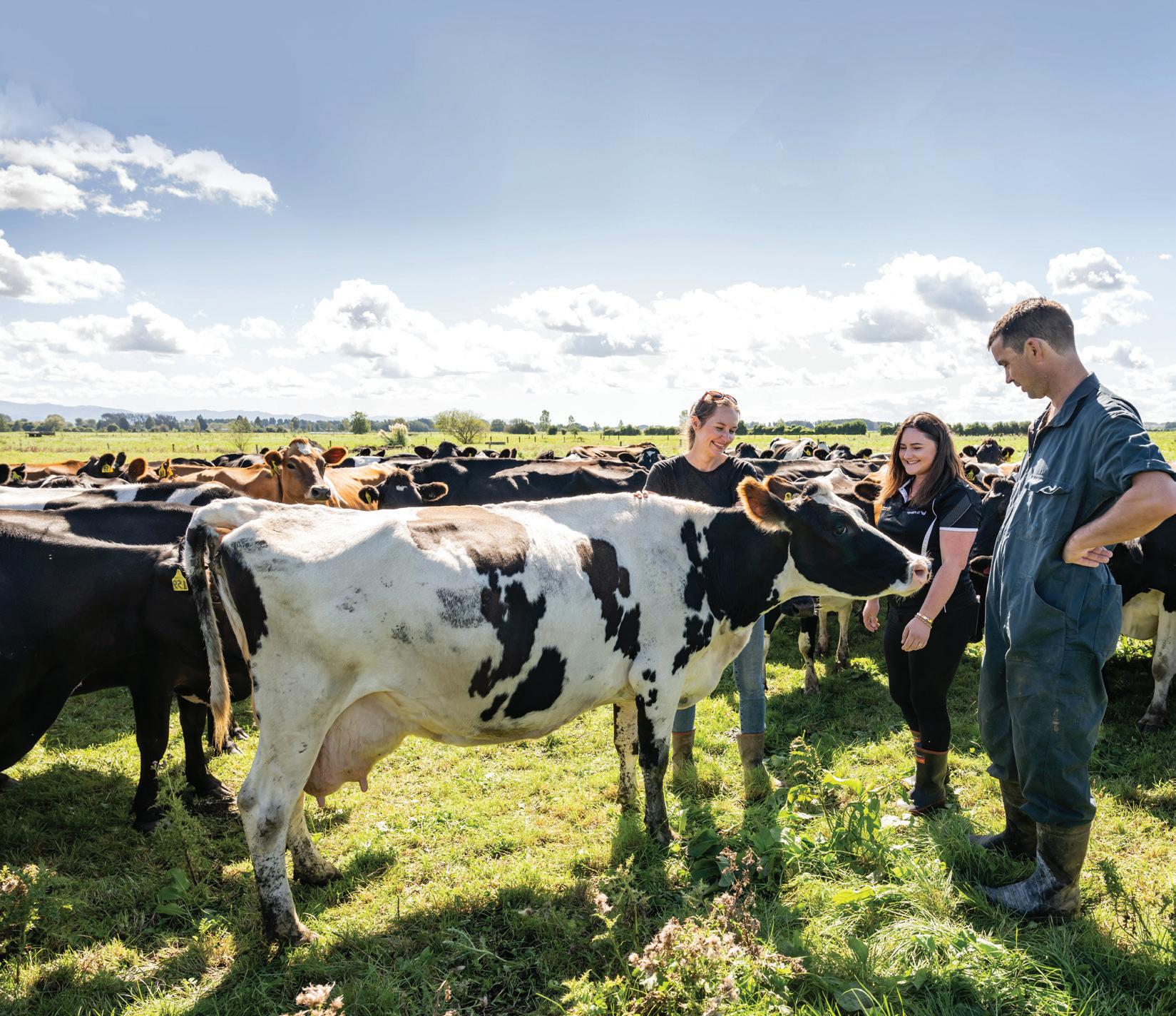

But the storm won’t last forever, the report says, and, with lower global prices stemming supply growth in key dairy production regions, there is an increasing possibility a demand resurgence could emerge well before milk output can recover, creating a whiplash effect in global markets and a bullish run in to 2024.
In the Q3 report, titled Progressing Past the Pain, Rabobank says a myriad of factors has converged to drive the longed-for dairy demand recovery in China, the world’s largest dairy importer, even further into the future.
“The severity of the economic headwinds and the duration of the lull in economic growth in China are shrouded in uncertainty, and this reduces the likelihood of a strong demand recovery that would provide a solid footing for global dairy markets,” report coauthor Rabobank senior agricultural analyst, Emma Higgins said.
“On the supply side, we are now starting to see Chinese milk production begin to slow, and we do expect this trend to continue in the remainder of 2023 and into 2024, but a complete market rebalance in China is still a way off.”
The report says lower demand for dairy imports in China has reduced global dairy prices, and, in turn, flowed through to reduced global dairy production.
“Milk production from the Big 7 export regions (New Zealand, Australia, the EU, the
US, Uruguay, Brazil and Argentina) is now anticipated to grow by 0.3 per cent year-on-year in 2023, downgraded from last quarter’s estimate of 0.7 per cent, with this driven by reductions in most key global regions, including the US, EU, and New Zealand,” Higgins said.
“Into 2024, output is expected to climb by 0.4 per cent, far less than the 1.6 per cent annual average gain from 2010-2020.”
The report says slowing global milk production will eventually match the tepid demand growth noted in most regions, preventing further significant price declines.
While the immediate outlook for dairy prices remains challenging, Higgins said, there is a ray of optimism for the months ahead.
“The US Class III milk price and the GDTweighted average price both fell to Covid-level lows in recent weeks, allowing buyers to replenish stocks at bargain prices,” she said.
“Demand from Mexico, the second-largest dairy importer, has also been robust, supported by a stronger peso. And, even though the Global Dairy Trade (GDT) index has weakened, demand has not entirely evaporated from China, which has accounted for roughly 30 per cent to 40 per cent of the sales on the GDT since Q2.”
The reports say these factors make a demand-led resurgence in global dairy markets in the months ahead a growing possibility.
“If buyers become increasingly confident that prices have hit a low for this cycle and flock back to procure products en masse, the world may be short on milk,” she said.
In an ever-changing world it’s comforting to know that some things remain the same. September nervousness has been a constant for as long as I’ve been involved in pastoral farming. Animal demand increases with lambs and calves hitting the ground and the steadily lifting requirements of their mothers.
Available feed supplies dwindle by the day, here in the South soil temperatures at the time of writing are still well below 10c, the temperature at which large amounts of nutrient, including nitrogen, flood the soil driving spring growth.



This will have taken place by the time this article is published however there are still some important issues between now and Christmas to think about.

The application of synthetic nitrogen in July and August does increase September growth however at the expense of growth in November and December.
You can’t have something for nothing, and increased nitrogen stimulated early season growth always comes at the expense of later season growth.
This has in large part driven the ‘grab what you can before Christmas’ mentality, resulting in shortened intervals between grazings and a sense of chasing one’s own tail.

Nitrogen driven feed in September and October is high in crude protein, more correctly nitrates. Excess intake by grazing animals results in rapid weight loss, calcium/magnesium and trace element deficiencies as animals excrete feed prior to full digestion.
This ratchets up the pressure on operators who often feel they are at best limiting damage. Then there’s rising milk urea levels with excess urea in urine leached through wet soils resulting in higher than desirable nitrate-N losses to groundwater.

These issues are often regarded as the price paid for high production, yet there are farmers whose spring production is significantly higher overall than mainstream.

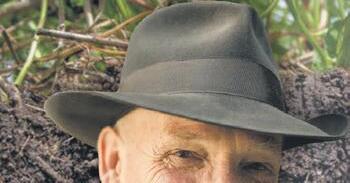

By using Functional Fertiliser products and implementing longer interval grazing management, costs are reduced and profitability is such that the decision is how the surplus is best spent.
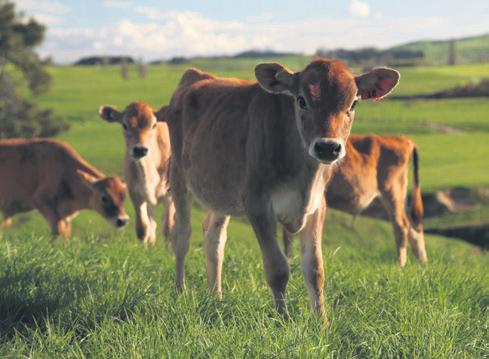
The amount of energy supplied by sunshine is almost everything in spring. Still bright sunny days result in the rapid lifting of soluble sugars in plants with more nitrate converted to full protein.

Protein to fat ratio in milk lifts, lactating animals lose less weight, animals graze rather than browse and there’s genuine pleasure

in spending time in the paddock with animals.
Even without synthetic nitrogen applications there’s an excess of nitrogen available which requires managing. The best option is longer covers allowing the natural process of photosynthesis to fully take place.
To achieve this, grazing intervals are best maintained so that 3500kgDM/ha is available for lactating cows, which may mean an optimum interval of around twenty-five days.
As a rule of thumb, a genuine 30 days between grazings by Christmas results in one grazing in January, one in February, and a portion of the property grazed prior to autumn rain arriving, a normally easily manged situation.
Clover growth has and will always remain the key to pasture growth from midNovember until mid-March, a 120-day period during which time 50% of the annual total pasture is often grown.
Understanding the soil fertility inputs and management techniques necessary to maximise growth over that
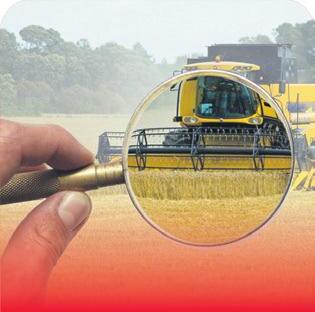




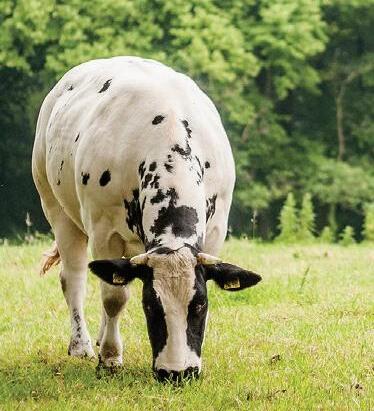
The Dairy Companies Association of New Zealand (DCANZ) is welcoming a legal ruling that Canada is not implementing its dairy market access commitments under the Comprehensive and Progressive Agreement for Trans Pacific Partnership (CPTPP).
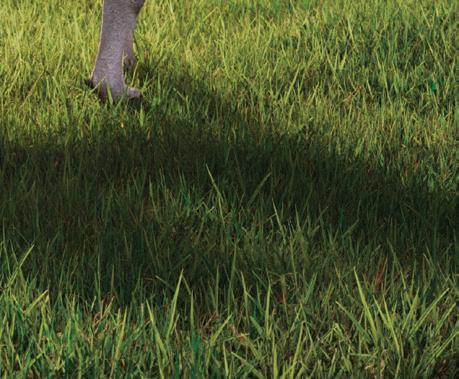
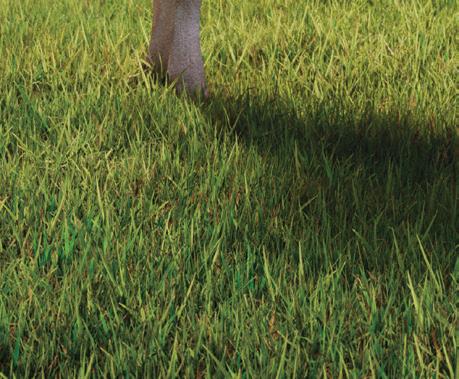



 ] by Kent caddick
] by Kent caddick
A legal panel of three international trade law experts has upheld New Zealand’s claims that Canada is not complying with the agreement’s requirements to administer quotas in a manner that allows importers the opportunity to utilise the volumes fully, and to not limit access to a quota allocation to its processors.
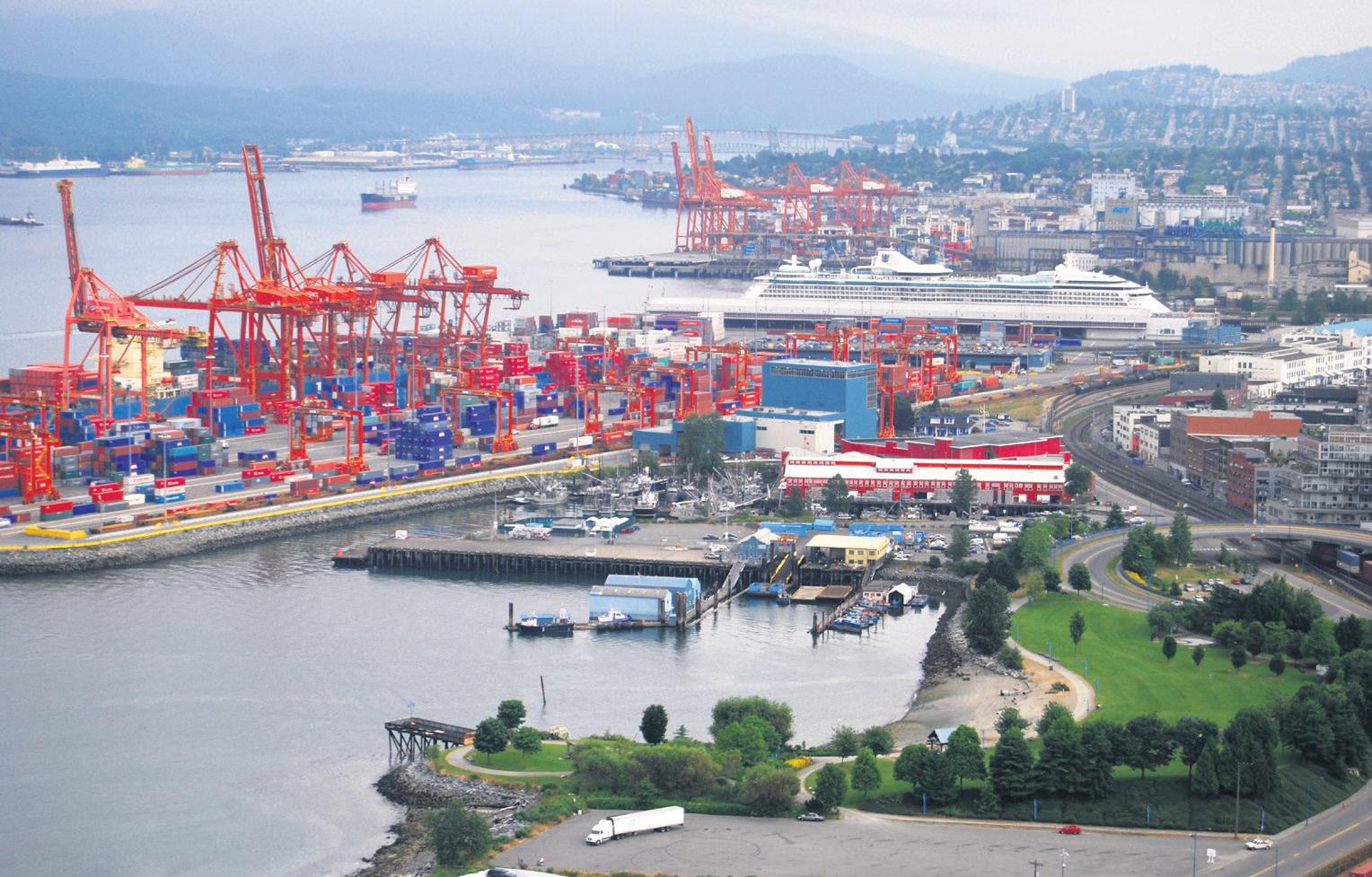
“We applaud the clear ruling that Canada is not implementing the dairy access it agreed in CPTPP as it should be,” DCANZ executive director Kimberly Crewther said.

“It is outrageous that Canada has sought to undercut the access it promised by reserving most of the quota quantities for domestic processors of those same products, who are least likely to import,” Crewther said.
She said this legal dispute is the first of its kind under the CPTPP and underscores the importance of dispute provisions in trade agreements.
“DCANZ represented its members in the legal process by submitting to the panel as a ‘non-governmental entity’. In its written views, DCANZ highlighted how the Canadian quota administration deliberately interfered with the willing-buyer-willing-seller relationship to deter dairy imports.
“Defending our access rights under all New Zealand trade agreements is important, and taking on a G7 country with a history of bending the rules has been no easy task,” Crewther said.
Notwithstanding its welcoming of the case outcome, Crewther said DCANZ is frustrated that, where dairy is concerned, Canada has a repeated pattern of needing to be legally compelled to adhere to its international trade commitments.
Following the panel report Canada is obliged to bring its system into compliance. It is essential for DCANZ that this occurs fully and without unnecessary delay.


“Canada’s failure to fulfil its obligations


has robbed New Zealand exporters of trade opportunities for over four years now. DCANZ is calling on the Canadian Government to do the right thing by changing to a system that is fair and above board as soon as possible.”

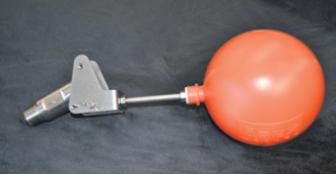


Land-use change continues to have an impact on livestock numbers, according to a study by Beef + Lamb New Zealand.
] by Kent caddickThe B+LNZ Stock Number Survey, which provides an assessment of New Zealand’s sheep flock and beef cattle herd, shows the breeding ewe flock continues to decline with a 0.9 percent reduction following a 5.2 percent reduction last year.
“The breeding flock is the key indicator of the future flock size. It’s trending down and is expected to continue to decline, one of the contributing factors is land-use change,” B+LNZ Chief Insight Officer Julian Ashby said.
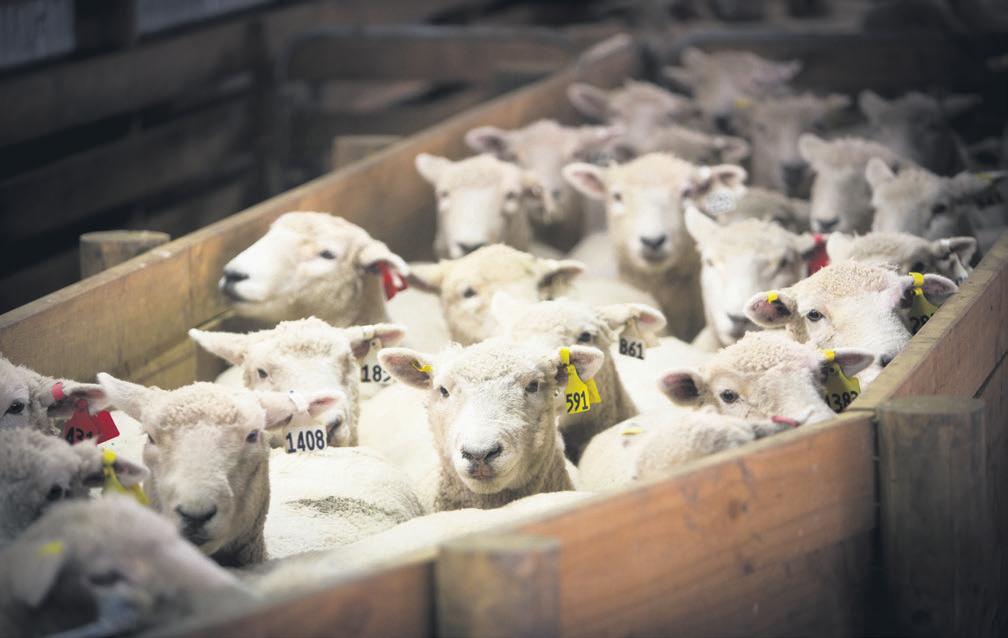
“The amount of sheep and beef farmland being converted to forestry, along with the cumulative impact of a range of other policies on farm viability, is concerning.”

An updated analysis of land-use change from pastoral farming to large scale forestry released by B+LNZ in July showed more than 200,000ha of sheep and beef farms had been sold into forestry in the last five years.
Ashby said this is now being reflected in livestock numbers.
“We have been saying for some time that there needs to be specific limits on the amount of forestry that can be used to offset fossil fuel emissions in the ETS.
“B+LNZ is not anti-forestry, we know many farmers are interested in integrating trees into their farms, but there must be some balance.”
However, the forecast for lambing is expected to slightly increase this spring.

B+LNZ Economic Service Chief Economist Andrew Burtt said this is good news for both farmers and exporters and follows favourable Autumn conditions for ewes at mating.
Meanwhile, the number of total beef cattle at 30 June 2023, estimated at 3.81 million, is down 2.4 percent.

“The number of breeding cows and heifers increased 1.1 percent, with the South Island, mostly, leading the increase. Breeding cow numbers lifted as farmers chose to reduce weaner and trading cattle numbers,” Burtt said.
“The number of beef cattle weaners decreased 3.2 percent overall, but Southland farms bucked the trend and replenished weaner numbers by over 20 percent following two years of dry conditions.”
Gladfield. Ideal
calves, pigs, horses,
sheep, goats and deer.Dropping: Beef + Lamb New Zealand says one of the contributing factors to a drop in breeding flock numbers is land-use change.
‘There needs to be specific limits on the amount of forestry that can be used to offset fossil fuel emissions in the etS.
Julian Ashby
B+LNZ Chief Insight Officer
can pull in your farm system. These could include early weaning a proportion of your ewes and lambs, sourcing off-farm grazing for replacement ewe lambs early and booking killing space now.
Keep a close eye on both financial and feed budgets and consider ways you can make incremental gains financially. Go through farm inputs line-by-line and consider where small savings can be made. They all add up.
Most importantly, look after your mental and physical health. Get off-farm, catch up with friends or play some sport, they all help.
] by Nicky HyslopThere is only so much you can do to prepare for extreme weather events and our thoughts are with those affected.
Ironically, much of Canterbury is looking for spring rain so the phrase ‘it never rains but it pours’ comes to mind”.


Prior to this, we have had a kind winter and spring which has aided lamb and calf survival.
Good lambing tallies are possibly the only bright spot in what is going to be a challenging season ahead, with high input prices and interest rates, flat lamb returns and predicted dry weather.
Many of us have been here before and we will get through this.
It is important to focus on the factors you can control and have a plan in place which includes trigger points at which time actions should be taken. Think about the levers you
Beef + Lamb New Zealand has some great drought-related resources on its website, including tips and advice from farmers who went through the most recent North Canterbury drought.


Last month, B+LNZ called on farmers to help with some ground-breaking research by collecting sheep dung for a Facial Eczema research project. It’s part of a research programme building new knowledge of facial eczema and how we can apply new science to an issue which has been a long-standing problem for farmers.

This three-year study will help B+LNZ understand how widespread facial eczema is in New Zealand. It will help fill gaps in our understanding of its prevalence and whether a warming climate is influencing its distribution.
While facial eczema isn’t prevalent in our region yet, we know it’s coming, so it’s important to be ahead of the game.
FE is associated with a toxin-producing fungus, affects pasture grazing livestock in the North and South Island of New Zealand


and there is no cure. It can cause permanent liver damage resulting in photosensitivity and sunburn. If the animal survives, its production will be limited for life.


It can be costly to farmers, with B+LNZ’s Economic Service estimating the annual cost


of facial eczema to the New Zealand sheep, beef, dairy and deer sectors to be around $332m.


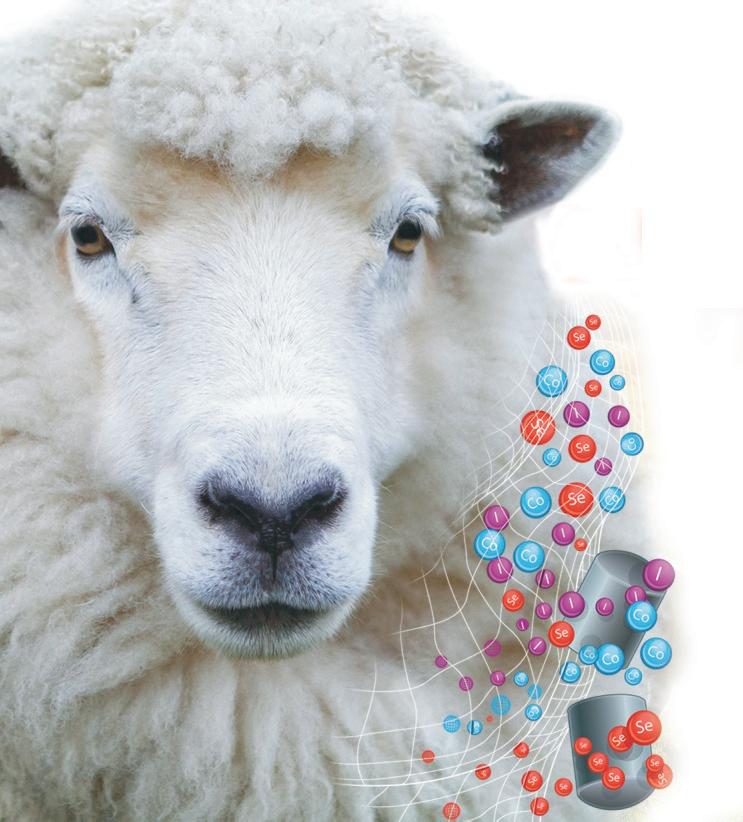

A total of 350 farmers, 22 from each region around New Zealand, are needed to collect samples from October to May each year for three years. Expressions of interest can be registered via the B+LNZ website at: beeflambnz.com/FEstudy. Farmers who take part will be at the forefront of helping shape future tools and solutions for facial eczema management.
Finally, a reminder that tickets to the B+LNZ Awards Dinner, that celebrates the amazing people within our sector, is being held at Te Pae Convention Centre in Christchurch on Thursday 19 October, are now on sale. Details are on the B+LNZ website.


As I write this column, we are preparing for a spring storm and thinking about our colleagues in Southland and Otago who have been hit hard by the severe weather.
‘Keep a close eye on both financial and feed budgets and consider ways you can make incremental gains financially.
The 2023 week got off to a flaming start in the UK recently, with an event organised by Alliance Group and supported by Deer Industry NZ (DINZ).
The spectacular fire and smoke event in Salisbury brought 10 of the UK’s top chefs together with “plenty of barbecue toys to play with” from Big Green Egg and Ofyr, reports coordinator and DINZ contract chef Shannon Campbell.
This was just one of many promotional events taking place in-person and on social media during the week, which took place just ahead of the official launch of the 2023 traditional game season.
They were taking place against strong demand and firmer prices for chilled – with all five venison companies have been offering chilled contracts of between $10 to $10.30 per kg.

New Zealand red meat companies are working to mitigate the deteriorating global conditions impacting red meat prices, however. They will know more after talking to their key European and Middle Eastern customers at the giant Anuga trade fair in Germany next month, many of whom also buy venison from New Zealand, and deer farmers will be keep-
ing a keen eye out for updates on the prospects for 2024.
Velvetting, which contributes a complementary revenue stream for deer farmers, will also start soon. Reminders of compliance rules are being sent out by DINZ to velvetters so they can put their best feet, and heads, forward for the new 2023-2024 season.
Among them are paying National Velvet Standards Body fees before 20 November, booking the supervisory visit/consultation with their veterinarian – so it’s all done before the 15 December deadline – and brushing up on the knowledge an audit will require by checking through the NVSB manual.
The Regulated Control Scheme for Velvet Harvest demands clean and tidy sheds and freezers, while the deer industry’s traceability scheme for velvet requires VelTrak® tags on all velvet for human consumption.
Velvetters are also reminded of the need to approve their electronic Velvet Status Declaration for each batch sent from farm.
With Spring here, but with some deer still on crops, some farmers may have been thinking about joining the growing numbers wintering their deer, especially stags, in barns
next year. While it’s a highly effective way to manage pastures through winter, it’s also an expensive business. For those weighing up the pros and cons, DINZ has just published a new Deer Fact, ‘Wintering Deer Indoors’.
This is supported by an analysis by AgResearch scientist David Stevens of the capital and operating costs.

Meanwhile, the work on accounting for agricultural emissions reporting continues. Another submission on behalf of sheep, beef and deer farmers has been made by DINZ and B+LNZ, this time on the government’s proposal to defer the start of Emissions Trad-
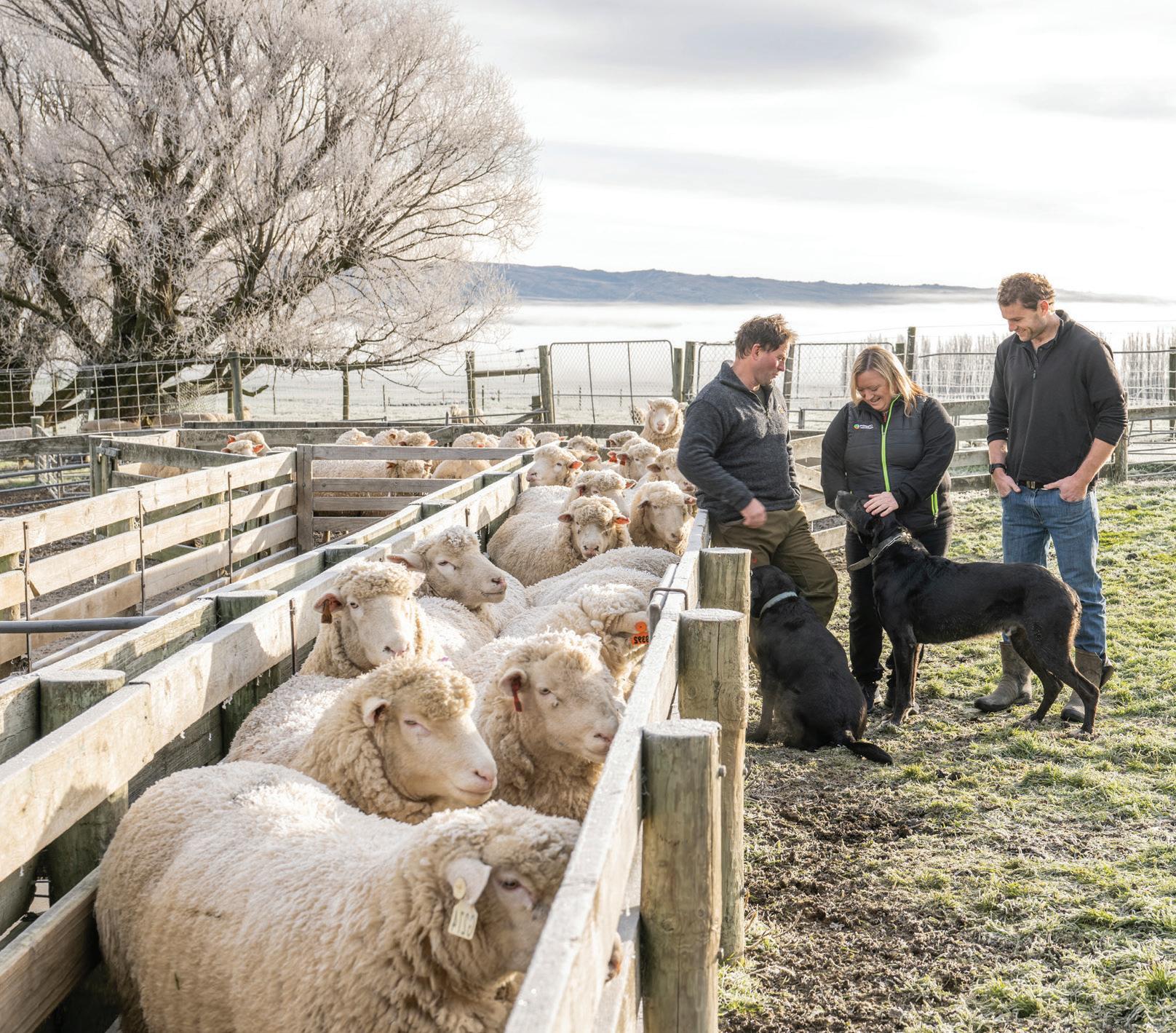
ing Scheme reporting of agricultural emissions from 1 January 2024 by two years to 1 January 2026.

DINZ is supportive of the later start date.
In the submission, it also repeated the deer industry’s position that pricing is “not an appropriate tool to reduce emissions,” that there should be “strong consideration of the sector’s progress towards emissions targets” and “full recognition and reward for the sequestration taking place on-farm.”
DINZ strongly believes next year’s review by the Climate Change Commission should be looking at the warming impact of emissions rather than gross emissions.

The industry board will be working with government, whether new or incumbent, on the issues facing deer farmers.



Plant fungal diseases can be devastating for horticulture and agriculture – in the worst cases, wiping out entire crops.
] by Kent caddick
But Lincoln Agritech scientists believe that altering the bacteria associated with diseasecausing fungi will lead to new strategies to protect crops.

They have just won a $1m contract from the Ministry of Business, Innovation & Employment (MBIE) to develop attenuated (weakened) variants of disease-causing fungi that can be used to prime plants and protect against fungal diseases.
“In previous research, we found that the bacteria associated with a fungus affect its ability to cause disease,” Dr Jin-Hua Li said.
“Our novel approach will make fungi unable to cause disease by changing the bacteria that are associated with the fungi.”
Working with scientists from Scion, Utrecht University in the Netherlands, and the Foundation for Arable Research, Lincoln Agritech scientists will test the concept on brassica plants (a genus of plants that includes cabbage, cauliflower, and broccoli).

“We will test these attenuated variants on brassica plants, such as broccoli and cabbage,” Dr Li said.
“We will coat seeds with the altered fungus, then try to infect the seedlings with the original fungus to see whether our new products have protected the plant from infection.”
Once the concept has been proven in brassica plants, it will be applied to cereal crops, and could potentially be used on several horticultural crops.
This new approach to protection will not
only help New Zealand’s horticulture and agriculture industries, but it also provides an exciting new export opportunity.
“The global agrochemical industry is pivoting to develop new biological alternatives in response to urgent global demands for reduced chemical use,” Li said.

“For example, EU regulations are demanding a 50% reduction in chemical pesticide use by 2030.




“Our novel biotechnology will help exporters meet the growing market demand for nonchemical disease control. It will also enable the production of targeted next-generation bioprotectants that will propel New Zealand toward global leadership in sustainable agriculture.”
The research programme will run for two years.
Researching: Lincoln Agritech scientist Dr Jin-Hua Li says their research hopes to make fungi unable to cause disease by changing the bacteria that are associated with the fungi.


Export log prices slipped back slightly in September on the back of continuing softening in China. For South Island Ports, wharf gate prices have also nudged back rendering many harvest operations to a halt, again.


As was expected, the drop in month-onmonth production is now seeing a slow-down in deliveries to some domestic sawmills. Despite not being swamped with orders themselves, log shortages are not helpful.
Despite the apparent negatives and you would think low production levels in NZ, we will ship 60 log vessels to China in September versus the normal 40 to 45. Much of this is the result of a stock build in NZ forests when lower production continued but stocks were held in forests pending price increases.
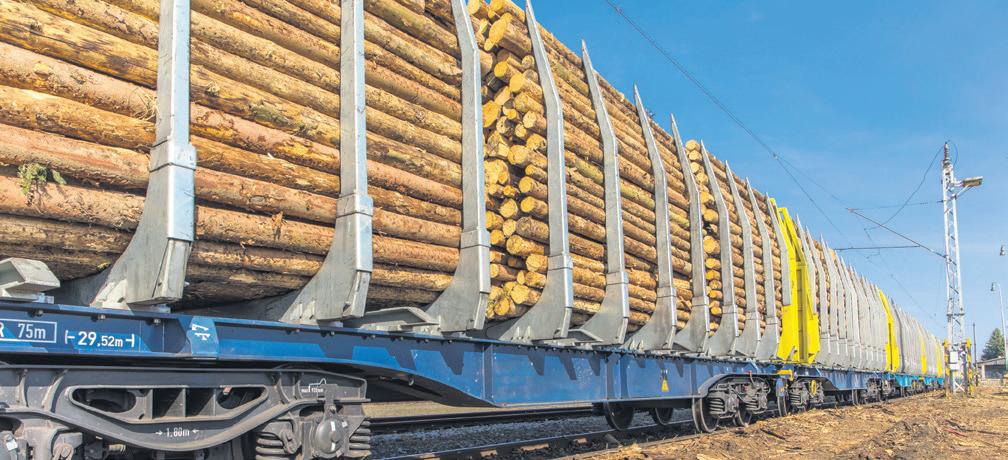
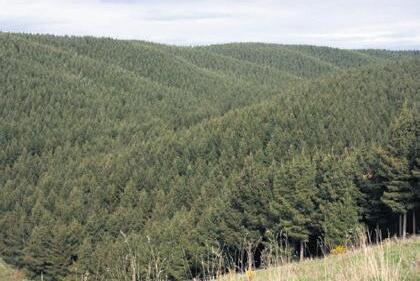
The high rate of deliveries to China will not help our situation. Everyone that matters in China knows what is going to our Ports every week and they will be more nervous than they already were. The net result is likely to be weakness in price and appetite for change until NZ forestry Inc can match supply and demand.




Importantly, daily usage in China continues to chug along at just over 50,000m3 per day and that is a log of logs. The challenge then is entirely with NZ forest owners to realise the new norm and figure out how we are going to match NZ daily production to something close to the daily off take in China. There is a very important point to be made here. Many times, I have heard criticism of how China is controlling us and how they ma-
nipulate prices to their disadvantage. I do not know what happens in other commodities, but in the case of logs nothing could be further from reality.
NZ is by a large margin, the dominant supplier of softwood logs to the eastern seaboard of China. Our long run average is about 60%, right now over 80%. And that dominance is achieved because we have a stable government, a reliable, efficient work force, very good relationships with China and we have the wood fibre they want.


At current CFR levels, other countries are excluded from supply. In the softwood space these include Uruguay, Europe, Australia and the Pacific North West. Russia and Chile are key suppliers of softwood lumber. Important-
ly also China has their own forests.



In general terms this is lesser preferred Poplar and Eucalyptus species but can displace NZ Radiata pine if CFR prices are too high.
All of this tells us there is a fine line between what will be a good price for NZ forest owners versus what levels would see alternative supplies enter the market. And I believe we know where that is being about USCFR$120 per JAS. That is the selling price for market indicator for a cubic metre of A grade log landed in China.
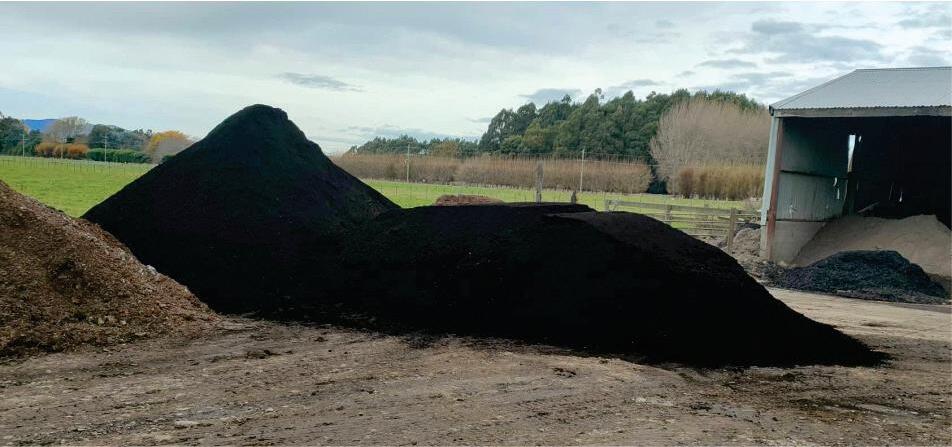
Right now, as at mid-September, the selling price is US$112 and under downward pressure due to the market being dominated by negative tones.
So, when we drill all of this down to our reality, it is NZ that dominates the market and controls the price points in China. Our further reality is we have been living the last 5 years in the hiatus of a sellers’ market, because the construction sector in China has been strong and we have been able to call the price.
Mind you we haven’t always been good at that, often driving the price up to let competitor volumes in until the blunt instrument called price becomes the supply mechanism. Not rocket science is it?


The fundamental shift in our new future is demand is weaker, and we have moved to a buyers’ market, because on an average day NZ can produce more wood than the market wants. Again, the challenge is entirely NZ’s.
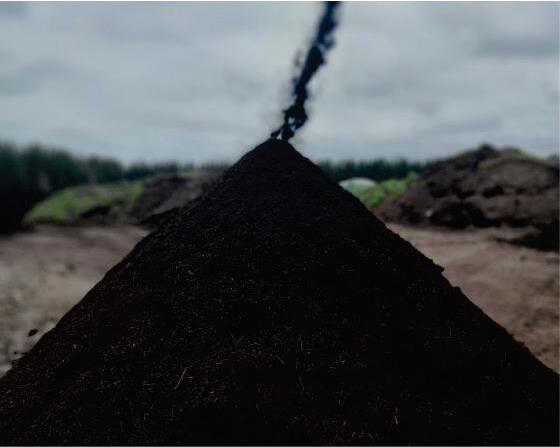

And if you thought the wood fibre sector has some challenges, I noted in a recent report, China is ramping domestic milk production on the back of NZ Dairy herd progeny and farm management systems imported from Kiwi’s. A looming self-sufficiency shift from 25% to 45% suggests to me milk sellers and wood sellers need to get in the same aeroplane and start finding new markets for our key commodities.
As always, please remember the thoroughly important message, “it remains, as always, fundamentally important, the only way forward for climate, country and the planet, is to get out there and plant more trees”.

CNH Industrial announced the establishment of a new retail footprint for New Holland machinery in New Zealand earlier this year, with many of CNH Industrial’s Case IH dealerships taking over dealer responsibilities for the New Holland brand.
In the South Island, Case IH dealer Cochranes, which has branches in Amberley, Leeston, Ashburton and Timaru, has just opened a new branch in Blenheim to assist with the addition of New Holland to Cochranes’ brand portfolio and the associat-

ed increased customer demand for products, parts and service requirements.
“It’s certainly been a big year, but this latest expansion has gone really well, as has the transition to New Holland, thanks to the support of CNH Industrial and all our staff, who are enthusiastic about the opportunity and really got on board,” Cochranes’ managing director Chris West said.
“New Holland customers have been very welcoming, too, so there’s a lot to look forward to and exciting things ahead,”
While acknowledging New Zealand farmers in every sector of the industry were facing challenges currently, West said the outlook for Cochranes’ regions was good for the remainder of the year, and that machinery supply was no longer an issue, with good stock levels across both the Case IH and New Holland brands.
Meanwhile, Stevenson and Taylor who have operated a Case IH branch in Waipukurau, Central Hawke’s Bay, since their inception in 1951, have recently undergone a significant expansion with the official opening of a new branch in nearby Hastings.
“We always had a second dealership in our long-term plan, but with the changes around New Holland this year and the opportunity to represent both the Case IH and New Holland brands in New Zealand, we realised we needed to look at expanding both our dealership space and our staffing numbers, so the new dealership in Hastings became an immediate priority,” Stevenson and Taylor general manager Robby Smith said.

Well the battle for the treasury benches has calmed down and now it is time to get on with the job of running our country as a business.


Reminds me of the cartoon of Charlie brown who was asked if all fairy tales start with “once upon a time” his answer was “no, most start with if I am elected...”
But jokes aside, there is much to do to return the honey to the land of milk and honey. The world is simply a marketplace, and we are simply one of a raft of countries trying to get the sales.
What must worry most producers, if not all of them, is the difference between having access to a market and having top salespeople actually benefitting from that access.
Someone who produces goods or services for our domestic market knows full well that they must put their product in front of their prospective buyers and prove that the buyers should buy theirs rather than another product.
It is called advertising and selling, and it works. However, are our marketing folk doing enough to get the best prices and biggest orders possible? Many of us answer that question with a no. So, what to do to get the honey flowing back into our economy?

As someone who has survived for years in the media world, I can assure you that advertising certainly works, in fact it is vital.
As I have said recently one of our best advertising tools is our sporting teams and indi-



viduals, but I think we need more.
OK, let’s look at our industry and what we can offer a sales team.
The world’s best produce, produced with low costs, animal, and soil friendly and the ability to provide niche products.
Plus, we have volumes which can be packaged and presented in a manner that tempts the end user without having to worry about huge bulk orders. A case of niche rather than broadacre.
That has to be our advantage as what we are is a land of producers who then sell to wholesalers who sell to the end user.
My simple mind suggests, therefore, that
Join us for an opportunity to catch up with some of Silver Fern Farms' directors and executives. We'll be sharing a market update and outlook, you’ll hear about initiatives underway to create new forms of value, plus take the opportunity to have your questions answered directly.
Silver Fern Farms recognises that this is a challenging time on farm. We hope you’re able to join us.
we should put all our effort into loading the wholesale folk and let them spend money on marketing our sports teams, race drivers and
others, because they are our real market target, not the actual person who buys our wine meat or kiwifruit.
‘We should put all our effort into loading the wholesale folk and let them spend money on marketing our sports teams, race drivers and others
